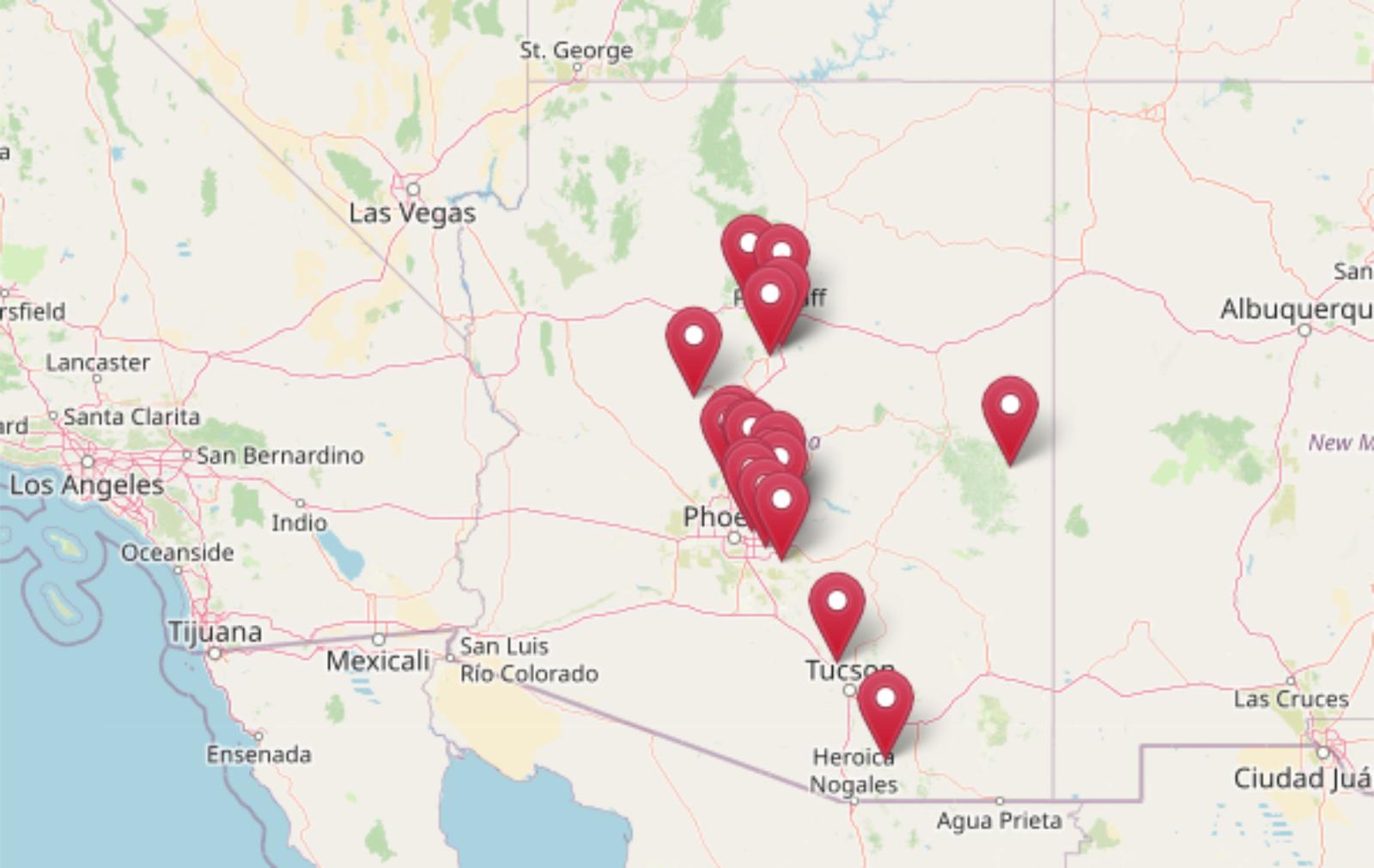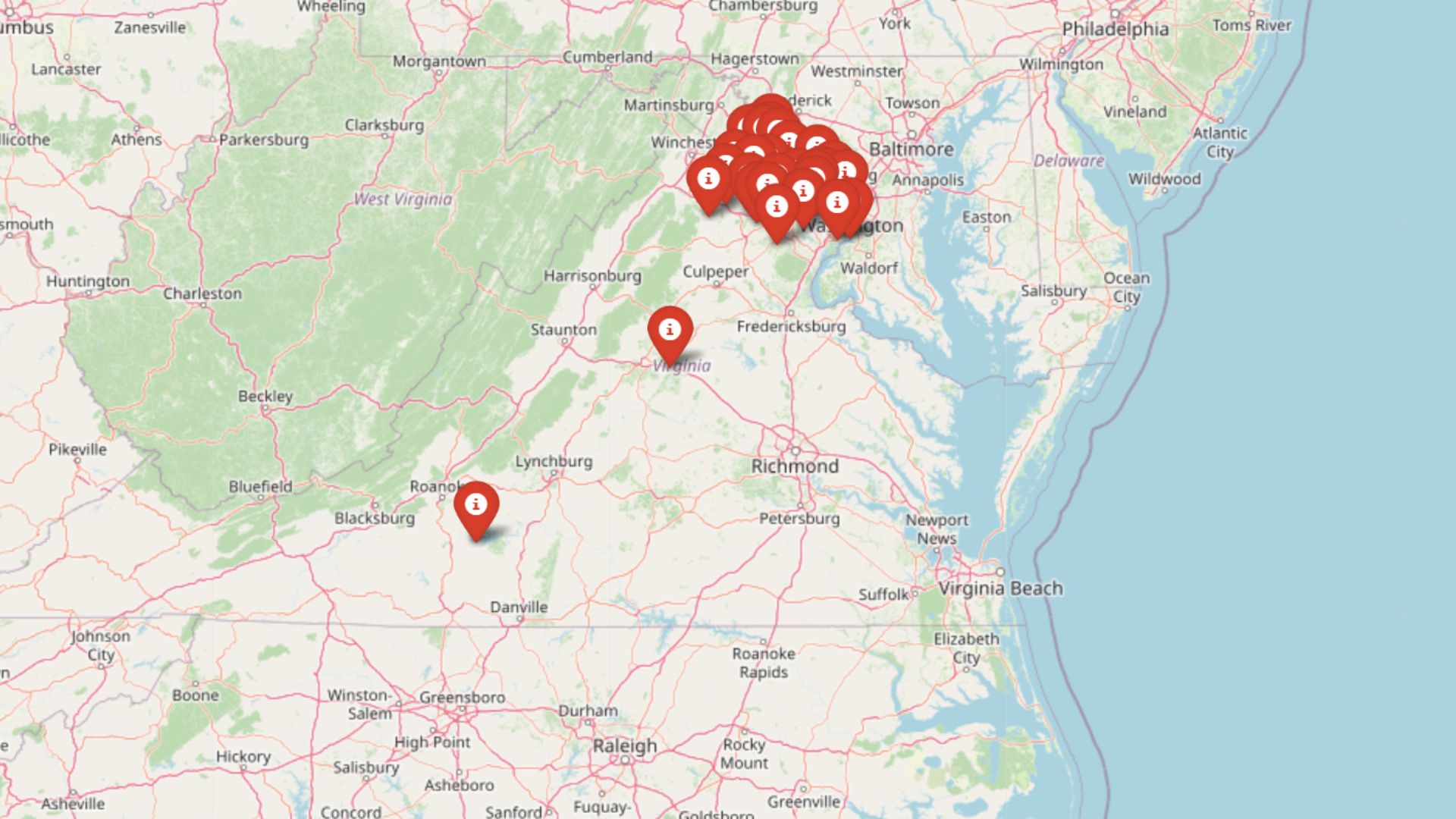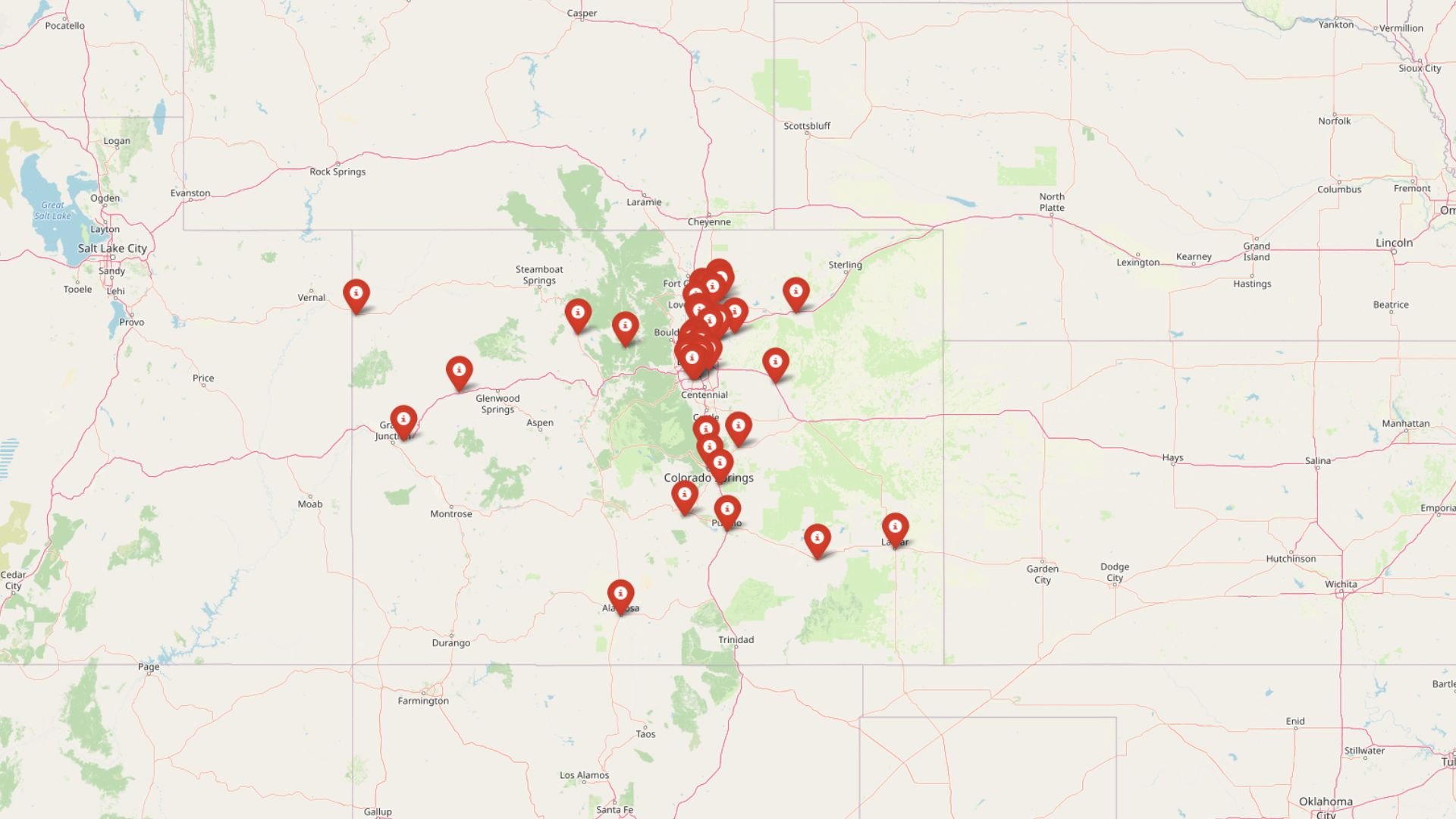
Colorado’s sweeping mountain views and outdoor adventures make it look like a retiree’s dream, but living there isn’t always easy for older adults. Many towns lack the quiet streets, walkable neighborhoods, and reliable services that make retirement comfortable. According to the Overall Retirement Score (ORS), which factors in walkability, noise, public transit, and access to amenities, these 30 towns scored below 38—a clear sign of challenges for seniors.
From snowbound mountain villages to traffic-heavy Front Range suburbs, the realities can include limited healthcare access, minimal public transit, and higher living costs. These are the Colorado communities where the retirement dream meets real-world hurdles in July 2025.
30. Fort Morgan – Agricultural Service Center
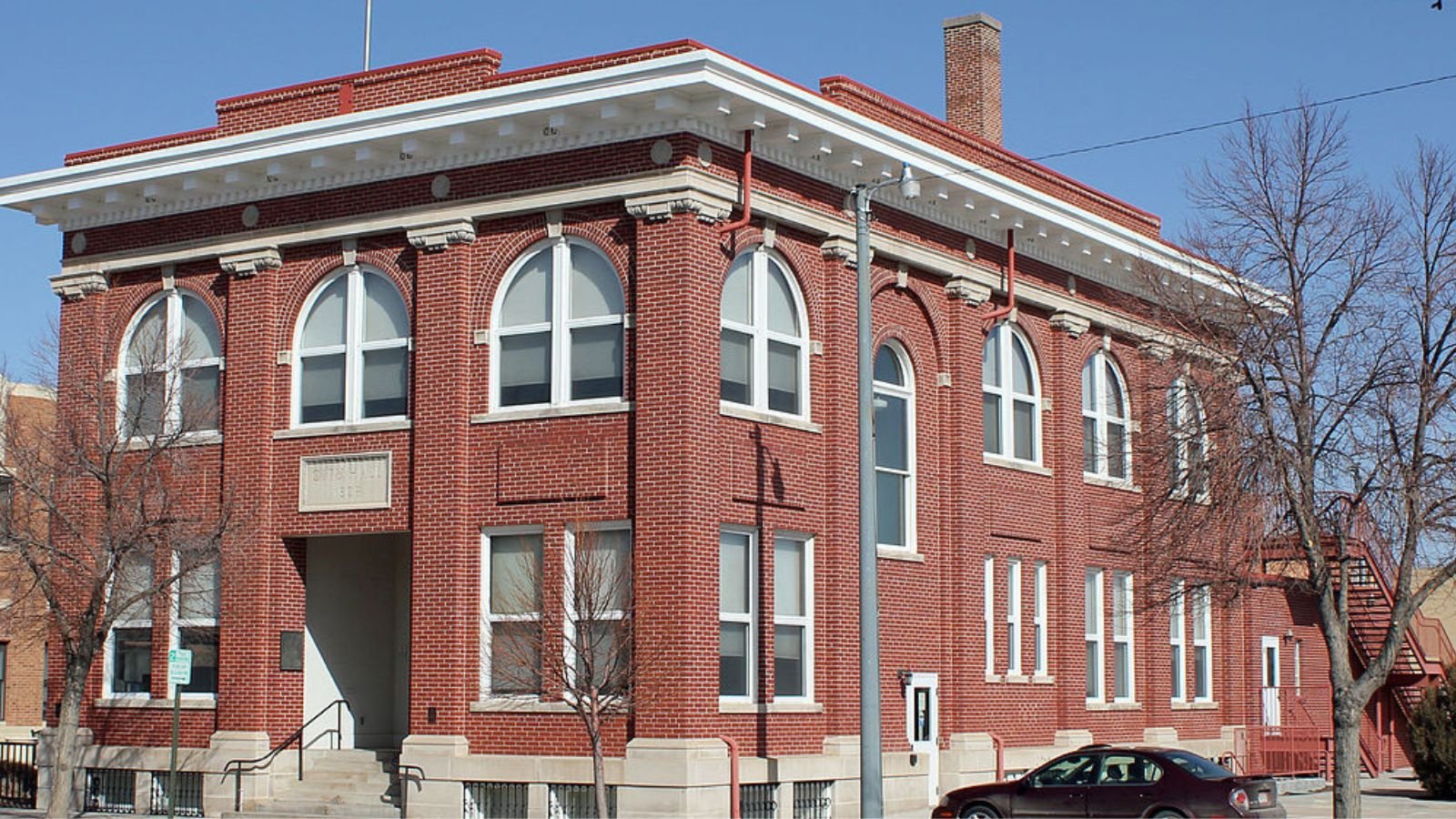
Fort Morgan serves as Morgan County’s agricultural hub, where 11,500 residents support farming and livestock operations that define the local economy but provide limited retirement amenities. The community features some cultural programming and healthcare services, but entertainment options and specialized medical care remain limited compared to larger urban areas. Public transportation doesn’t exist, making personal vehicle ownership essential for accessing services beyond the immediate downtown area.
The downtown core offers some walkable blocks with local businesses, but residential neighborhoods lack comprehensive sidewalk networks. Healthcare services include a regional medical center, but specialized care often requires trips to Denver or other Front Range cities through increasingly busy rural highways.
Fort Morgan – ORS 32.34
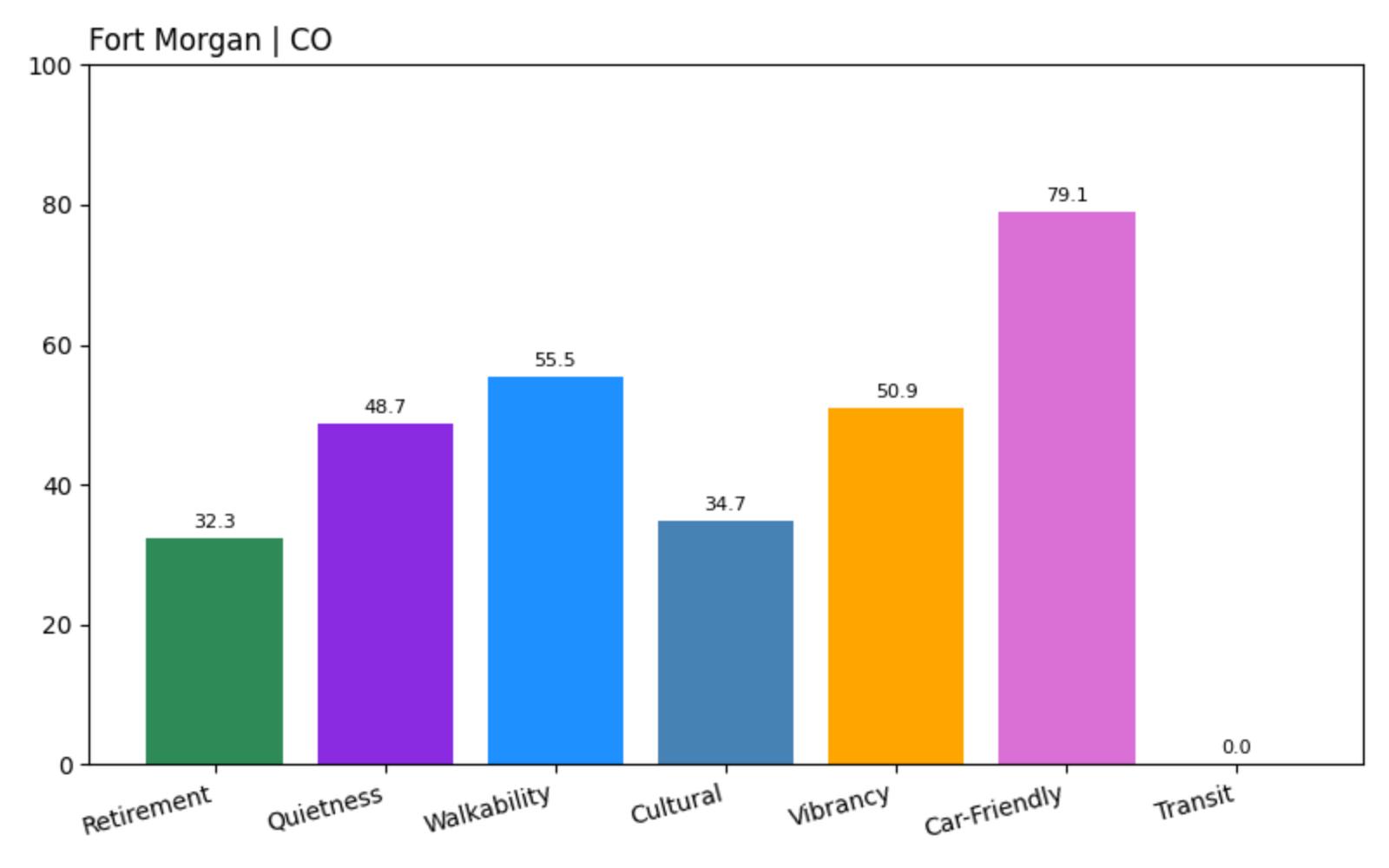
- Overall Retirement Score: 32.34
- Quietness: 48.68
- Walkability: 55.50
- Cultural: 34.71
- Vibrancy: 50.90
- Car-Friendly: 79.07
- Transit: 0.00
Fort Morgan’s moderate walkability and vibrancy reflect its role as a regional service center, while decent cultural programming provides some community engagement. However, zero transit and moderate quietness (affected by agricultural operations) create limitations. The agricultural economy provides community identity, but retirees seeking diverse services and entertainment will find options constrained by rural location.
29. Alamosa – San Luis Valley Isolation
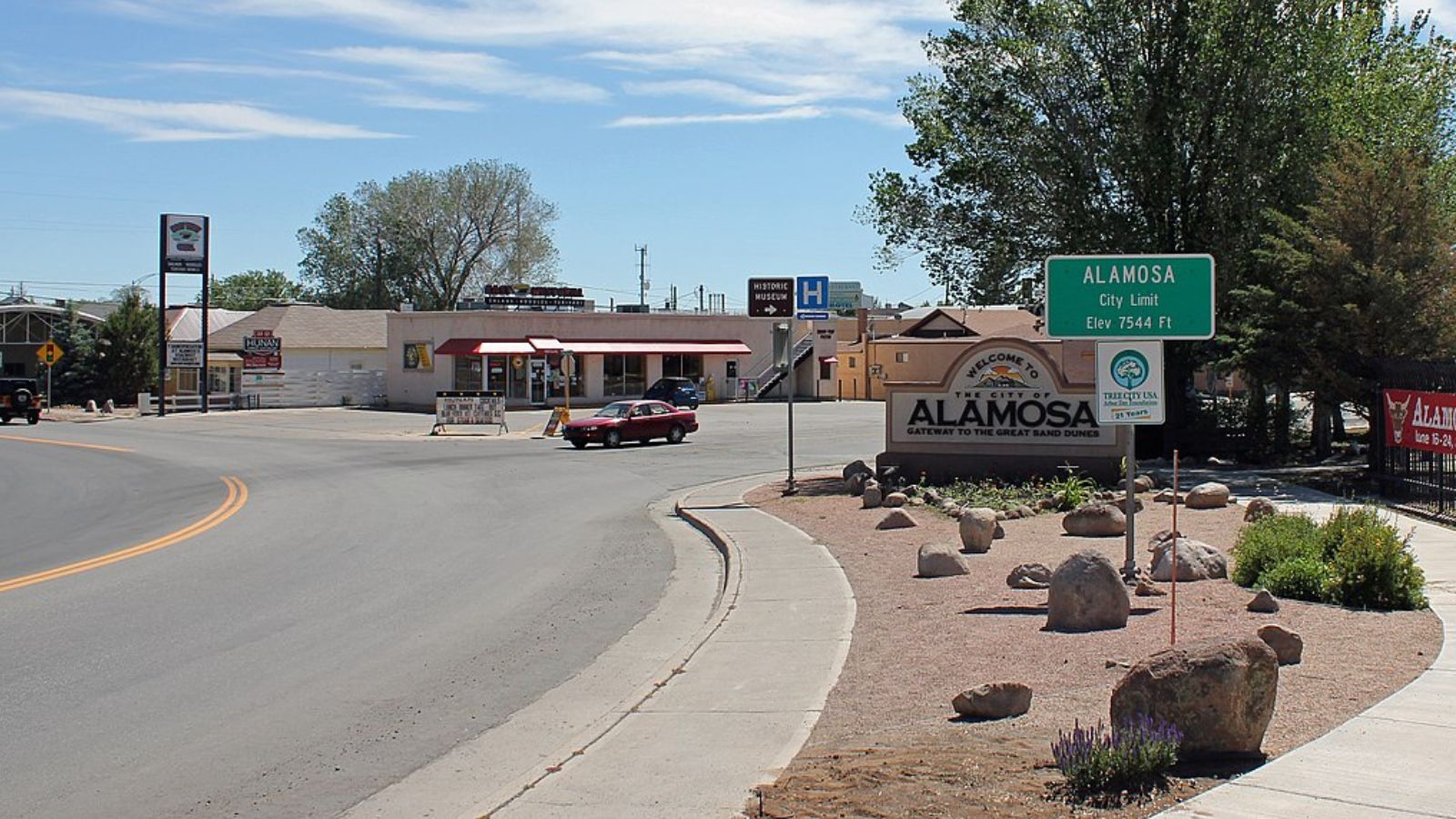
Alamosa anchors Colorado’s remote San Luis Valley at 7,544 feet elevation, where 9,000 residents live surrounded by some of the state’s most spectacular but isolated high desert country. The community serves as a regional center for the vast agricultural valley, but its remote location means limited access to specialized services and cultural amenities found in larger cities. Winter conditions can be severe, with some of Colorado’s coldest temperatures regularly recorded in the valley.
Healthcare services include San Luis Valley Regional Medical Center, providing better local medical access than many rural Colorado communities, but specialized care still requires long drives to Denver or Colorado Springs. Cultural programming exists through Adams State University and community organizations, but entertainment options remain limited by the remote location.
Alamosa – ORS 32.28
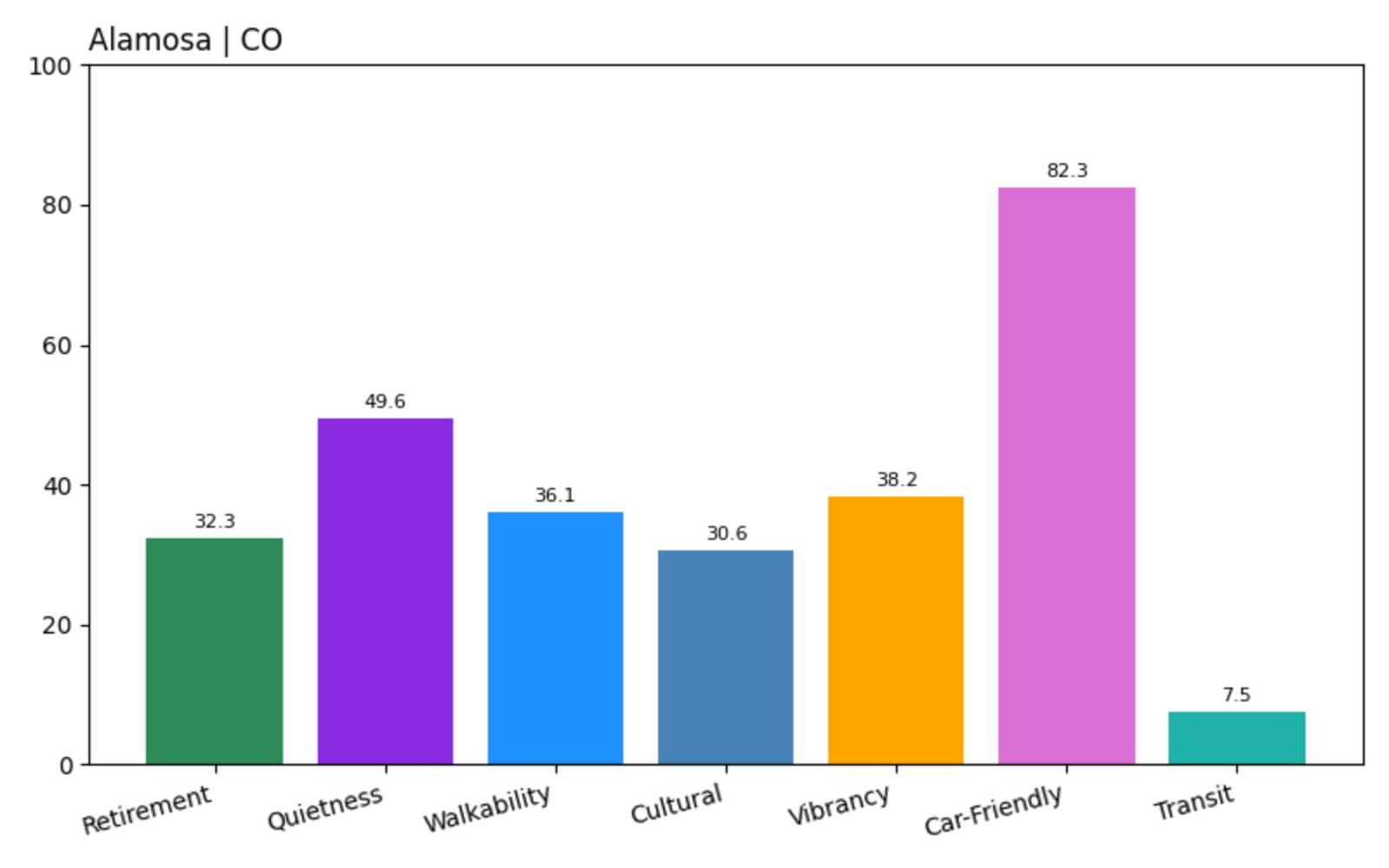
- Overall Retirement Score: 32.28
- Quietness: 49.56
- Walkability: 36.07
- Cultural: 30.62
- Vibrancy: 38.20
- Car-Friendly: 82.34
- Transit: 7.49
Alamosa’s moderate scores reflect its role as a regional service center in an isolated area. The decent car-friendliness enables regional travel, while some cultural programming exists through the university. However, limited walkability and minimal transit create mobility challenges, while the remote location constrains entertainment and specialized service options. University connections provide some amenities, but retirees need more comprehensive urban services.
28. Westminster – Traffic and Urban Sprawl
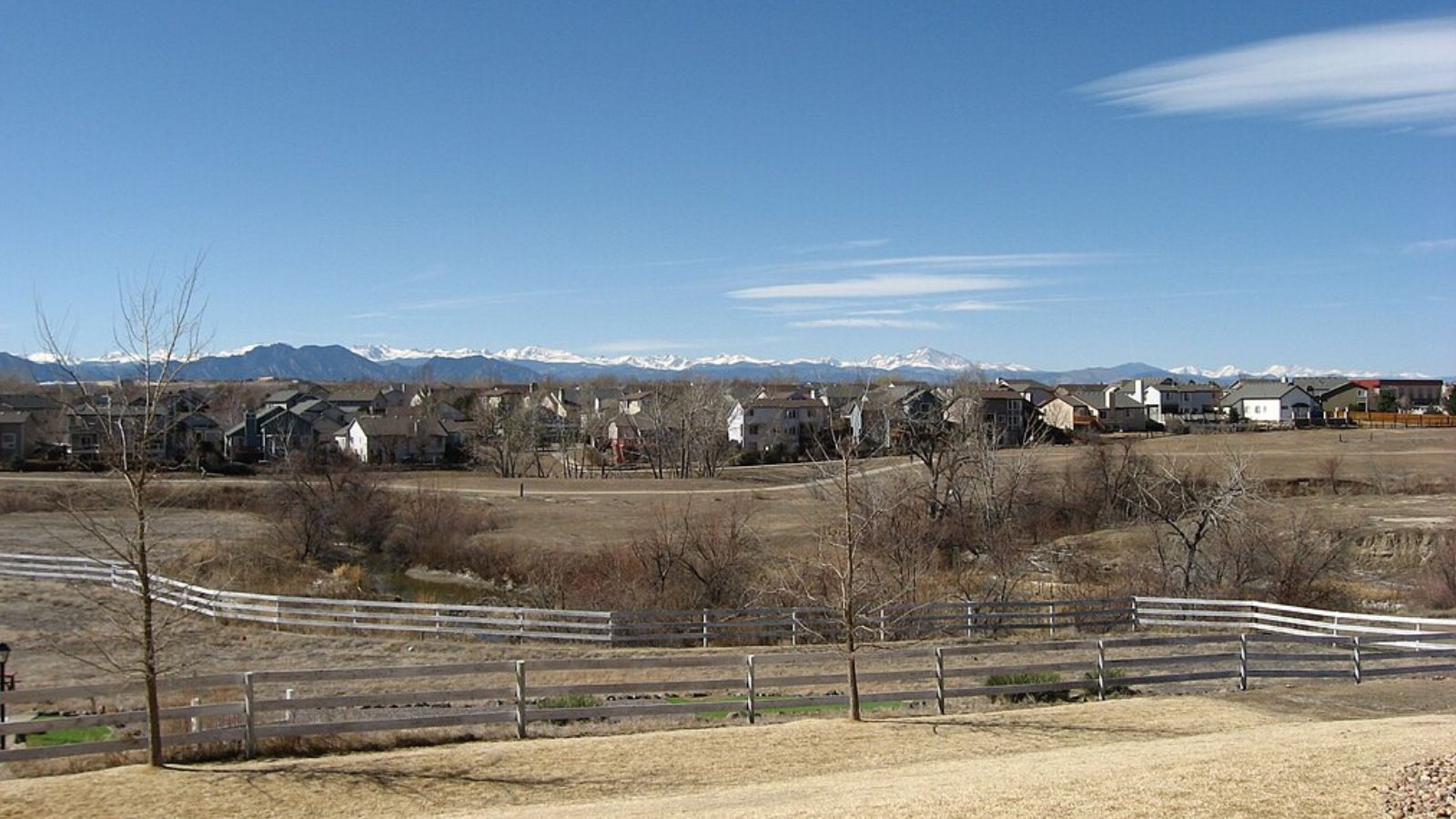
Westminster stretches across northern Jefferson and Adams counties as a sprawling suburb where 115,000 residents create traffic congestion that affects quality of life throughout the community. Major corridors like Highway 36 and Sheridan Boulevard carry constant traffic that generates noise and air quality concerns, while the suburban layout requires extensive driving for most activities. The city’s rapid growth has outpaced infrastructure development, particularly public transportation that could reduce car dependency.
Cultural amenities include the Butterfly Pavilion and various community centers, but the sprawling layout means long drives between activities and services. Healthcare access requires navigating busy traffic to reach medical facilities, while public transportation provides limited coverage despite proximity to Denver’s regional transit network.
Westminster – ORS 32.26
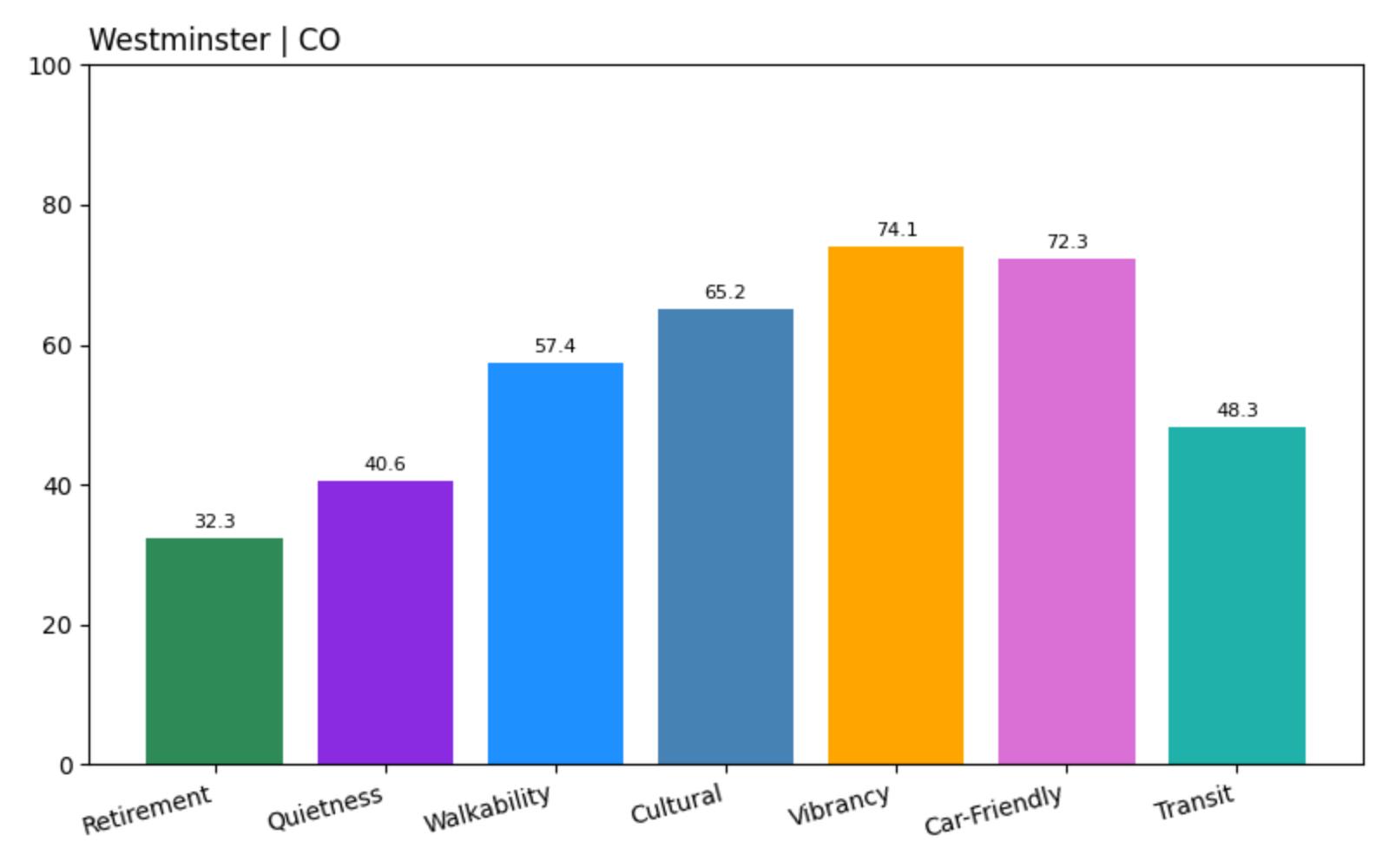
- Overall Retirement Score: 32.26
- Quietness: 40.61
- Walkability: 57.38
- Cultural: 65.18
- Vibrancy: 74.06
- Car-Friendly: 72.26
- Transit: 48.30
Westminster’s good cultural and vibrancy scores reflect suburban amenities and programming, while moderate transit provides some regional connectivity. However, the low quietness score indicates persistent traffic noise, and the suburban sprawl requires significant driving despite some walkable areas. Urban retirees comfortable with car dependency might adapt, but those seeking peaceful residential environments will find traffic concerns problematic.
27. Lamar – Southeastern Plains Isolation
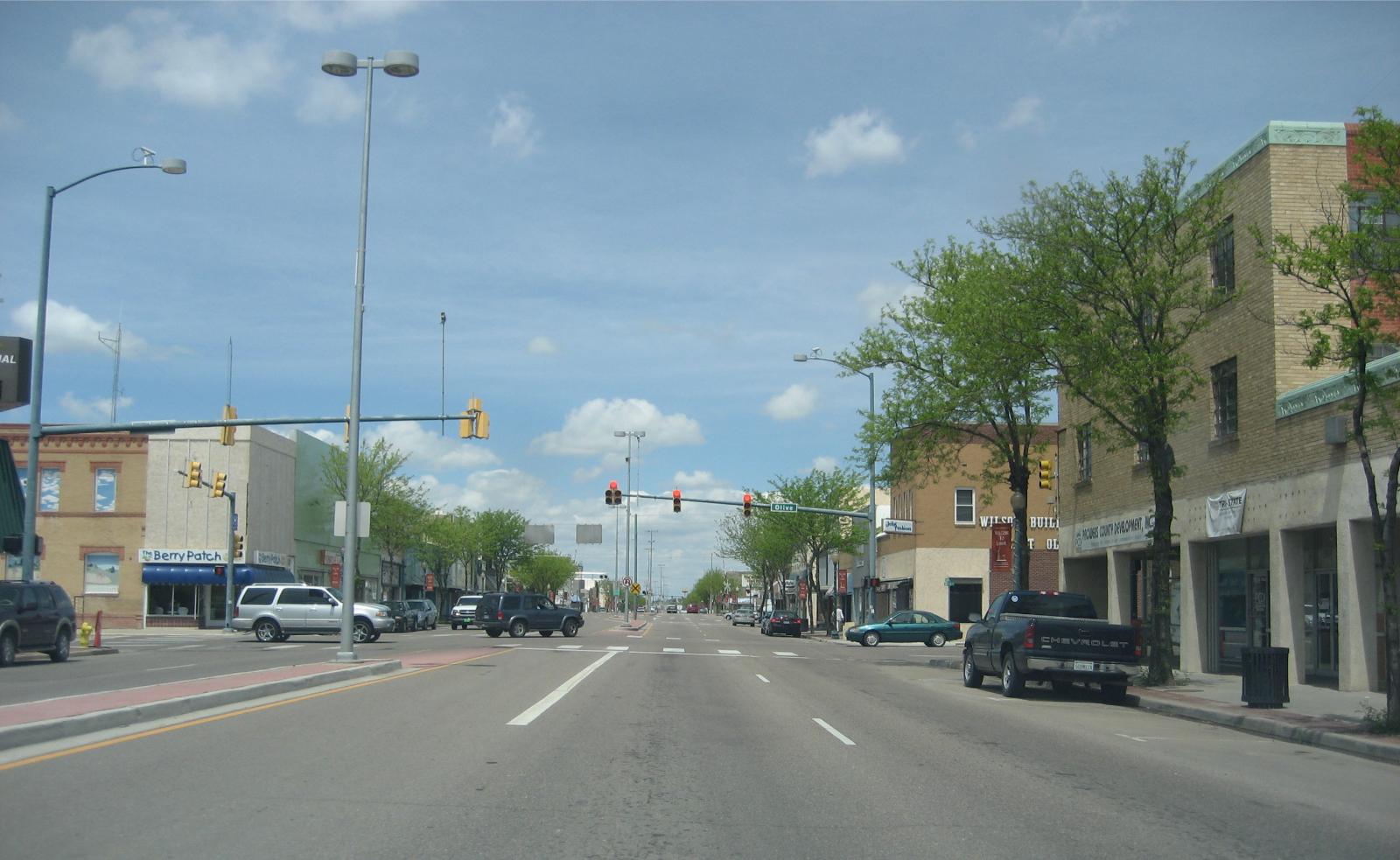
Lamar sits in Prowers County’s agricultural plains near the Kansas border, where 7,700 residents live in one of Colorado’s most isolated communities. The distance from major urban centers means limited access to specialized services, cultural amenities, and healthcare options that many retirees require. The agricultural economy provides community identity but few year-round entertainment options for residents seeking active retirement lifestyles.
The downtown area features some walkable blocks with local businesses, but residential neighborhoods lack comprehensive pedestrian infrastructure. Healthcare services include Prowers Medical Center, but specialized care requires long drives to Colorado Springs or Denver across increasingly busy rural highways. Public transportation remains extremely limited.
Lamar – ORS 32.07
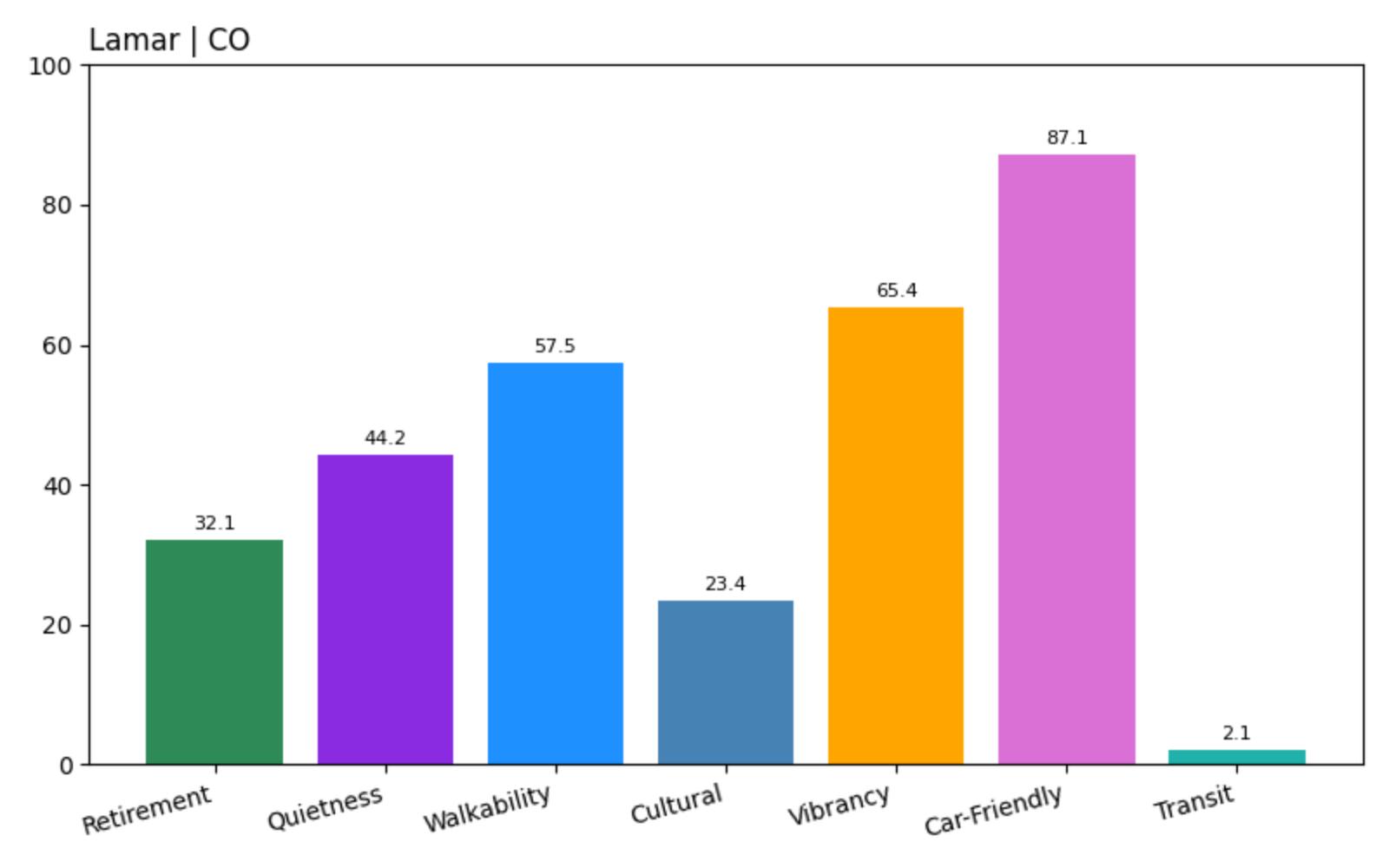
- Overall Retirement Score: 32.07
- Quietness: 44.18
- Walkability: 57.46
- Cultural: 23.40
- Vibrancy: 65.40
- Car-Friendly: 87.09
- Transit: 2.08
Lamar’s high car-friendliness and decent vibrancy reflect its role as a regional center, while moderate walkability applies to the downtown core. However, limited cultural programming and minimal transit create gaps in retirement amenities. The agricultural setting provides community character, but retirees seeking diverse services and entertainment will find options severely constrained by geographic isolation.
26. Colorado Springs – Traffic and Tourist Crowds
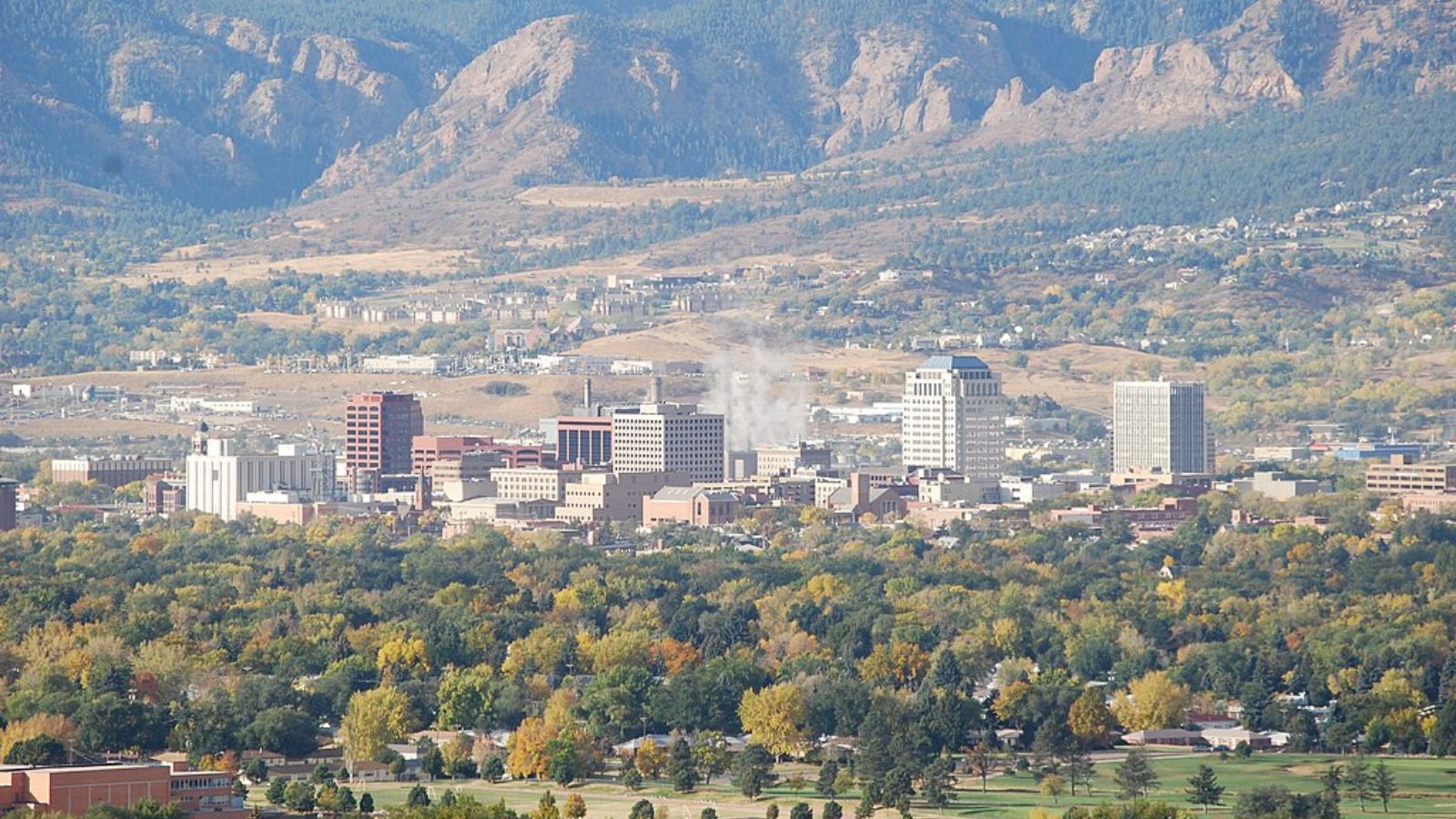
Colorado Springs packs 480,000 residents into a sprawling metropolitan area where military installations, tourism, and rapid growth create traffic congestion that affects daily life throughout the community. Popular attractions like Pikes Peak and Garden of the Gods bring constant tourist traffic, while the military presence adds to roadway congestion and noise concerns. The rapid population growth has strained municipal services and infrastructure.
Healthcare access includes major medical facilities, but navigating traffic to reach appointments can be challenging for older adults. Public transportation remains limited despite the city’s size, while the sprawling layout requires extensive driving for most activities. Air quality concerns from traffic and dust storms affect outdoor activities.
Colorado Springs – ORS 31.89
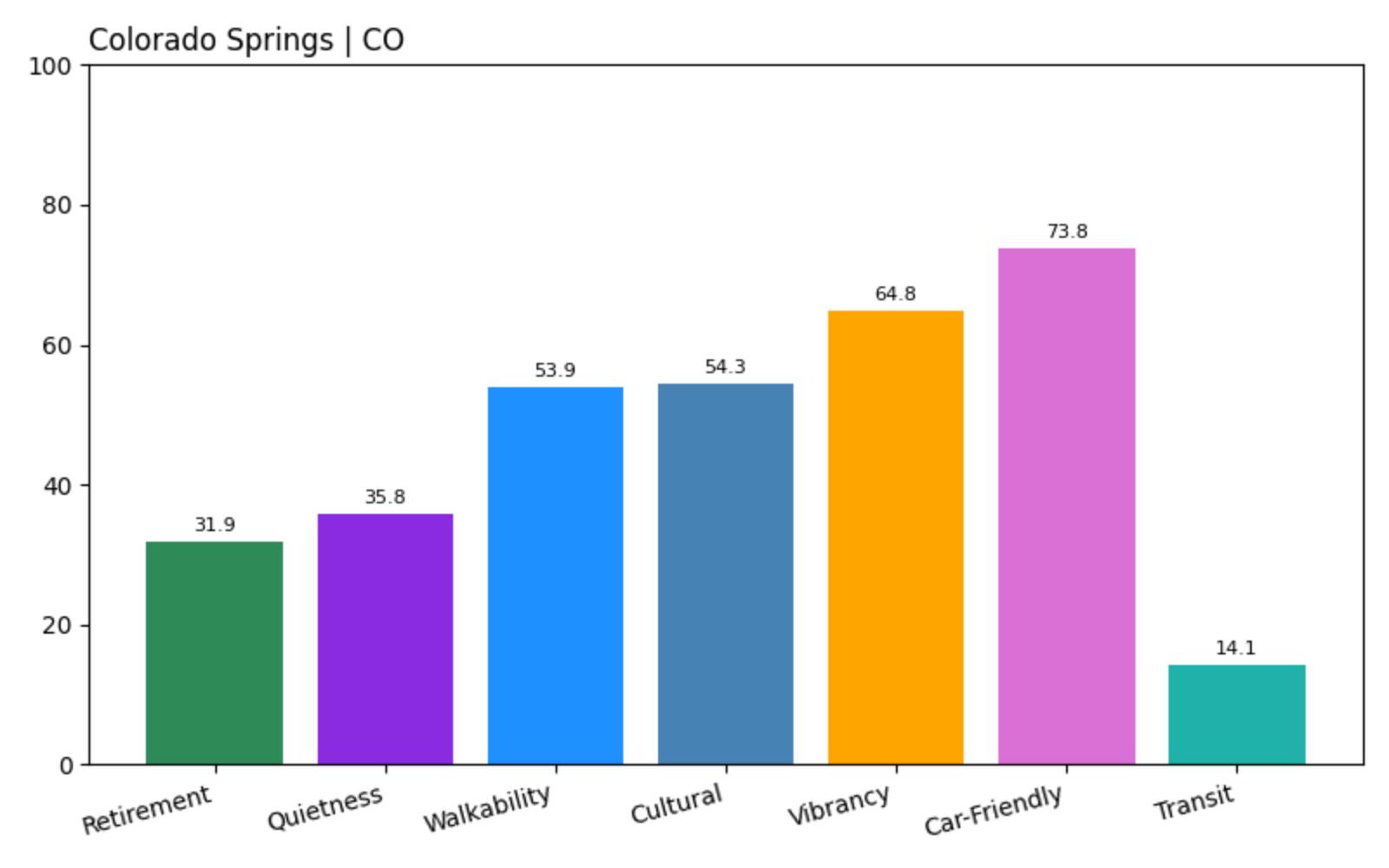
- Overall Retirement Score: 31.89
- Quietness: 35.76
- Walkability: 53.94
- Cultural: 54.34
- Vibrancy: 64.85
- Car-Friendly: 73.83
- Transit: 14.12
Colorado Springs’ moderate cultural and vibrancy scores reflect urban amenities, while decent walkability applies to certain districts. However, the low quietness score indicates persistent traffic and tourist-related noise, while limited transit creates car dependency. The military and tourism economy provides services but also generates congestion that affects quality of life for retirees seeking peaceful residential living.
25. Dacono – Oil Field Development
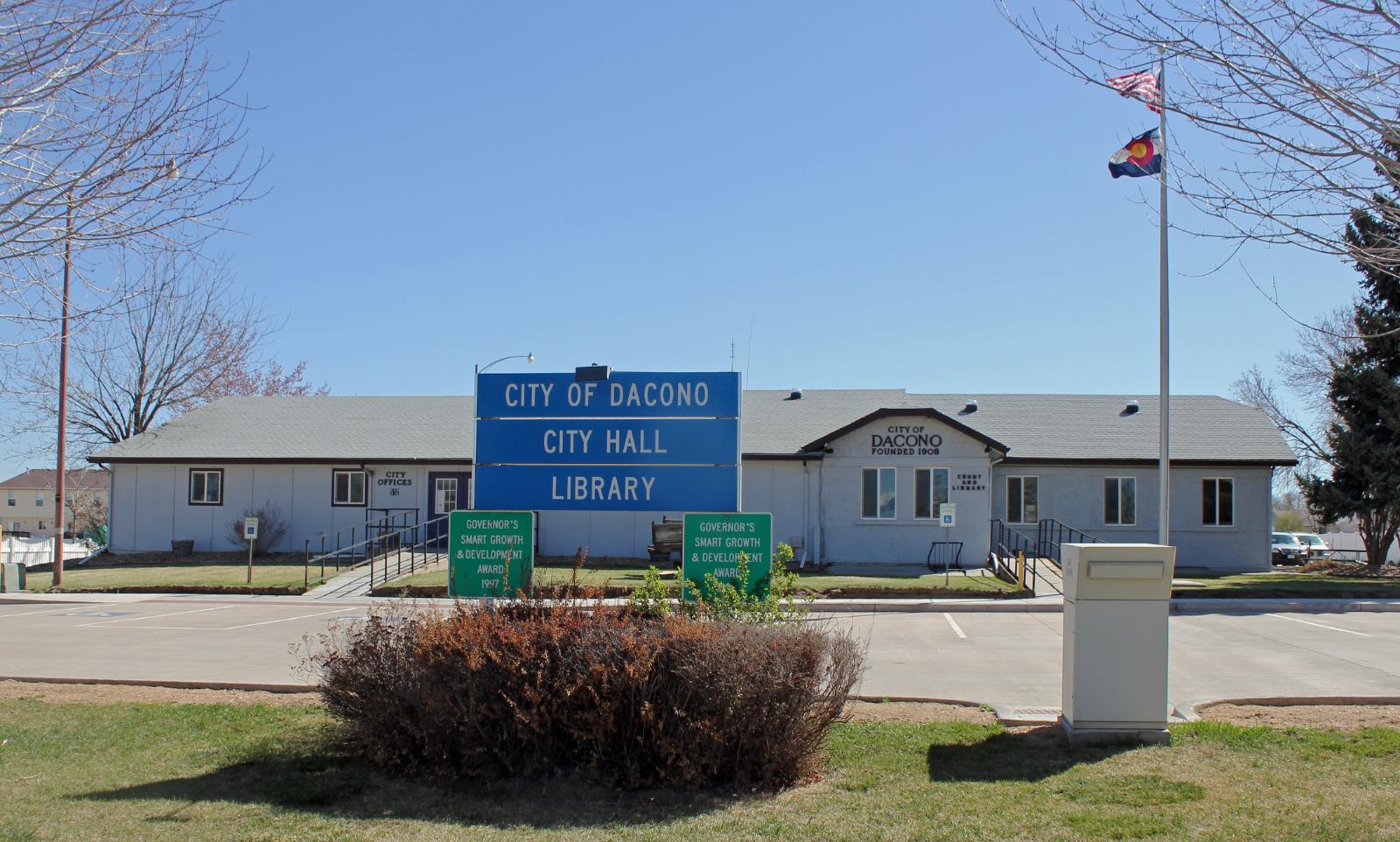
Dacono balances suburban growth with active oil and gas operations in Weld County, where 5,900 residents live amid ongoing fracking activities that affect air quality and community character. The energy industry brings economic benefits but also environmental concerns including air pollution, truck traffic, and noise from drilling operations. Recent residential development has created suburban neighborhoods adjacent to industrial activities.
Cultural programming exists through community facilities, but limited public transportation and ongoing industrial activities affect quality of life. Healthcare services require drives to Brighton or Longmont, while shopping and dining options remain limited within the community. The industrial character concerns many retirees sensitive to environmental quality.
Dacono – ORS 31.33
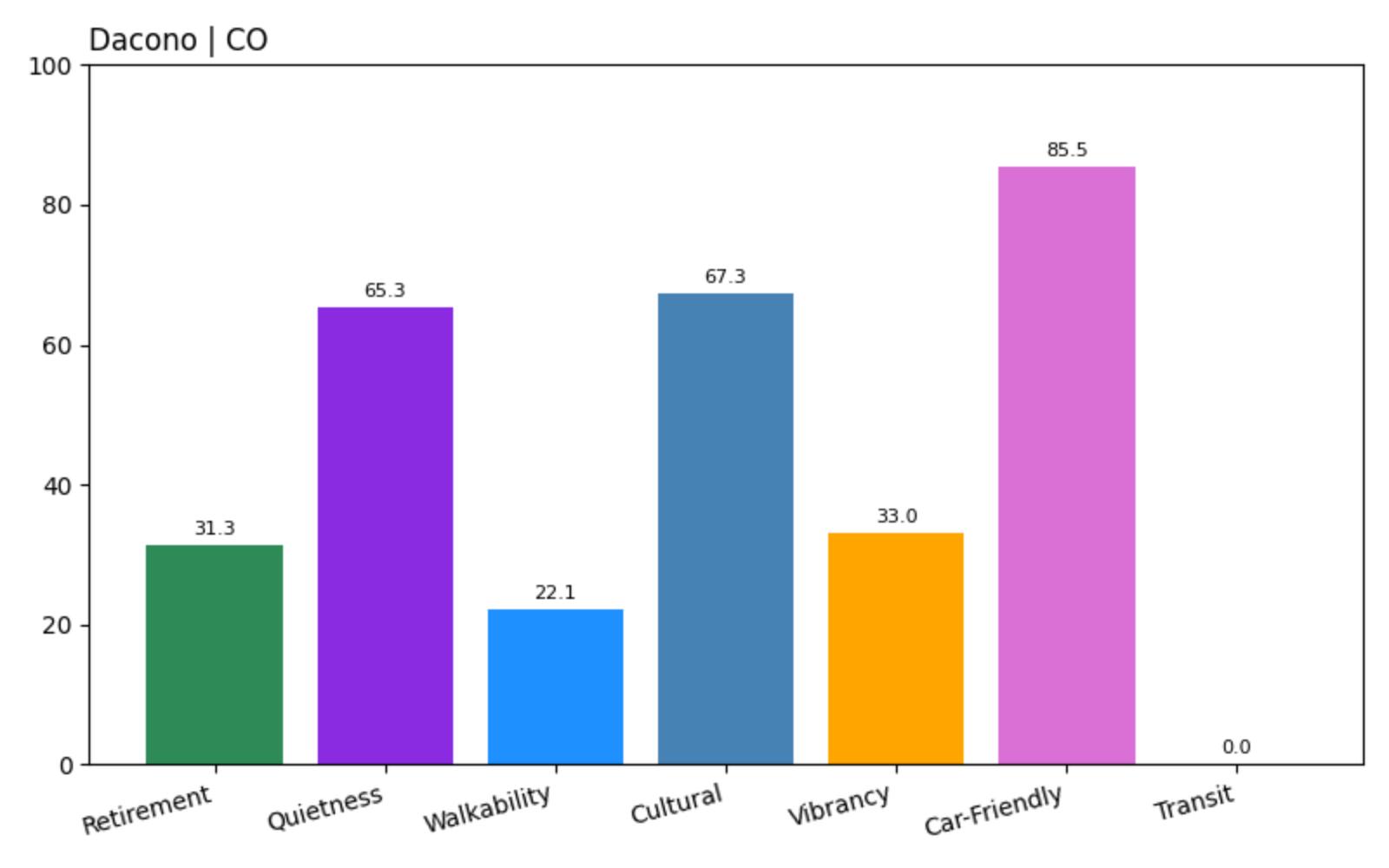
- Overall Retirement Score: 31.33
- Quietness: 65.32
- Walkability: 22.15
- Cultural: 67.26
- Vibrancy: 32.97
- Car-Friendly: 85.54
- Transit: 0.00
Dacono’s high cultural score indicates community programming, while good car-friendliness enables regional access. The moderate quietness reflects ongoing industrial operations, while zero transit and low walkability create mobility barriers. The energy industry presence provides economic benefits but environmental concerns that affect retirement desirability for those sensitive to air quality and industrial activity.
24. Pueblo – Economic Challenges and Urban Decay

Pueblo struggles with economic transition from its steel industry past, where 112,000 residents face ongoing challenges including higher crime rates in certain neighborhoods and limited economic opportunities that affect municipal services. The historic downtown shows signs of decline, while suburban sprawl creates pockets of disinvestment that concern potential retirees. Healthcare access includes Parkview Medical Center, but quality and accessibility vary across different areas of the city.
Cultural amenities include the Historic Arkansas Riverwalk and various community centers, but entertainment options remain limited compared to other Colorado cities of similar size. Public transportation exists but provides limited coverage, while crime concerns in certain areas affect walkability and outdoor activities for older adults.
Pueblo – ORS 30.78
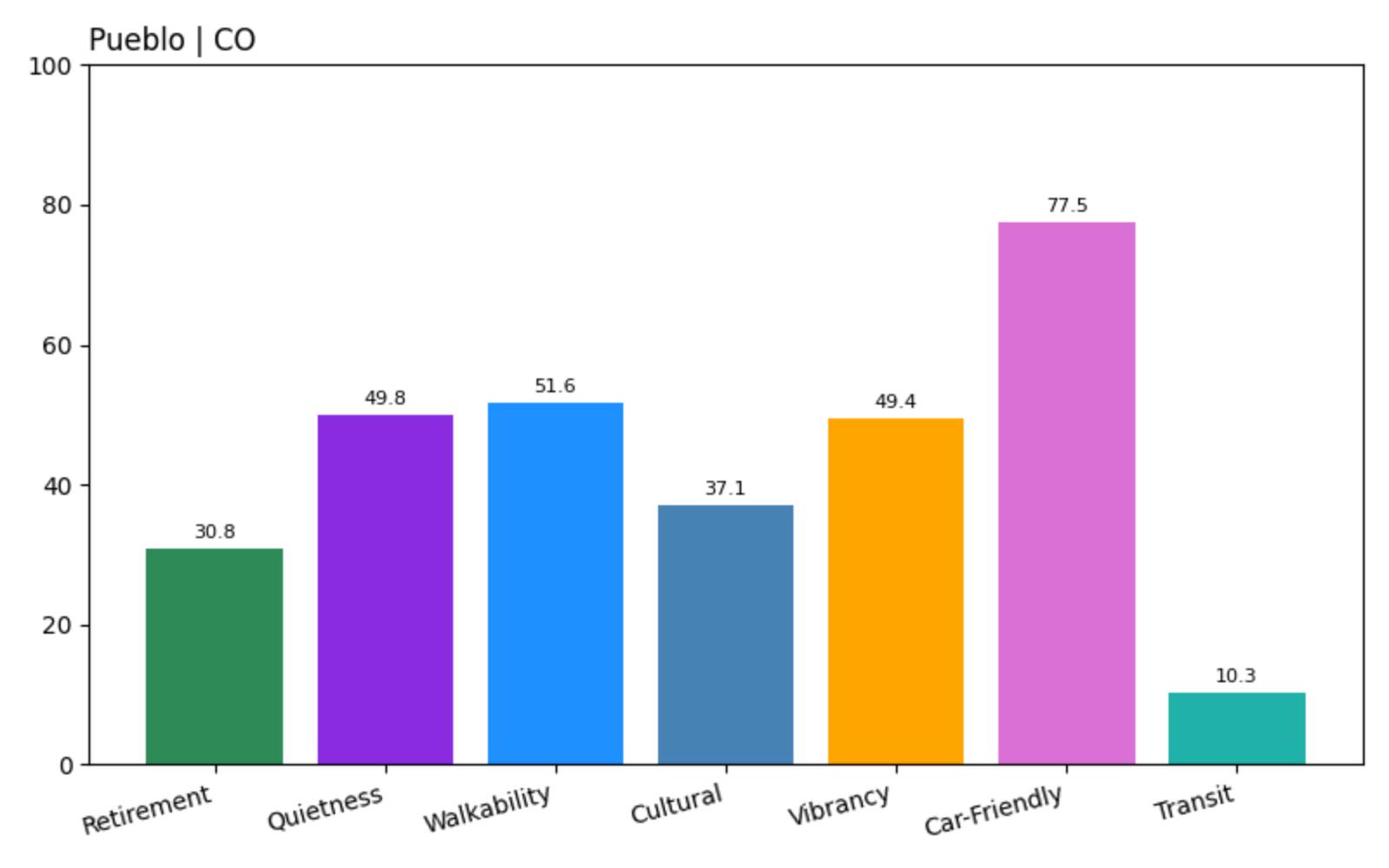
- Overall Retirement Score: 30.78
- Quietness: 49.84
- Walkability: 51.62
- Cultural: 37.14
- Vibrancy: 49.39
- Car-Friendly: 77.46
- Transit: 10.30
Pueblo’s moderate scores across categories reflect mixed urban conditions with some amenities but significant challenges. The limited cultural programming and minimal transit create gaps in retirement services, while crime and economic concerns affect neighborhood desirability. Some areas provide decent amenities, but inconsistent conditions throughout the city create uncertainty for retirees seeking predictable community quality.
23. Hudson-Keenesburg – Rural Corridor Challenges
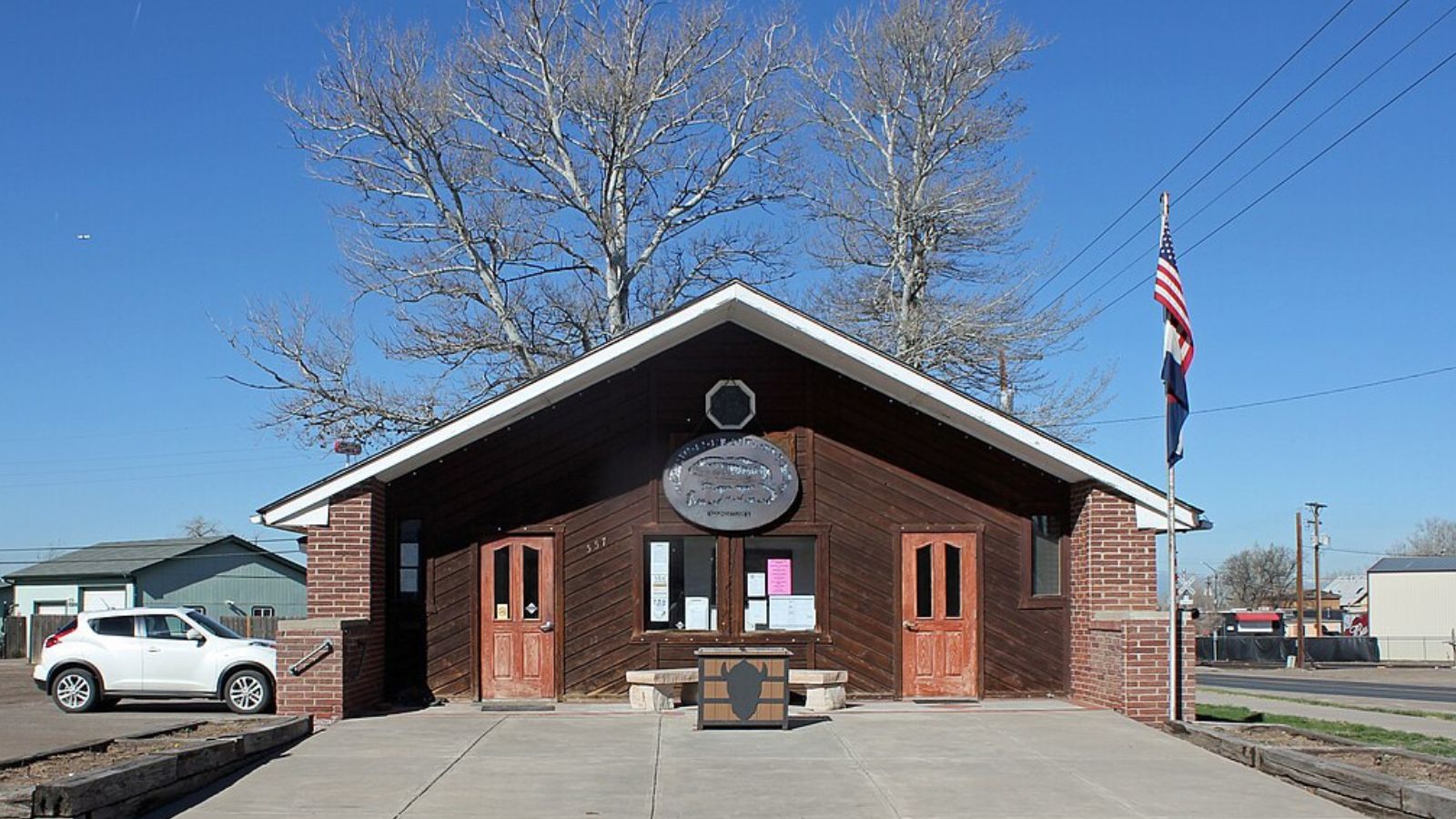
This combined area in Weld County represents rural communities along Highway 85 where rapid suburban growth meets ongoing agricultural operations. The area’s 4,000 residents face challenges from increased traffic on rural highways, limited municipal services, and the environmental impacts of nearby oil and gas operations. Recent residential development has created suburban expectations in rural settings that can’t provide urban services.
Cultural programming exists through community centers, but entertainment options remain limited. Healthcare services require drives to Brighton or Greeley, while shopping options remain minimal within the immediate area. The rural highway setting creates traffic noise and safety concerns for pedestrian activities.
Hudson-Keenesburg – ORS 30.06
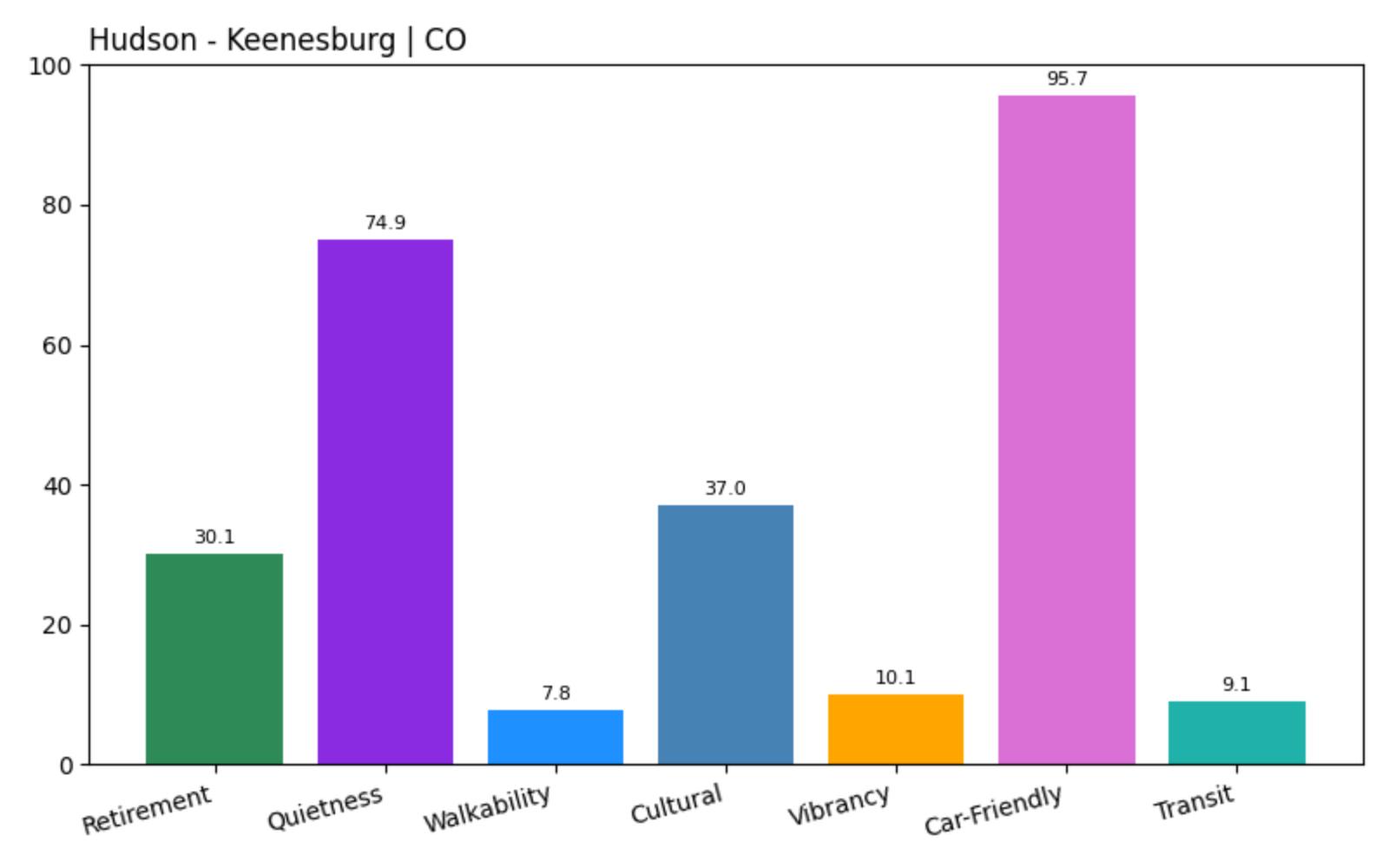
- Overall Retirement Score: 30.06
- Quietness: 74.93
- Walkability: 7.85
- Cultural: 36.99
- Vibrancy: 10.05
- Car-Friendly: 95.69
- Transit: 9.07
The area’s excellent car-friendliness and high quietness reflect rural driving conditions, while moderate cultural programming indicates some community activities. However, extremely low walkability and vibrancy underscore service limitations and car dependency. The rural setting appeals to some residents, but retirees needing walkable communities and diverse services will find significant limitations.
22. Englewood – Urban Noise and Traffic
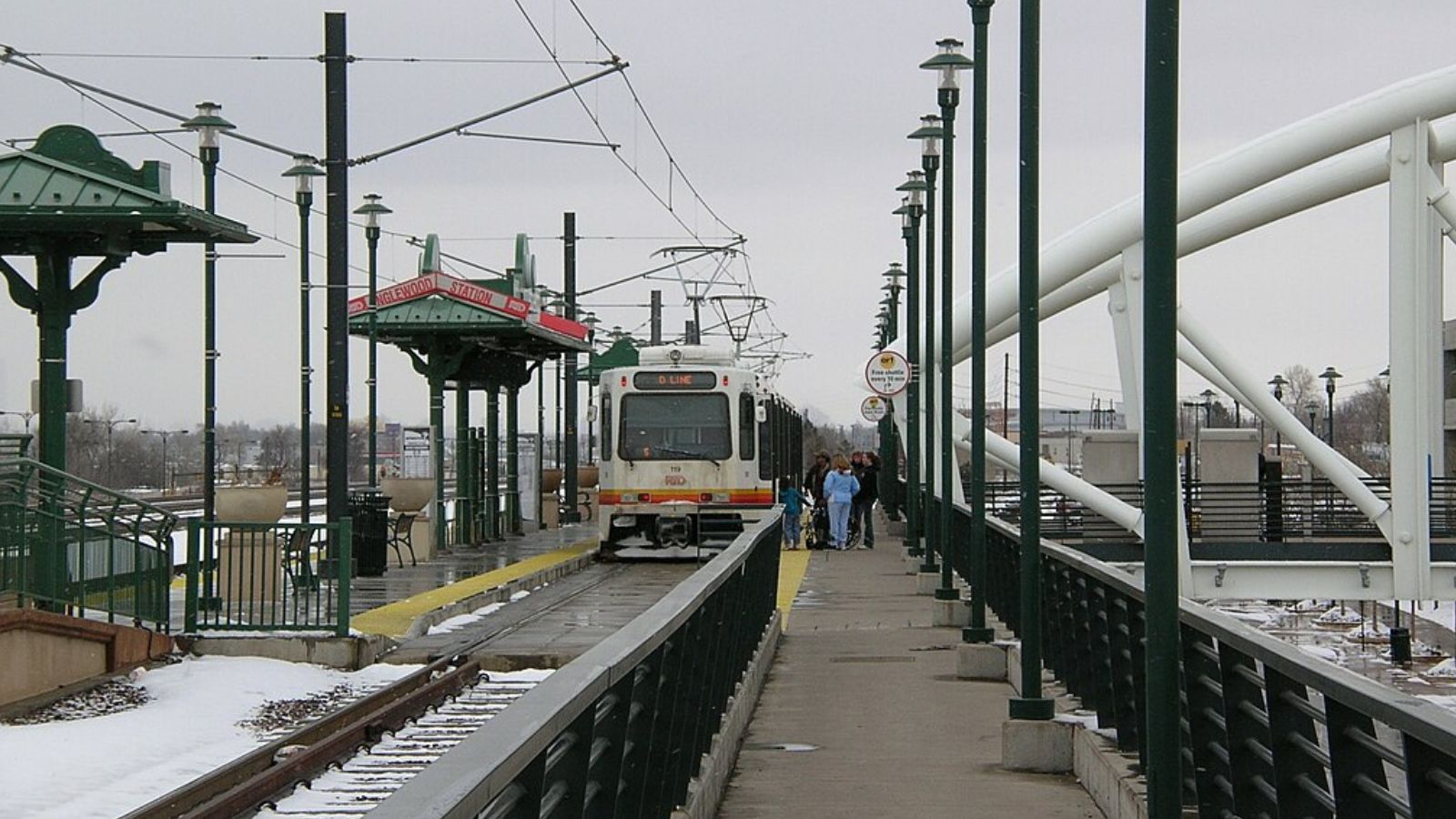
Englewood packs 34,000 residents into 6.5 square miles surrounded by major highways and busy Denver suburbs, creating persistent traffic noise that affects residential quality of life. Major corridors like Broadway and Santa Fe Drive carry constant traffic, while proximity to Interstate 25 and Highway 285 generates additional noise and air quality concerns. The compact urban environment provides walkability but little escape from urban intensity.
Cultural amenities include the Museum of Outdoor Arts and Gothic Theatre, providing good entertainment options within the small city. Healthcare access benefits from proximity to Denver medical facilities, but traffic congestion can make appointments challenging to reach. Public transportation provides decent regional connectivity through RTD bus and light rail services.
Englewood – ORS 29.31
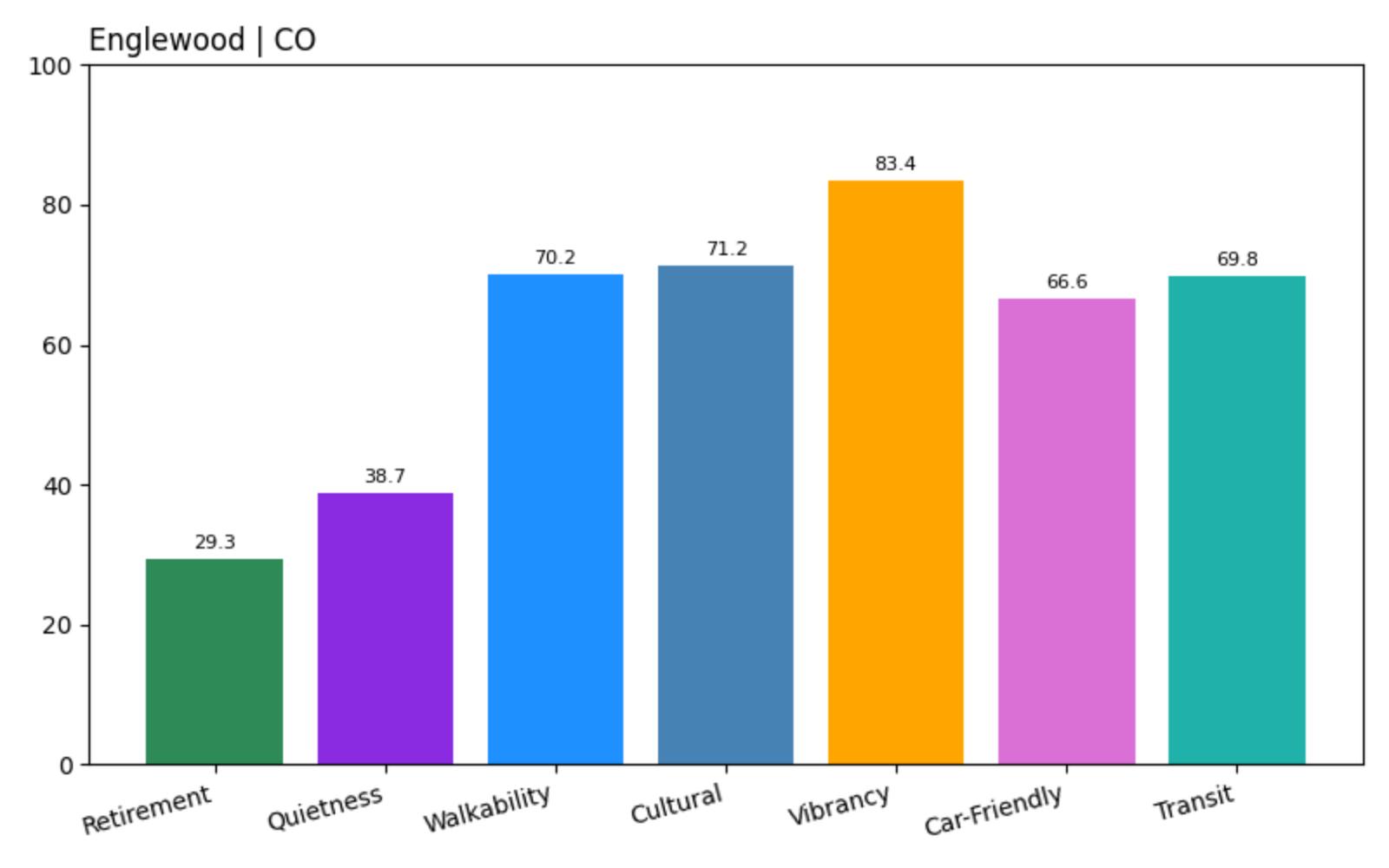
- Overall Retirement Score: 29.31
- Quietness: 38.66
- Walkability: 70.16
- Cultural: 71.22
- Vibrancy: 83.44
- Car-Friendly: 66.57
- Transit: 69.83
Englewood’s excellent cultural, vibrancy, and transit scores reflect urban amenities and regional connectivity, while good walkability enables car-free living in many areas. However, the low quietness score indicates persistent traffic noise that can exhaust retirees seeking peaceful residential environments. Urban residents comfortable with city intensity might adapt, but those prioritizing quiet neighborhoods will find conditions challenging.
21. Denver – Urban Intensity and Homeless Issues
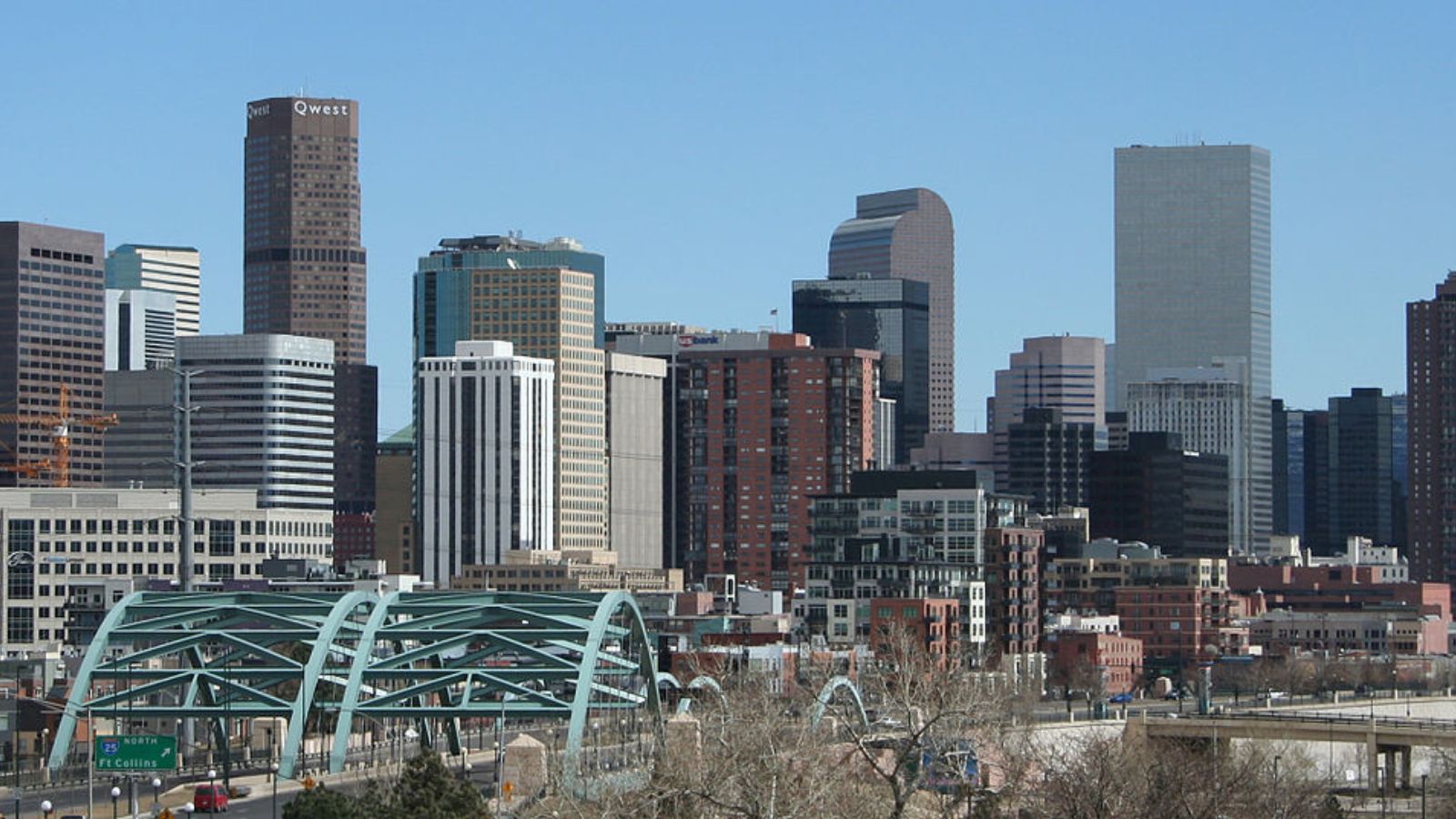
Denver’s downtown and surrounding neighborhoods concentrate 715,000 residents in an urban environment where traffic congestion, construction noise, and growing homeless populations affect quality of life for older adults. Rapid growth has strained infrastructure and services, while gentrification has displaced long-term communities and increased housing costs. Air quality concerns from traffic and geographic conditions affect outdoor activities.
Cultural amenities abound with world-class museums, theaters, and music venues, but accessing them often requires navigating challenging urban conditions including crowded sidewalks, aggressive panhandling, and safety concerns in certain areas. Healthcare access includes excellent medical facilities, but parking costs and urban traffic make appointments expensive and stressful.
Denver – ORS 29.28
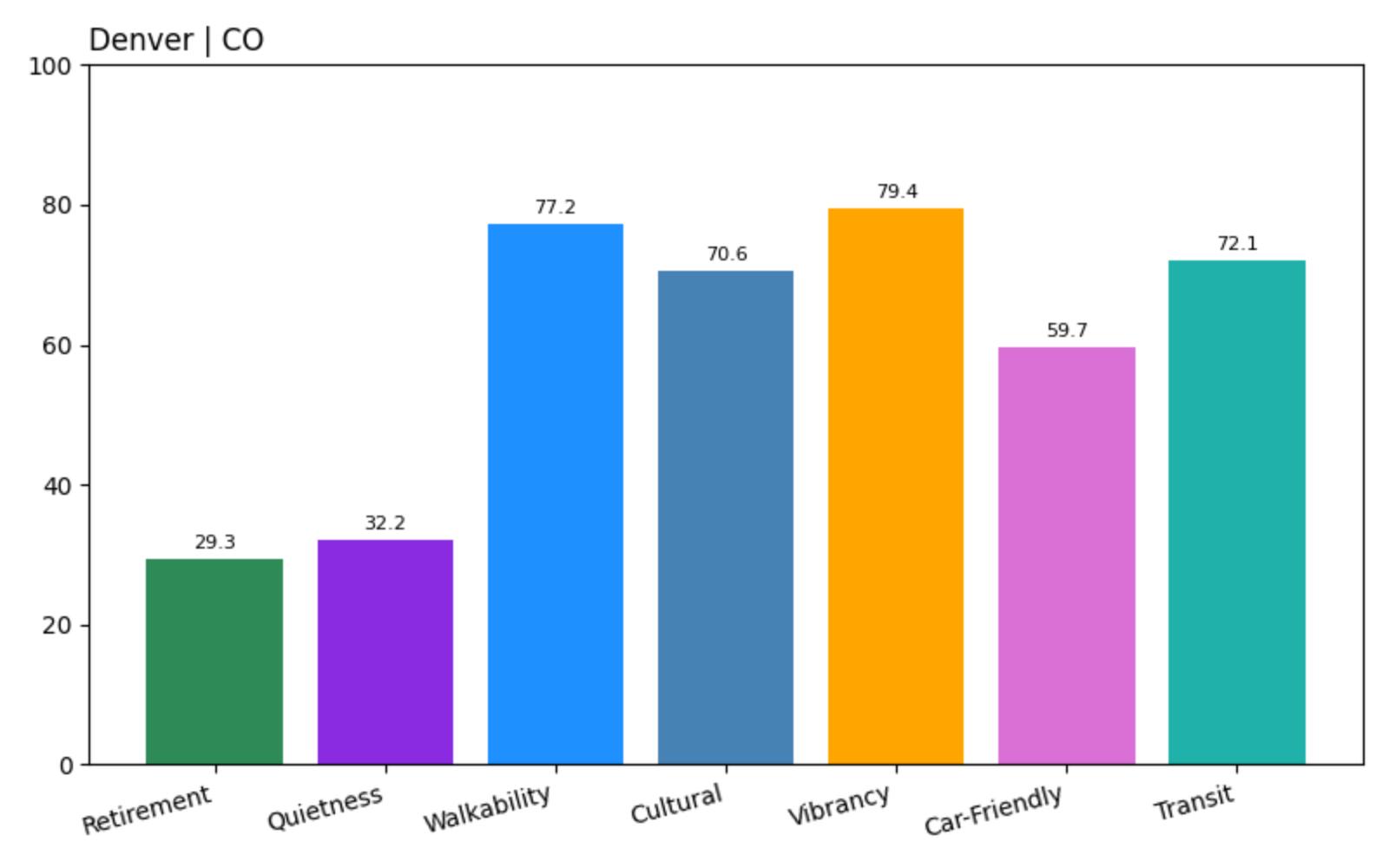
- Overall Retirement Score: 29.28
- Quietness: 32.17
- Walkability: 77.19
- Cultural: 70.56
- Vibrancy: 79.42
- Car-Friendly: 59.74
- Transit: 72.08
Denver’s excellent cultural, vibrancy, walkability, and transit scores reflect world-class urban amenities and comprehensive transportation options. However, the low quietness score indicates persistent urban noise, while moderate car-friendliness reflects parking and traffic challenges. Urban retirees who thrive on cultural activities and don’t mind city intensity might adapt, but those seeking peaceful residential living will find conditions overwhelming.
20. Sheridan – Small City, Big Problems
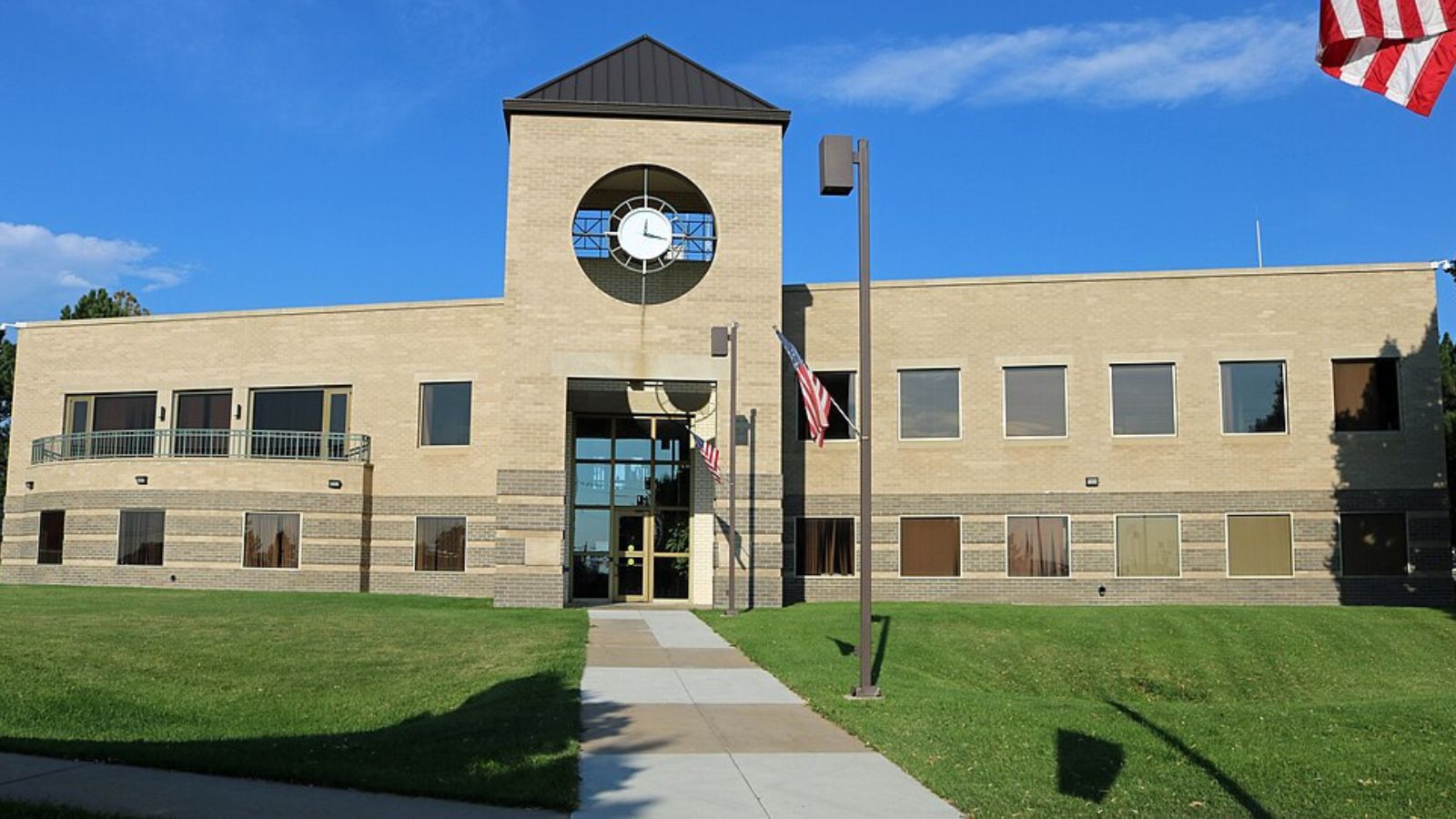
Sheridan crams 6,100 residents into just 2.4 square miles, creating urban density without urban amenities while surrounded by busy suburban traffic corridors. The small city struggles with crime issues including drug activity that affects neighborhood safety and walkability for older residents. Limited municipal resources constrain services and infrastructure maintenance, while proximity to major highways generates persistent traffic noise.
Cultural programming remains limited due to the city’s small size and budget constraints, while healthcare access requires travel to nearby suburban medical facilities. Public transportation provides some regional connectivity, but crime concerns affect public safety for seniors using transit or walking to services.
Sheridan – ORS 27.26
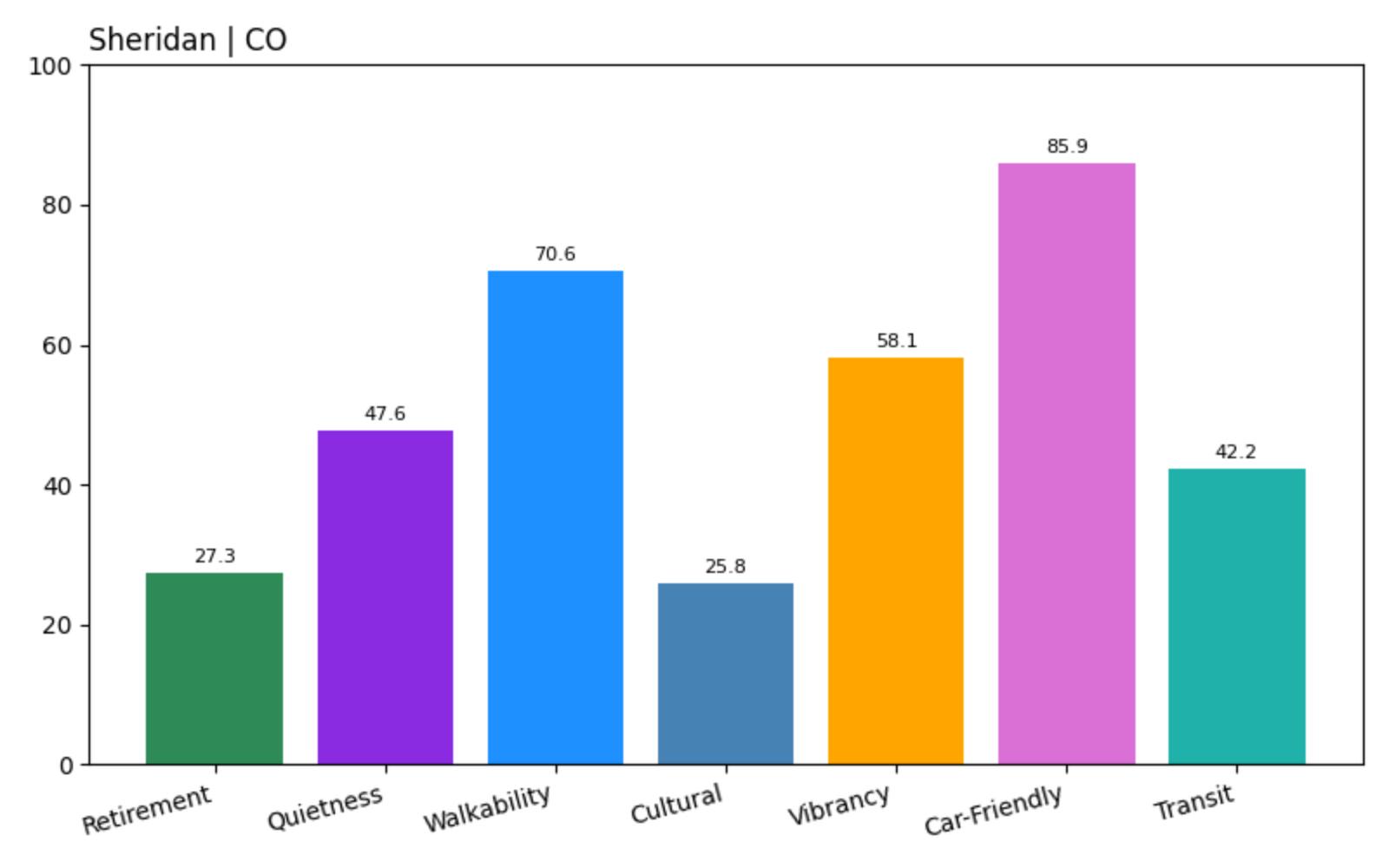
- Overall Retirement Score: 27.26
- Quietness: 47.61
- Walkability: 70.59
- Cultural: 25.77
- Vibrancy: 58.06
- Car-Friendly: 85.92
- Transit: 42.22
Sheridan’s good walkability and moderate transit provide mobility options, while decent vibrancy reflects local businesses. However, limited cultural programming and moderate quietness affected by traffic create gaps in retirement amenities. Crime concerns and urban density without corresponding services make this location challenging for retirees seeking safe, walkable community living.
19. Greeley – Agricultural Odors and Industrial Character
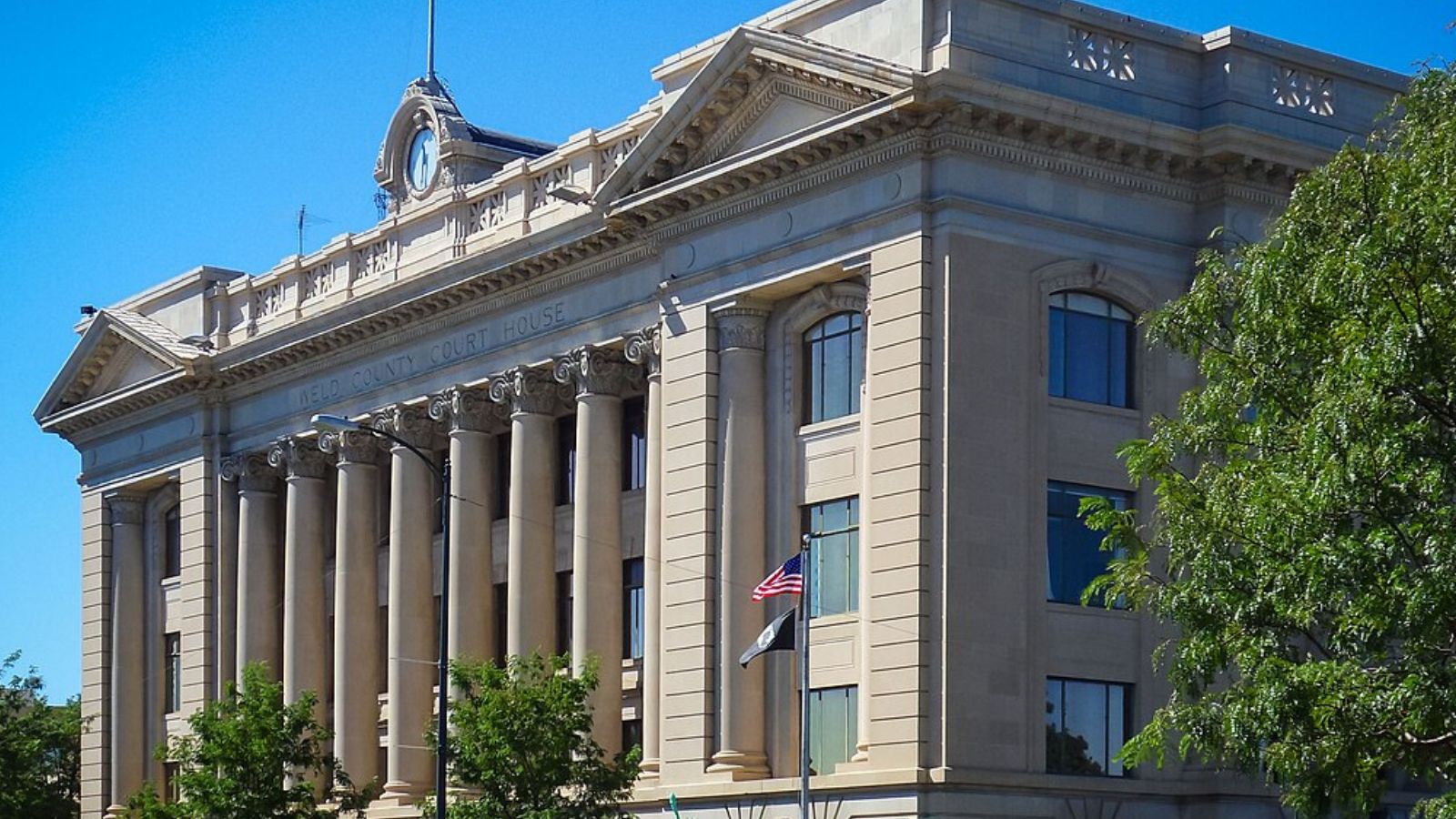
Peter Romero, CC BY-SA 3.0, via Wikimedia Commons
Greeley combines university town amenities with agricultural and meatpacking industries that create persistent odors affecting quality of life throughout the community. The city’s 108,000 residents regularly deal with smells from cattle feedlots and processing plants, while truck traffic serving agricultural operations generates noise and road wear. Air quality concerns from agricultural and industrial sources affect outdoor activities.
Cultural amenities benefit from the University of Northern Colorado’s presence, providing some entertainment and educational opportunities. Healthcare access includes North Colorado Medical Center, but the industrial character and odor issues concern many retirees considering the area. Public transportation remains limited despite the city’s size.
Greeley – ORS 24.76
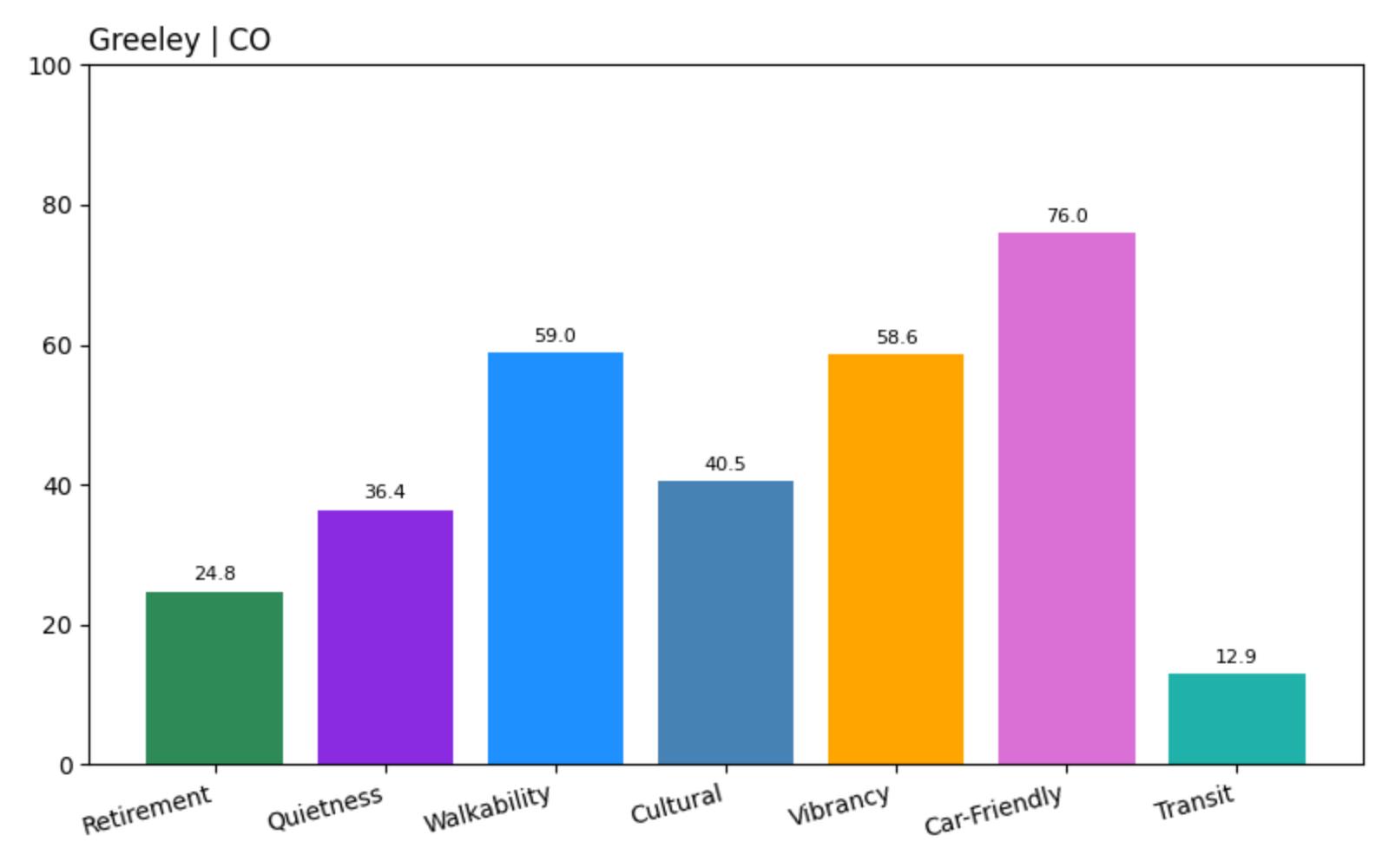
- Overall Retirement Score: 24.76
- Quietness: 36.42
- Walkability: 58.95
- Cultural: 40.55
- Vibrancy: 58.65
- Car-Friendly: 75.95
- Transit: 12.87
Greeley’s moderate walkability and vibrancy reflect its size and university presence, while cultural programming benefits from educational institutions. However, the low quietness score indicates persistent industrial and agricultural noise, while limited transit creates car dependency. The agricultural economy provides identity but environmental concerns that affect desirability for retirees sensitive to air quality and odors.
18. Brighton – Suburban Sprawl and Traffic Growth
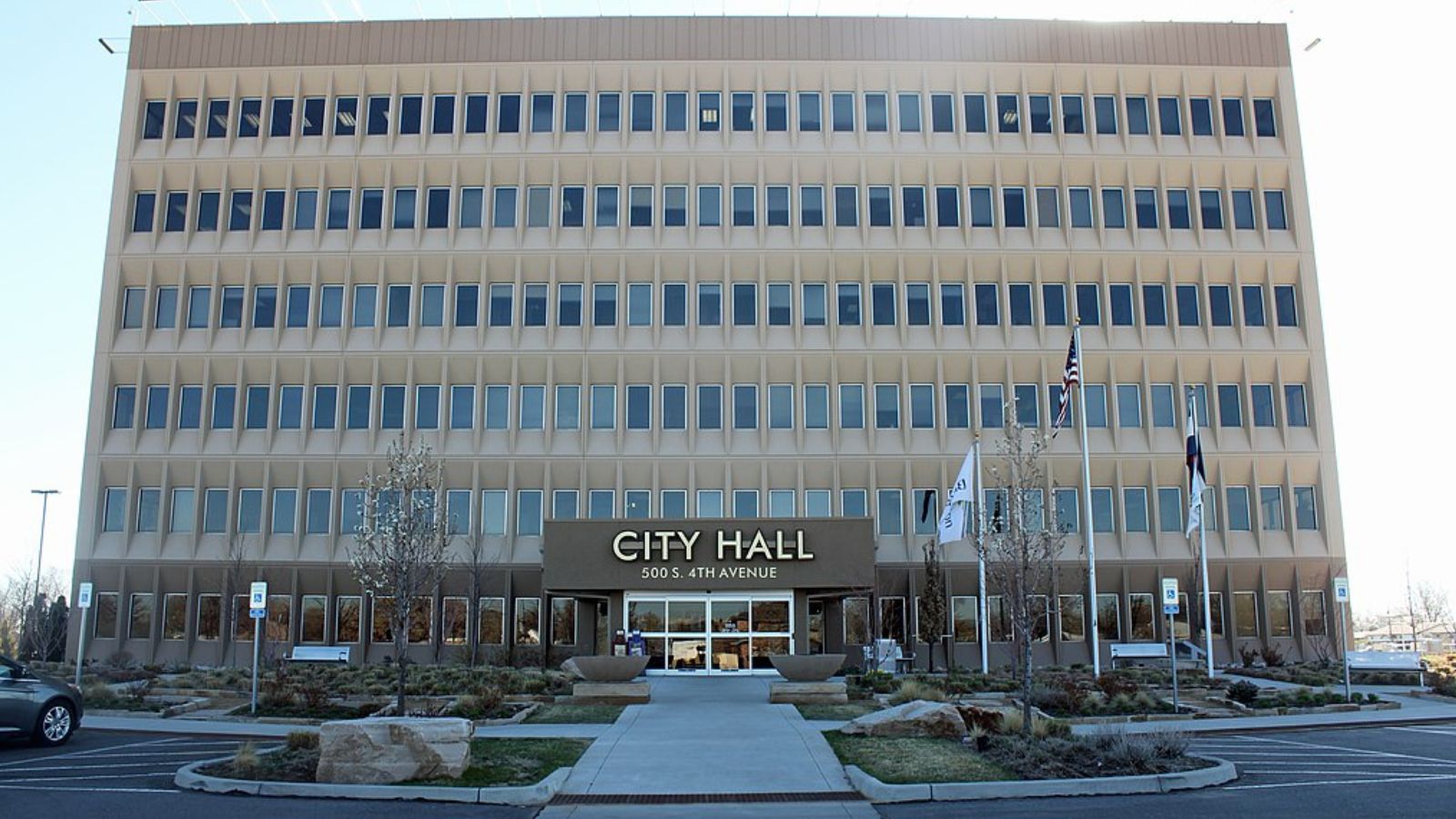
Brighton represents rapid suburban growth in Adams County, where 38,000 residents face increasing traffic congestion as bedroom community development outpaces infrastructure improvements. The suburban sprawl requires extensive driving for most activities, while major corridors like Highway 85 and 76th Avenue carry heavy commuter traffic that generates noise and safety concerns. Recent growth has strained municipal services and created construction disruption.
Cultural amenities include community centers and parks, but entertainment options remain limited compared to more established communities. Healthcare access requires drives to nearby suburban medical facilities, while public transportation provides minimal coverage despite proximity to Denver’s metropolitan area. The rapid growth creates uncertainty about long-term community character .
Brighton – ORS 24.37
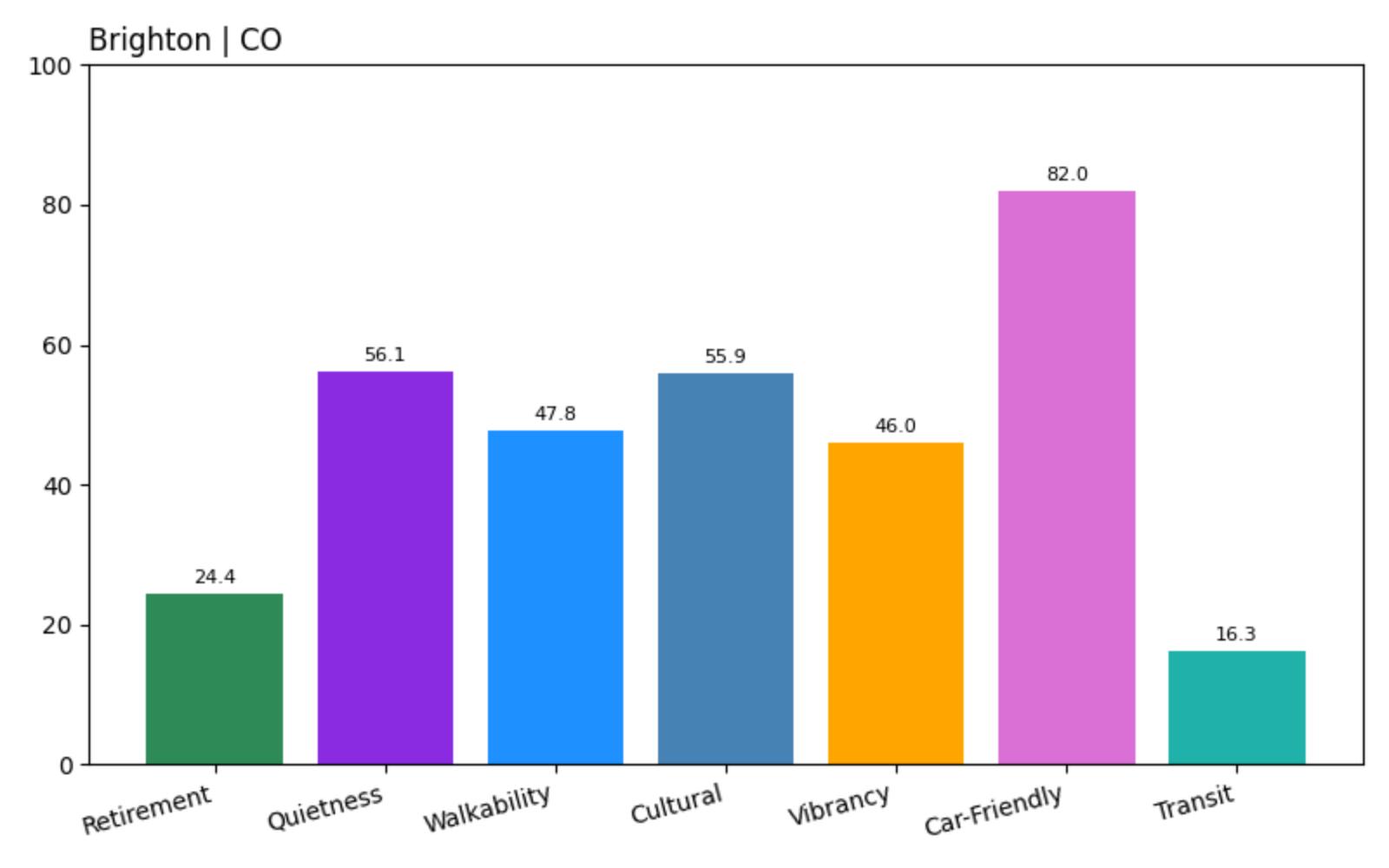
- Overall Retirement Score: 24.37
- Quietness: 56.14
- Walkability: 47.75
- Cultural: 55.90
- Vibrancy: 45.98
- Car-Friendly: 81.95
- Transit: 16.27
Brighton’s moderate cultural score reflects community programming, while good car-friendliness enables regional access and the higher quietness indicates residential areas remain relatively peaceful. However, limited walkability and minimal transit create car dependency, while rapid growth affects community stability. Suburban families might adapt to the growth, but retirees seeking established community character may find conditions uncertain.
17. Rifle – Oil and Gas Boom Impact
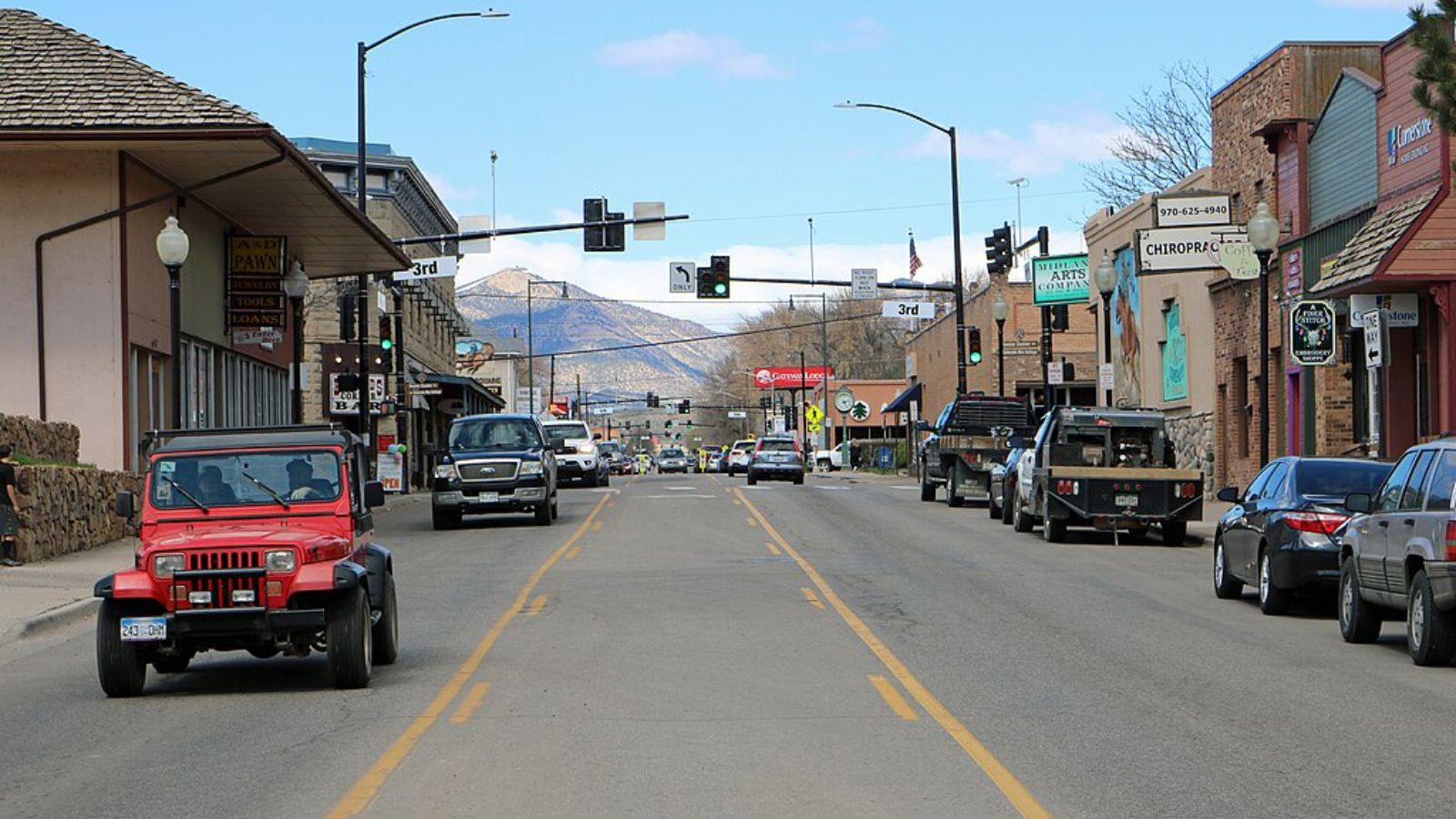
Rifle balances small-town character with intensive oil and gas development in Garfield County’s energy corridor, where 10,000 residents live amid the environmental and economic impacts of fracking operations. Air quality concerns from drilling activities affect outdoor recreation, while heavy truck traffic serving oil fields creates noise, road damage, and safety concerns throughout the community. The energy boom brings economic benefits but also housing costs and infrastructure strain.
Cultural programming exists through community centers, but the industrial character affects quality of life in ways that concern environmentally sensitive retirees. Healthcare services include Grand River Hospital District, but specialized care requires drives to Grand Junction or Denver through mountain passes that can become dangerous during winter weather.
Rifle – ORS 22.95
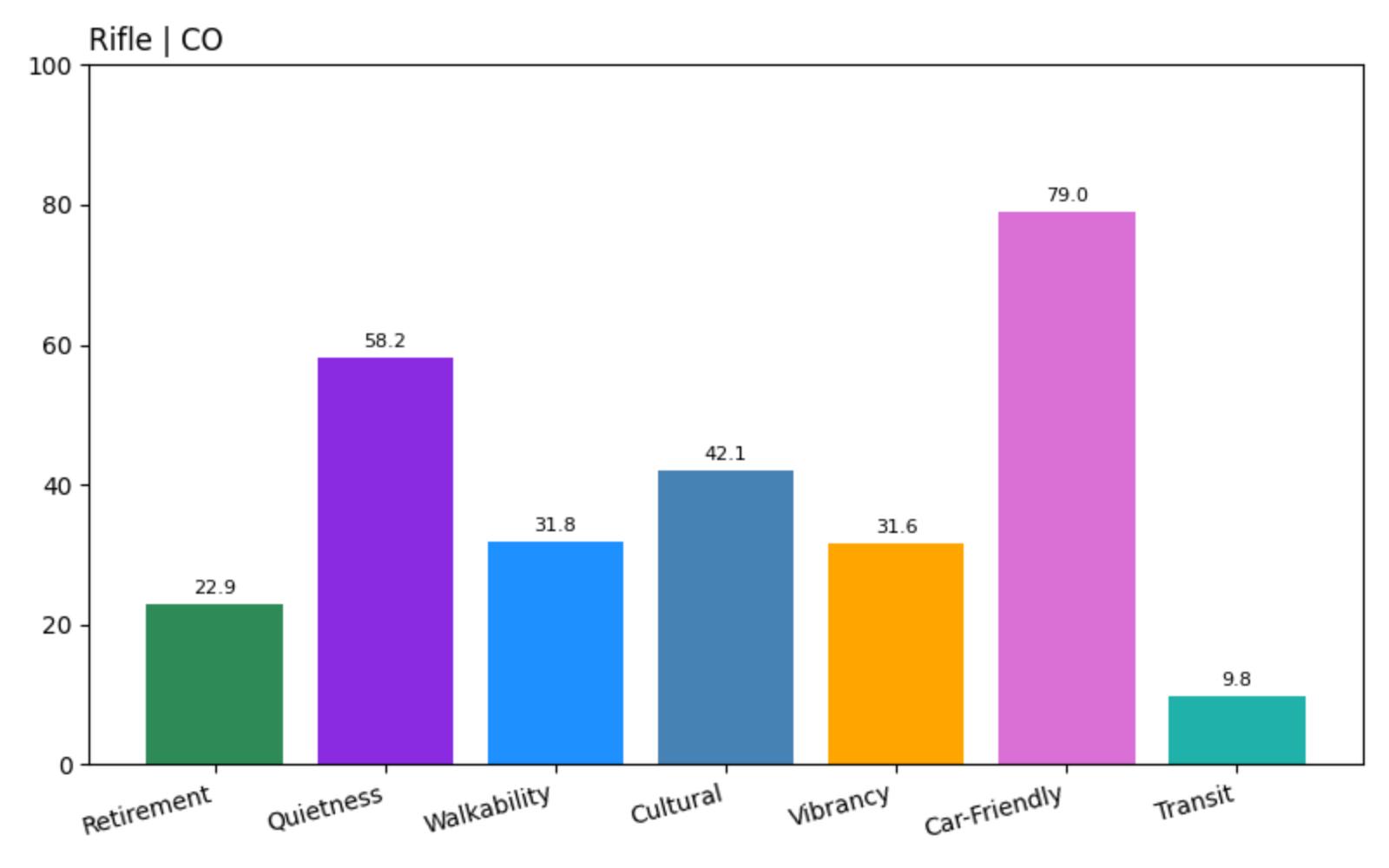
- Overall Retirement Score: 22.95
- Quietness: 58.18
- Walkability: 31.84
- Cultural: 42.11
- Vibrancy: 31.65
- Car-Friendly: 79.04
- Transit: 9.76
Rifle’s moderate quietness reflects its size rather than industrial calm, while decent cultural programming provides some community engagement. However, limited walkability and minimal transit create mobility barriers, while the energy industry presence affects environmental quality. Workers in the energy sector might appreciate the economic opportunities, but retirees sensitive to air quality and industrial activity will find conditions concerning.
16. Firestone – Fracking and Suburban Growth
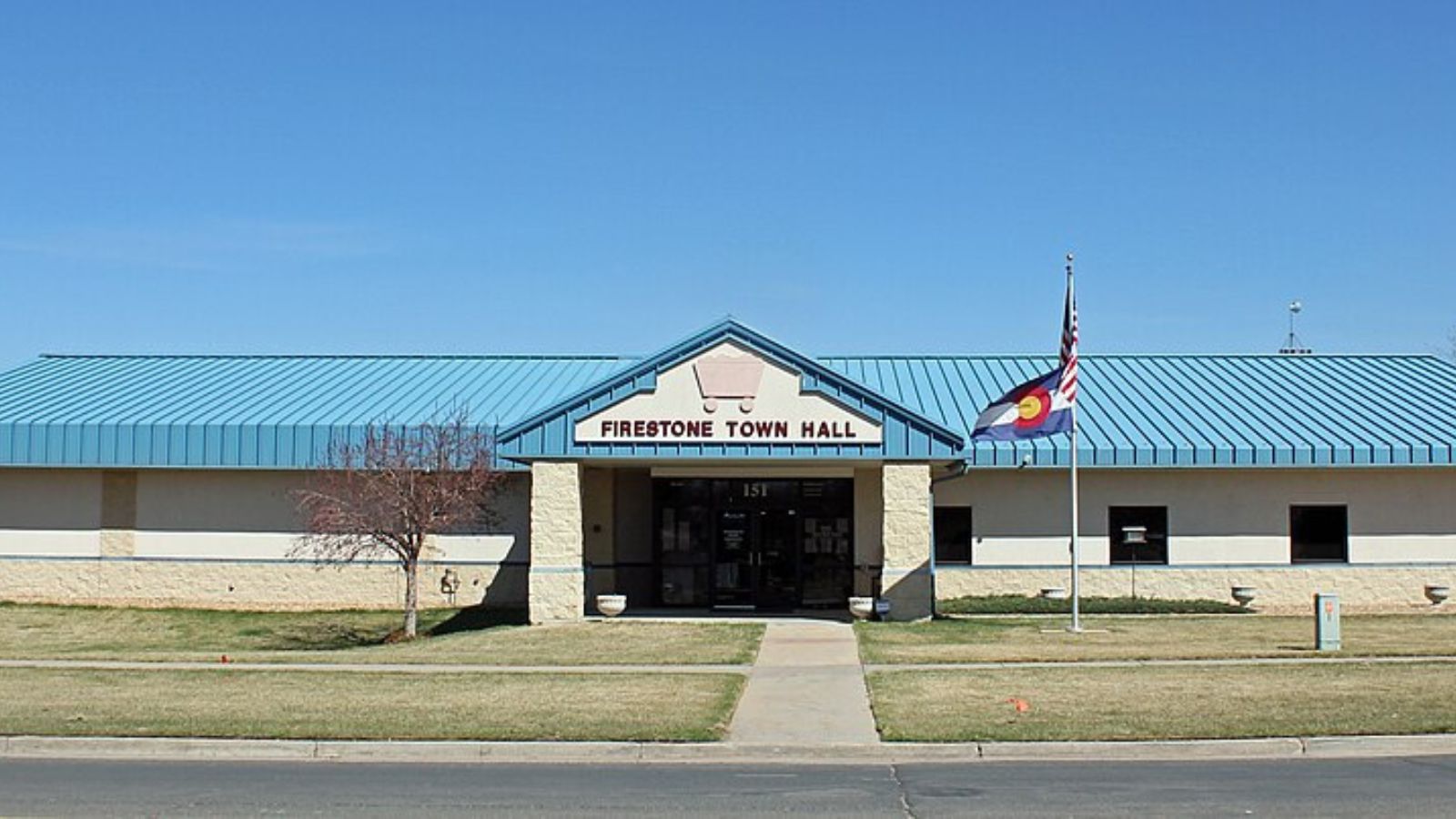
Firestone combines rapid suburban development with active oil and gas operations in Weld County, where 16,000 residents live amid ongoing environmental and safety concerns from nearby drilling activities. The 2017 house explosion caused by gas leaks highlighted infrastructure risks, while ongoing fracking operations create air quality and noise concerns that affect residential neighborhoods. Suburban growth has created commuter traffic on rural roads.
Cultural amenities include community centers and parks, but the industrial presence affects outdoor activities and community character. Healthcare access requires drives to nearby suburban medical facilities, while public transportation remains extremely limited despite population growth. The energy industry presence creates economic benefits but environmental concerns.
Firestone – ORS 22.38
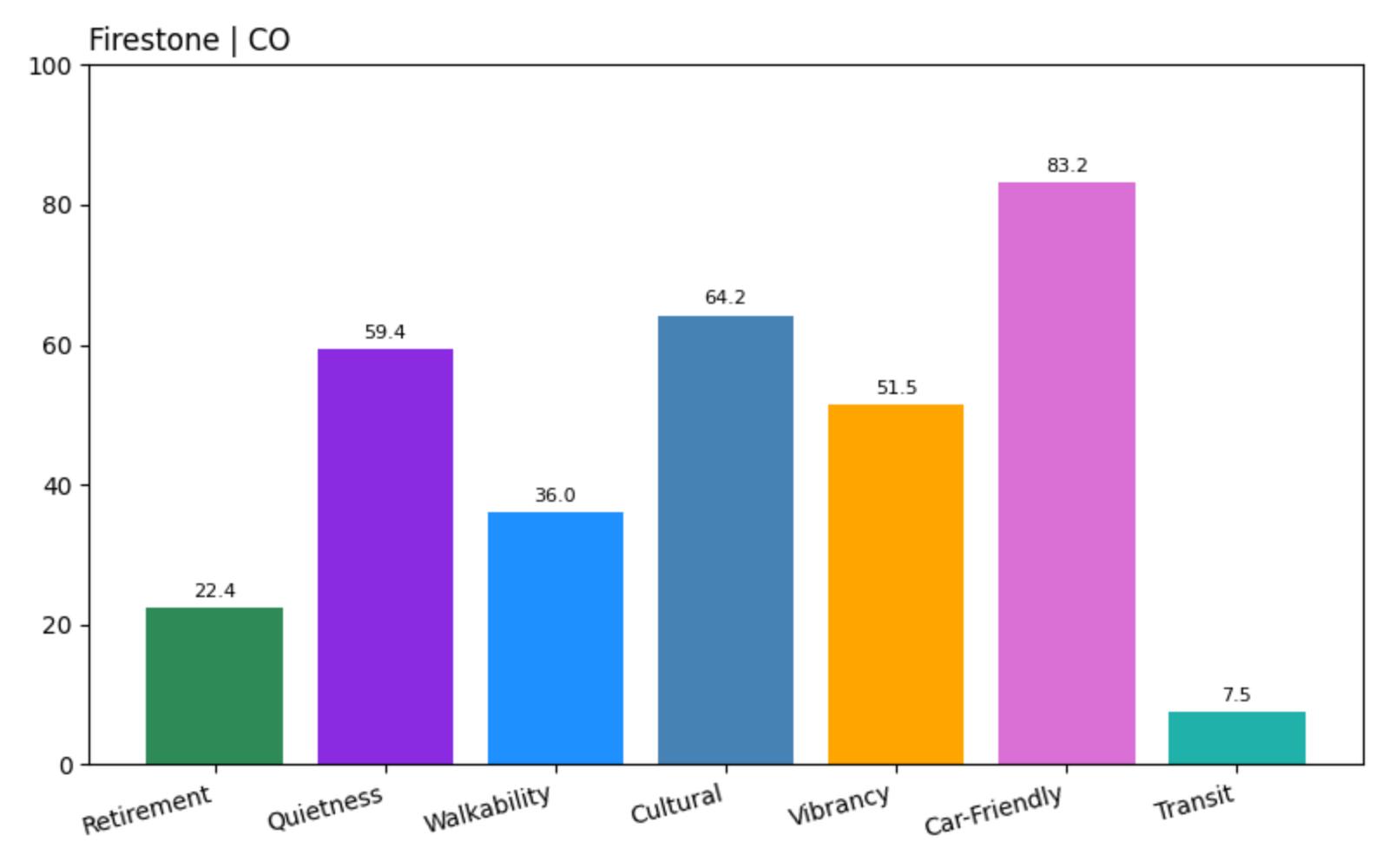
- Overall Retirement Score: 22.38
- Quietness: 59.37
- Walkability: 35.96
- Cultural: 64.22
- Vibrancy: 51.53
- Car-Friendly: 83.17
- Transit: 7.50
Firestone’s high cultural score indicates good community programming, while decent car-friendliness enables regional travel and moderate quietness suggests residential areas maintain some peace. However, limited walkability and minimal transit create car dependency, while ongoing energy operations create environmental concerns. Young families might adapt to suburban amenities, but retirees sensitive to industrial risks and air quality will find conditions problematic.
15. Edgewater – Urban Density and Noise
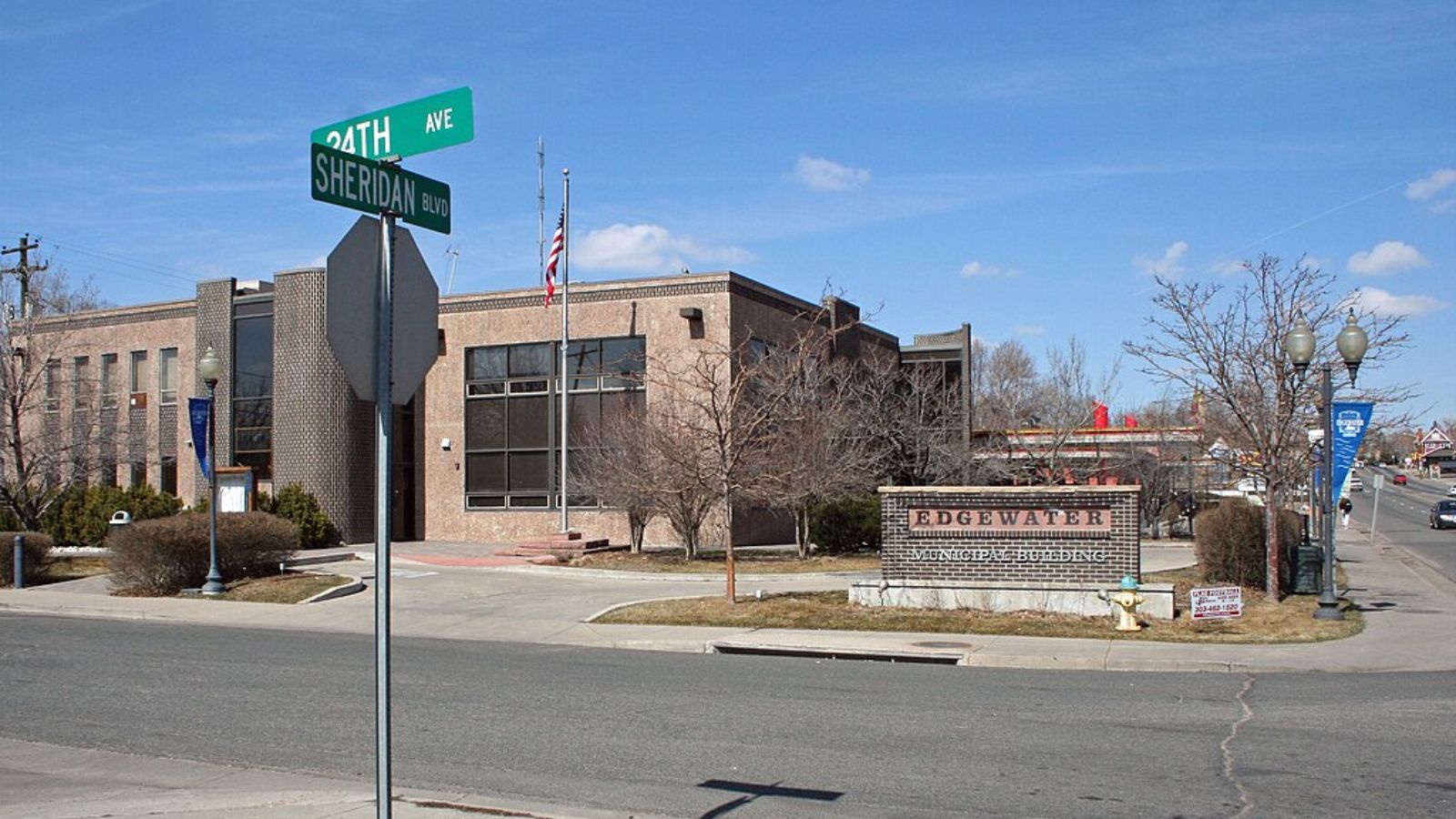
Edgewater packs 5,200 residents into just 0.8 square miles along Sloan’s Lake, creating extreme urban density that generates persistent noise from traffic, construction, and concentrated residential activity. The tiny city sits surrounded by busy Denver neighborhoods and major highways, making escape from urban intensity nearly impossible. While proximity to downtown Denver provides cultural access, the constant noise and crowded conditions challenge retirees seeking peaceful residential living.
The compact urban environment offers excellent walkability to local businesses and regional transit connections, but parking remains extremely limited and expensive. Healthcare access benefits from proximity to Denver medical facilities, but the urban density creates stress and navigation challenges that can overwhelm older adults seeking quieter retirement communities.
Edgewater – ORS 21.25
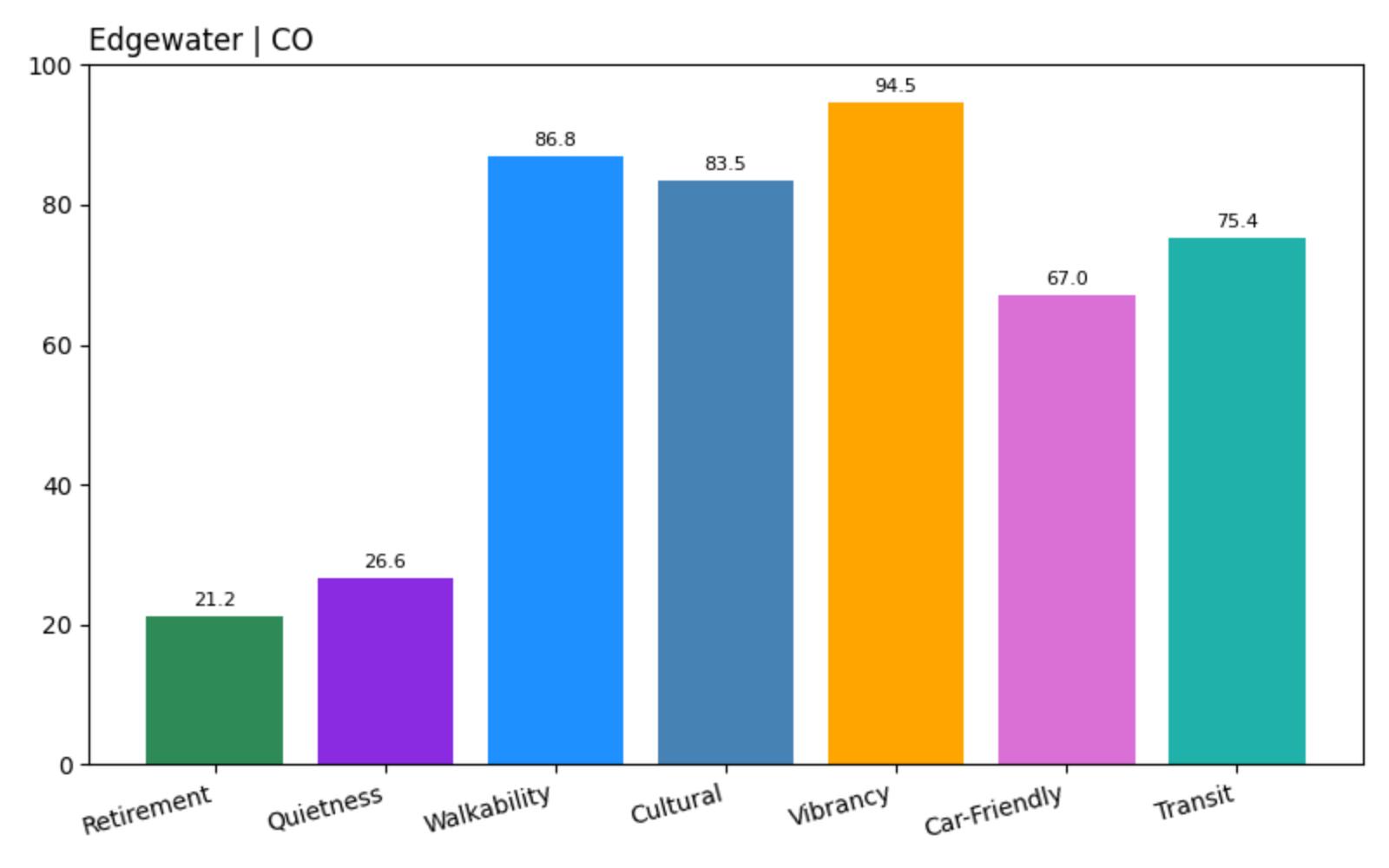
- Overall Retirement Score: 21.25
- Quietness: 26.55
- Walkability: 86.82
- Cultural: 83.49
- Vibrancy: 94.53
- Car-Friendly: 66.98
- Transit: 75.36
Edgewater’s exceptional cultural, vibrancy, walkability, and transit scores reflect prime urban location and comprehensive city access. However, the extremely low quietness score indicates persistent urban noise that dominates residential areas. Urban enthusiasts who thrive on constant activity might appreciate the location, but retirees seeking peaceful neighborhood environments will find the noise levels intolerable.
14. Johnstown – Rapid Growth and Service Gaps
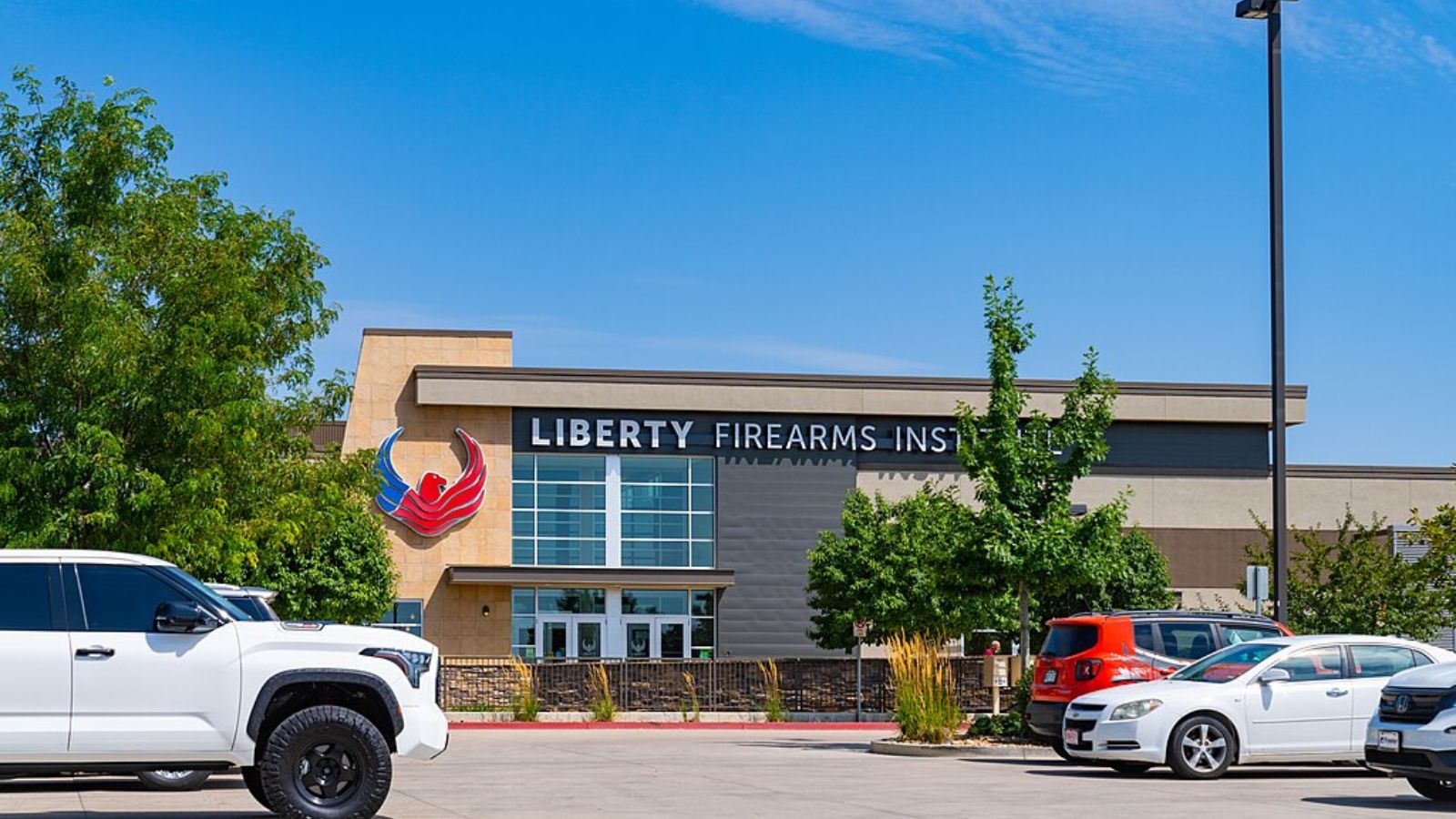
Johnstown represents explosive suburban growth in Weld County, where the population surged from 3,800 to 16,000 residents in just two decades, creating infrastructure strain and service gaps that affect quality of life. The rapid development has outpaced municipal services, schools, and transportation infrastructure, while new housing developments lack mature landscaping and established community character. Traffic congestion on rural roads has increased dramatically.
Cultural programming exists through new community facilities, but the rapid growth means limited established social networks compared to mature communities. Healthcare access requires drives to Longmont or Greeley, while public transportation remains nonexistent despite suburban density. The community struggles to balance growth with maintaining small-town character.
Johnstown – ORS 21.23
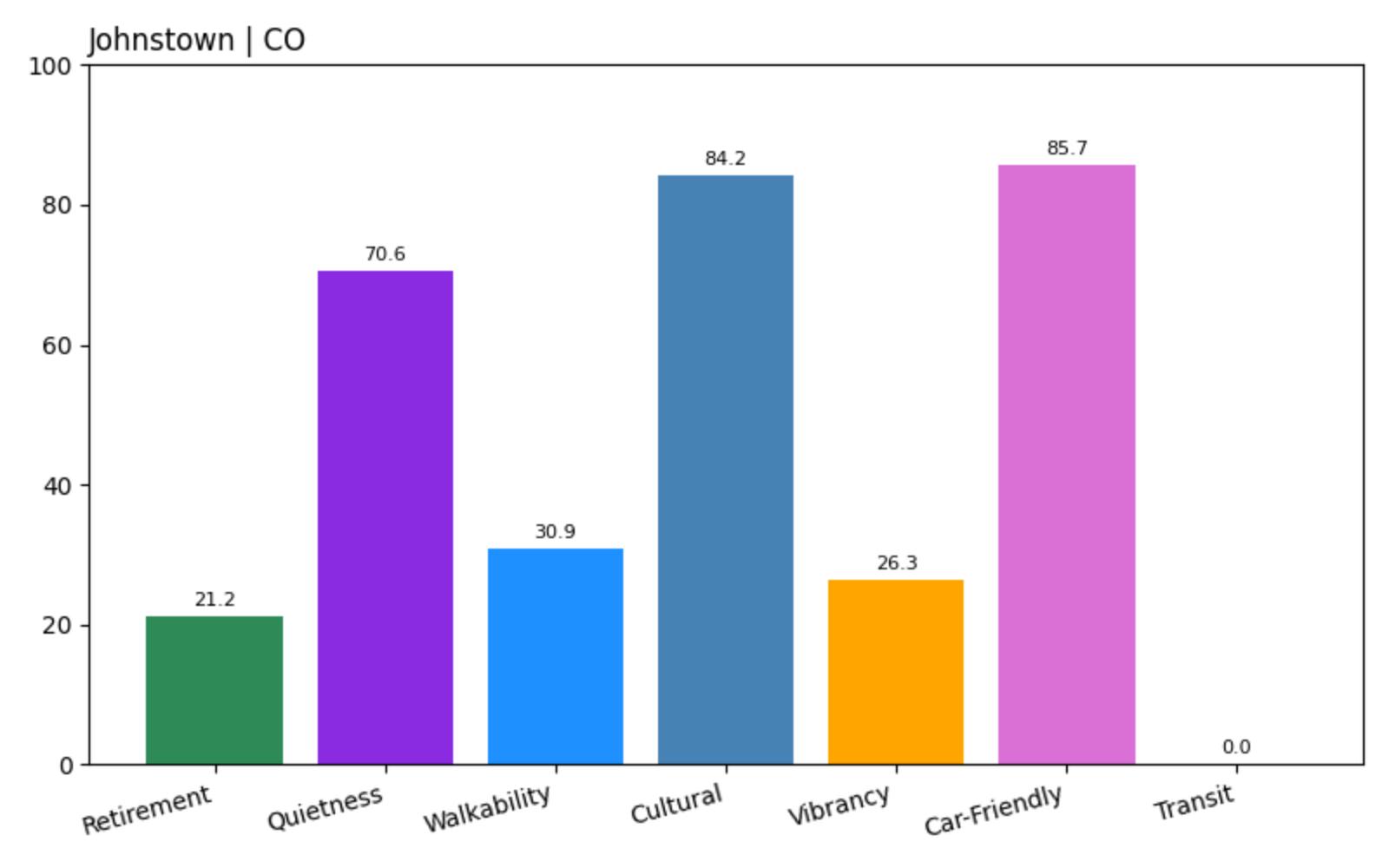
- Overall Retirement Score: 21.23
- Quietness: 70.57
- Walkability: 30.87
- Cultural: 84.16
- Vibrancy: 26.32
- Car-Friendly: 85.73
- Transit: 0.00
Johnstown’s high cultural score reflects community investment in programming, while good car-friendliness and quietness indicate suburban residential conditions. However, zero transit and limited walkability create complete car dependence, while low vibrancy suggests limited daily activities. Rapid growth provides amenities but creates uncertainty about long-term community stability and character.
13. Peyton – Rural Sprawl and Service Limitations
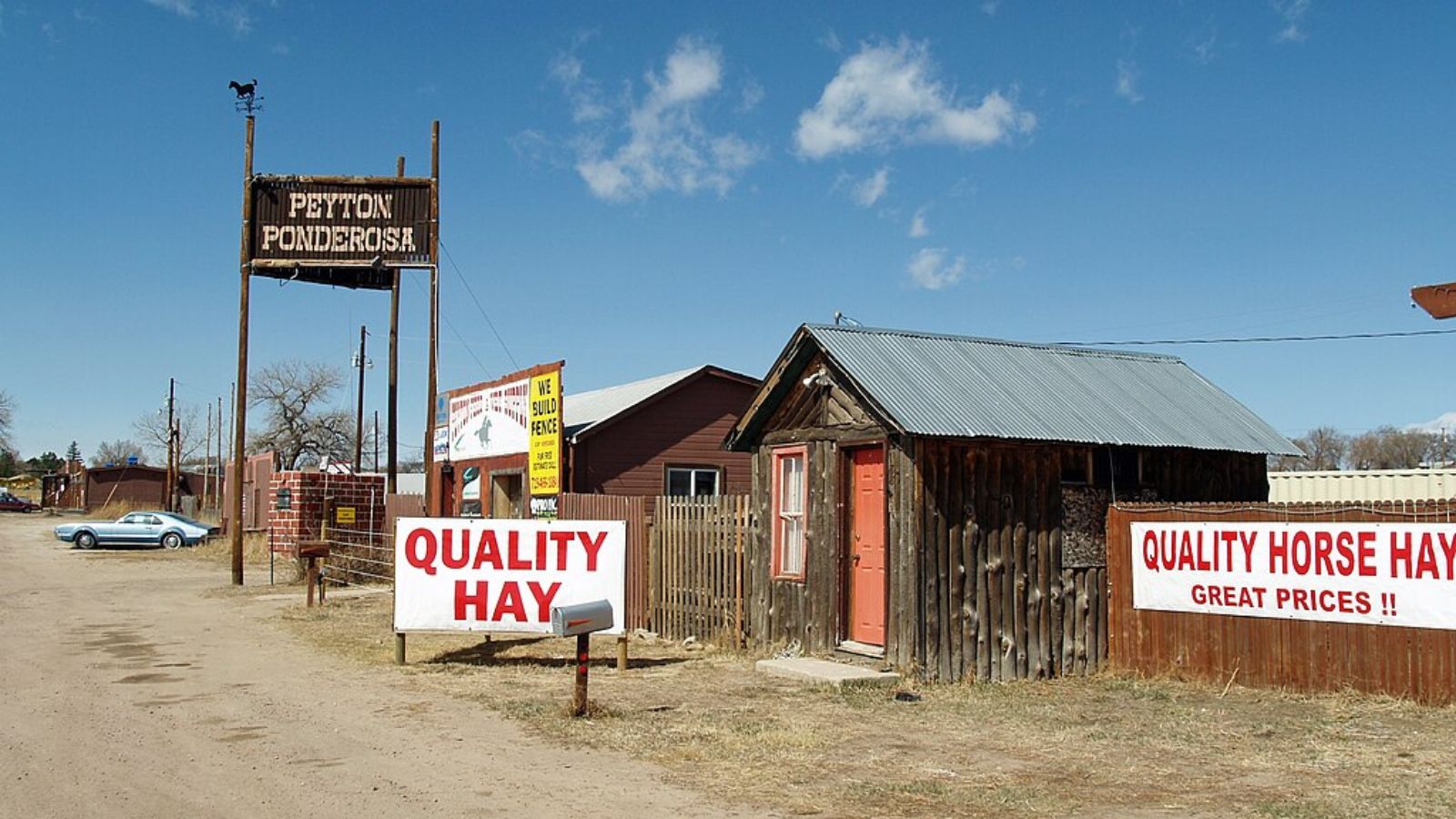
Peyton spreads across El Paso County’s eastern plains as an unincorporated area where 3,500 residents live in rural residential developments that lack municipal services and infrastructure. The rural setting provides quiet neighborhoods, but essential services require significant drives to Colorado Springs or other urban areas. Limited public utilities, road maintenance, and emergency services create challenges for seniors requiring reliable infrastructure and quick emergency response.
Cultural programming exists through community centers, but entertainment options remain extremely limited. Healthcare services require long drives to Colorado Springs medical facilities, while shopping and dining options are virtually nonexistent within the immediate community. The rural highway setting creates traffic safety concerns for pedestrian activities.
Peyton – ORS 20.95
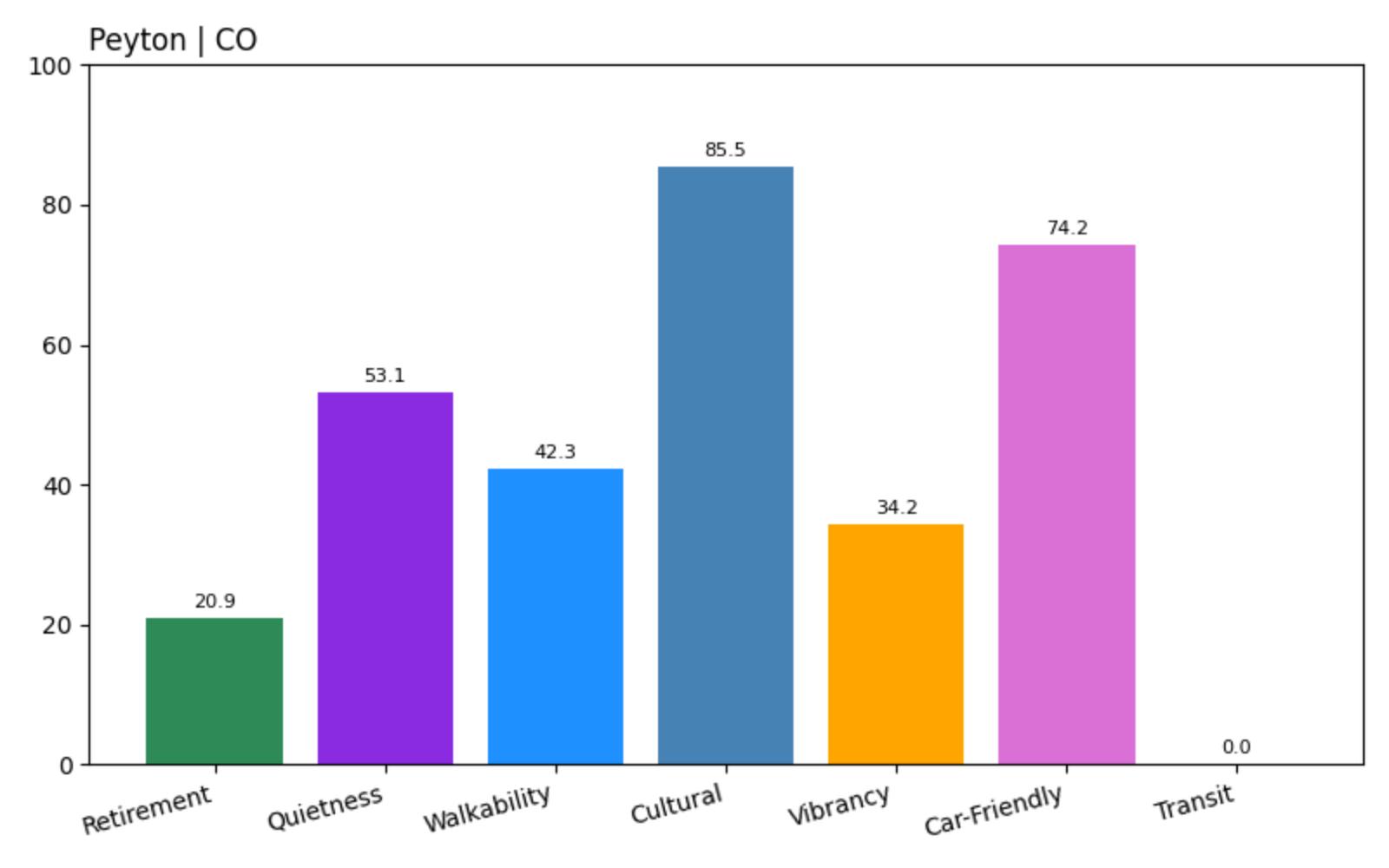
- Overall Retirement Score: 20.95
- Quietness: 53.09
- Walkability: 42.30
- Cultural: 85.55
- Vibrancy: 34.25
- Car-Friendly: 74.17
- Transit: 0.00
Peyton’s exceptionally high cultural score seems inconsistent with rural limitations, while zero transit and limited walkability underscore complete car dependence. The moderate quietness reflects rural residential character, but minimal vibrancy indicates limited daily activities. Rural lifestyle enthusiasts might appreciate the setting, but retirees needing reliable services and emergency access will find conditions challenging.
12. Aurora – Crime and Urban Challenges
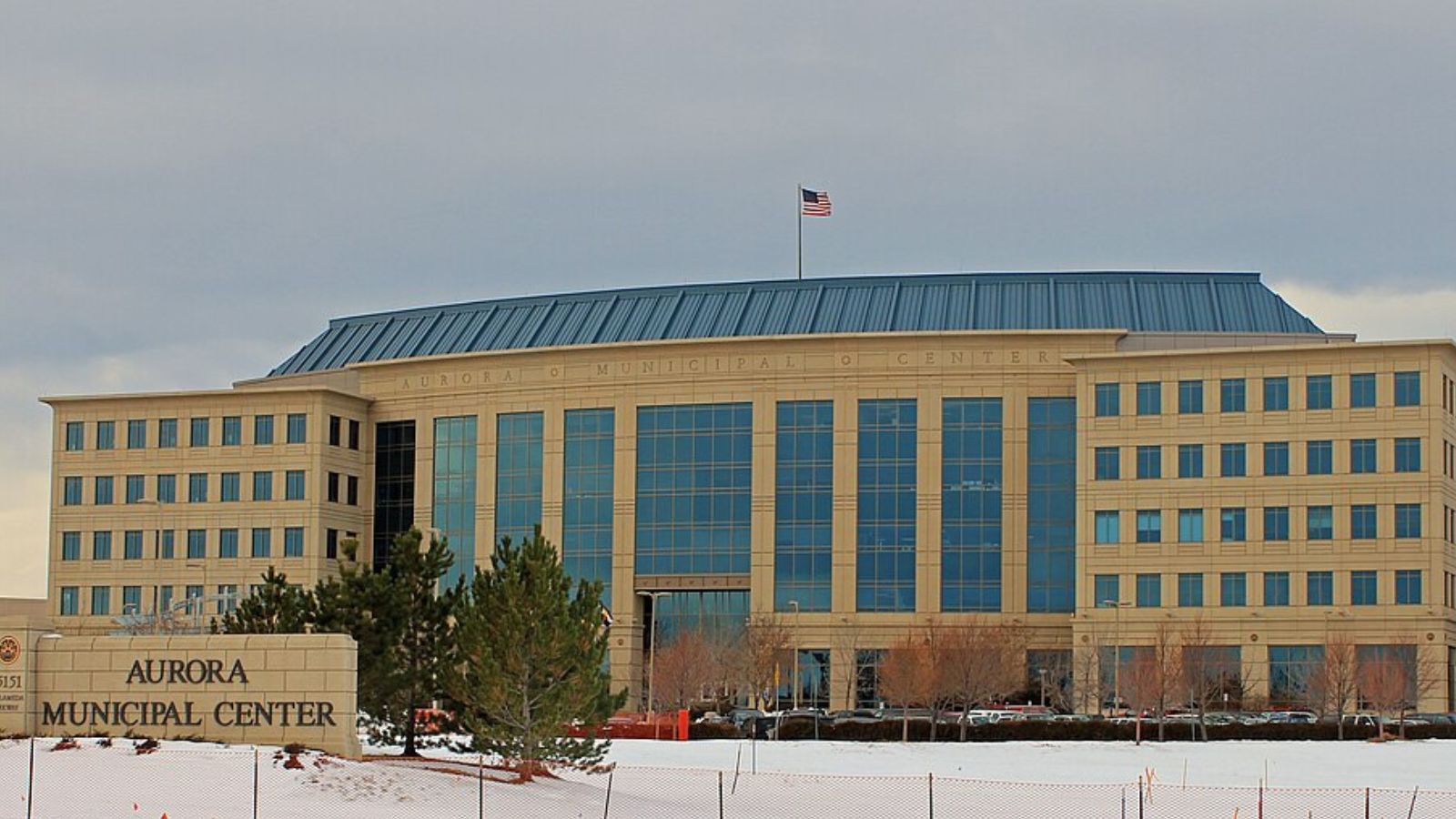
Aurora struggles with crime issues including gang activity and property crimes that affect neighborhood safety and walkability for older residents throughout the city’s 400,000-person population. The sprawling suburban city contains pockets of disinvestment alongside newer developments, creating inconsistent community conditions that make area selection critical for retirees. Traffic congestion on major corridors generates persistent noise and air quality concerns.
Cultural amenities include the Aurora History Museum and various community centers, but crime concerns affect access to programming and outdoor activities. Healthcare access includes major medical facilities, but navigating traffic and crime concerns to reach appointments can be challenging. Public transportation provides regional connectivity but also brings safety concerns in certain areas.
Aurora – ORS 20.19
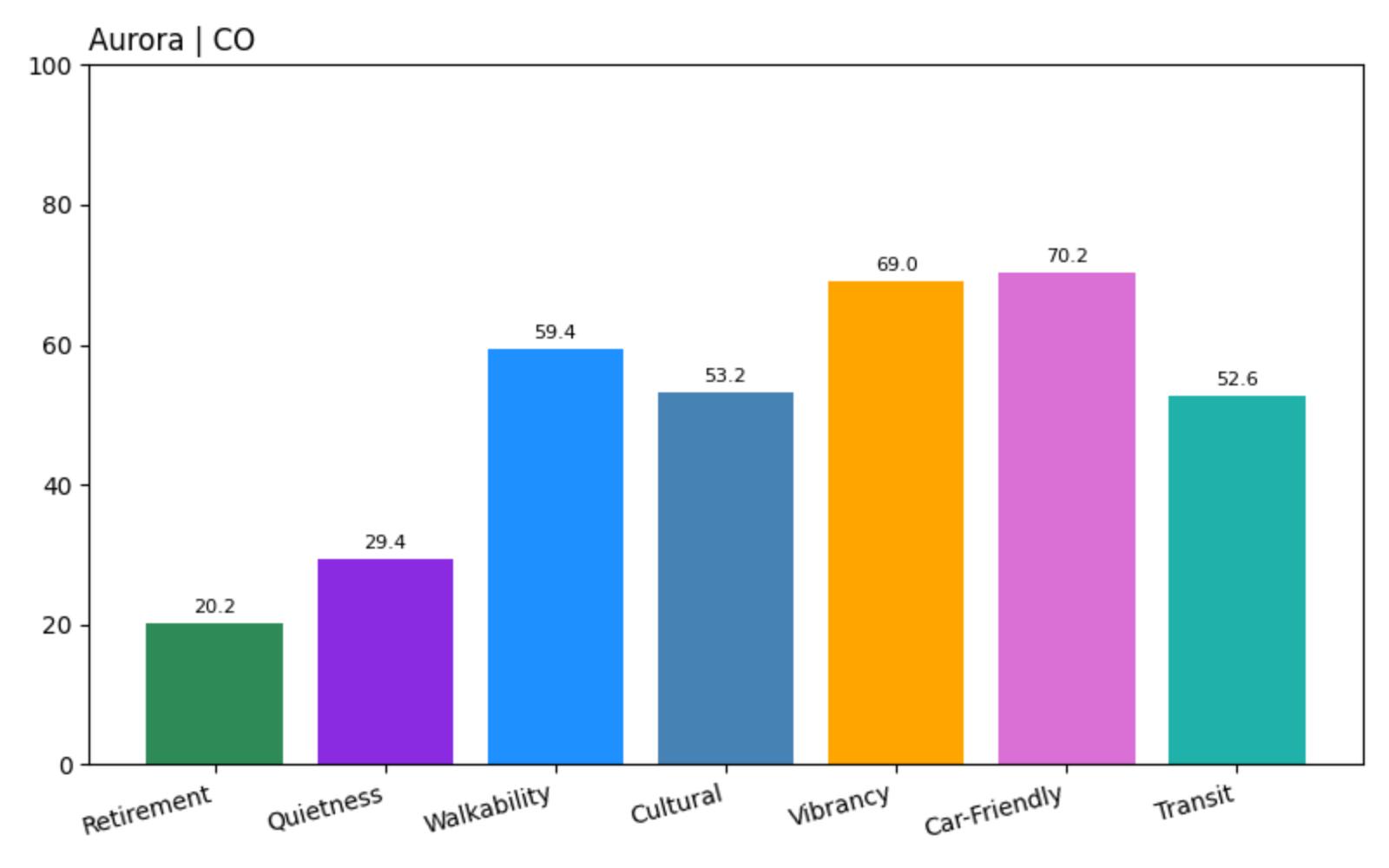
- Overall Retirement Score: 20.19
- Quietness: 29.41
- Walkability: 59.35
- Cultural: 53.18
- Vibrancy: 69.03
- Car-Friendly: 70.18
- Transit: 52.63
Aurora’s moderate scores across most categories reflect mixed urban conditions with some amenities but significant challenges. The low quietness score indicates persistent traffic noise, while crime concerns affect walkability despite decent pedestrian infrastructure. Some neighborhoods provide good amenities, but inconsistent safety and quality throughout the city create uncertainty for retirees.
11. Fountain – Military Town Limitations
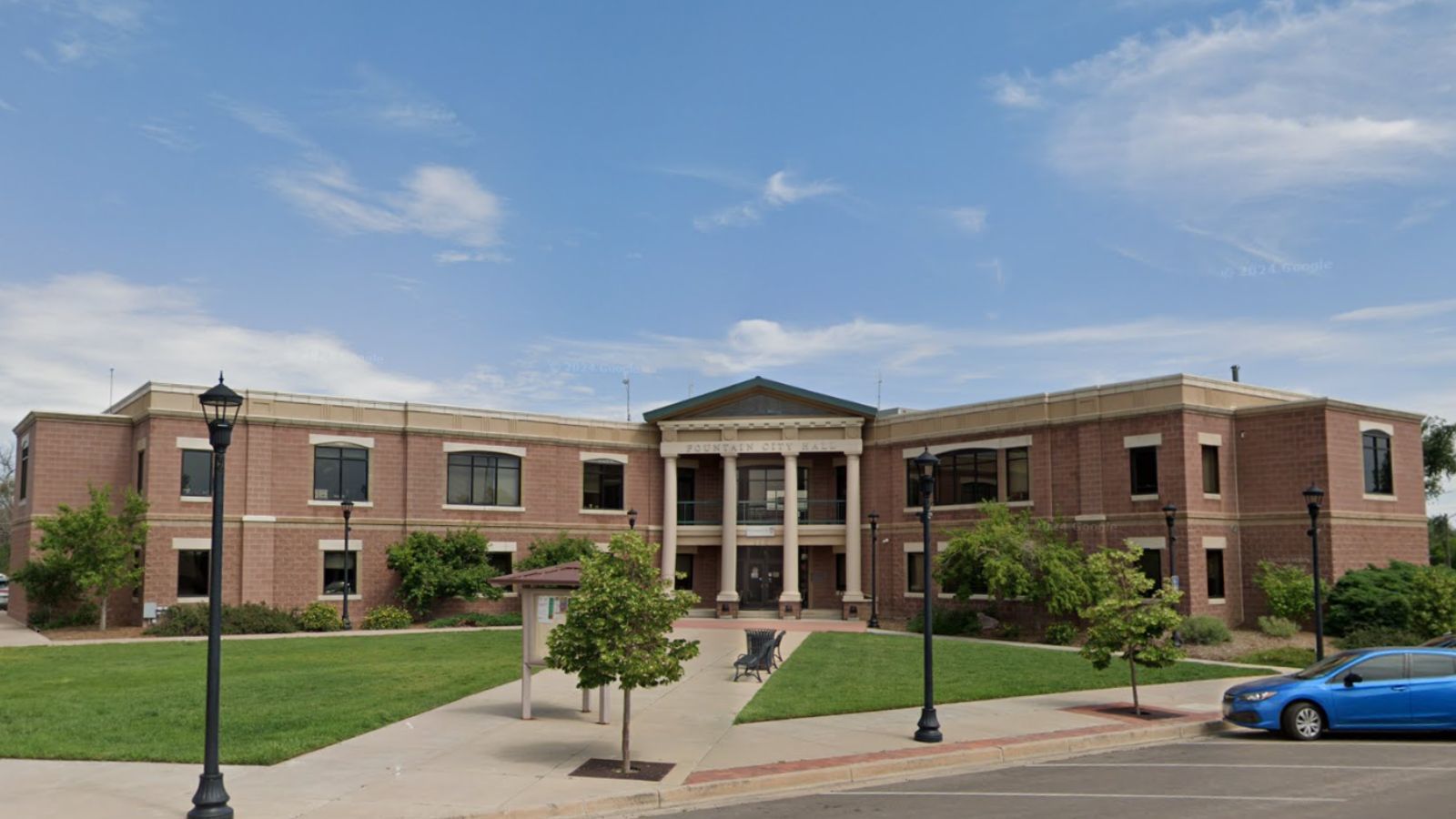
Fountain serves as a bedroom community for military personnel stationed at nearby Fort Carson, where 29,000 residents experience the transient population and limited municipal resources typical of military towns. The community character revolves around military families rather than retiree needs, while limited cultural programming and services reflect the transient population patterns. Traffic from military commuters affects residential streets during peak hours.
Healthcare access includes military facilities that don’t serve civilian retirees, requiring drives to Colorado Springs for comprehensive medical care. Public transportation remains extremely limited, while the military town character means fewer services oriented toward long-term civilian residents seeking retirement community amenities.
Fountain – ORS 19.88
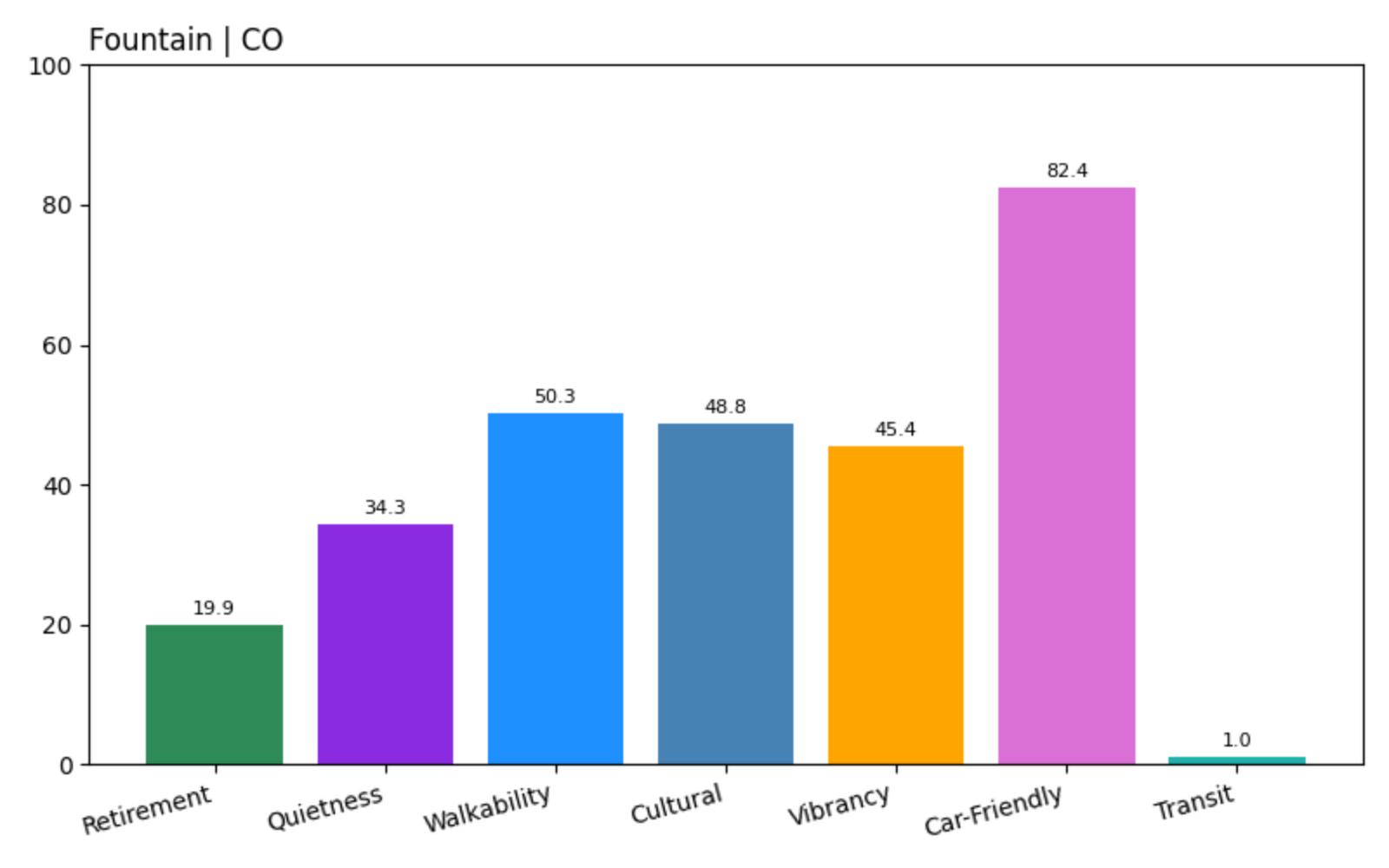
- Overall Retirement Score: 19.88
- Quietness: 34.29
- Walkability: 50.26
- Cultural: 48.75
- Vibrancy: 45.38
- Car-Friendly: 82.38
- Transit: 1.02
Fountain’s moderate walkability and decent car-friendliness reflect suburban layout, while the military community provides some vibrancy. However, limited cultural programming and minimal transit create gaps in retirement amenities, while the transient military population affects long-term community stability. The military connection provides identity but limited services for civilian retirees.
10. Thornton – Suburban Sprawl and Traffic
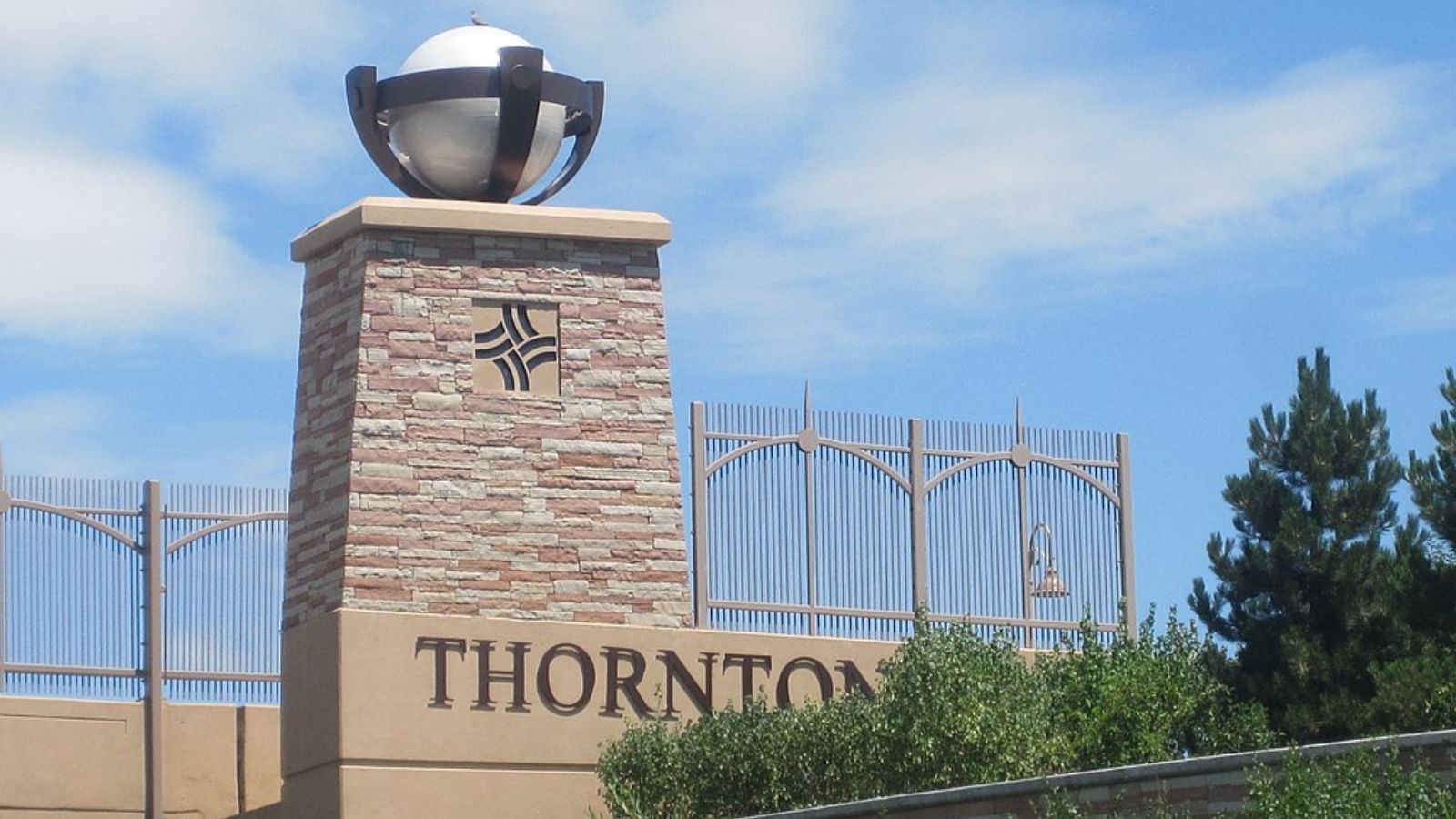
Thornton sprawls across northern Adams County with 140,000 residents creating traffic congestion that affects quality of life throughout the suburban community. Major corridors like Interstate 25, Highway 36, and Washington Street carry constant traffic that generates noise and air quality concerns, while the suburban layout requires extensive driving for most activities. Recent growth has strained infrastructure and municipal services.
Cultural amenities include community centers and the Carpenter Park amphitheater, but the sprawling layout means long drives between activities. Healthcare access requires navigating traffic to reach medical facilities, while public transportation provides limited coverage despite the city’s size and proximity to Denver’s transit network.
Thornton – ORS 18.69

- Overall Retirement Score: 18.69
- Quietness: 36.74
- Walkability: 52.83
- Cultural: 58.33
- Vibrancy: 62.19
- Car-Friendly: 75.48
- Transit: 38.95
Thornton’s moderate cultural and vibrancy scores reflect suburban amenities, while decent walkability applies to certain areas and moderate transit provides some regional connectivity. However, the low quietness score indicates persistent traffic noise, and the suburban sprawl requires significant driving for most activities. Suburban residents comfortable with car dependency might adapt, but those seeking peaceful communities will find traffic concerns problematic.
9. Clifton – Rural Highway Community
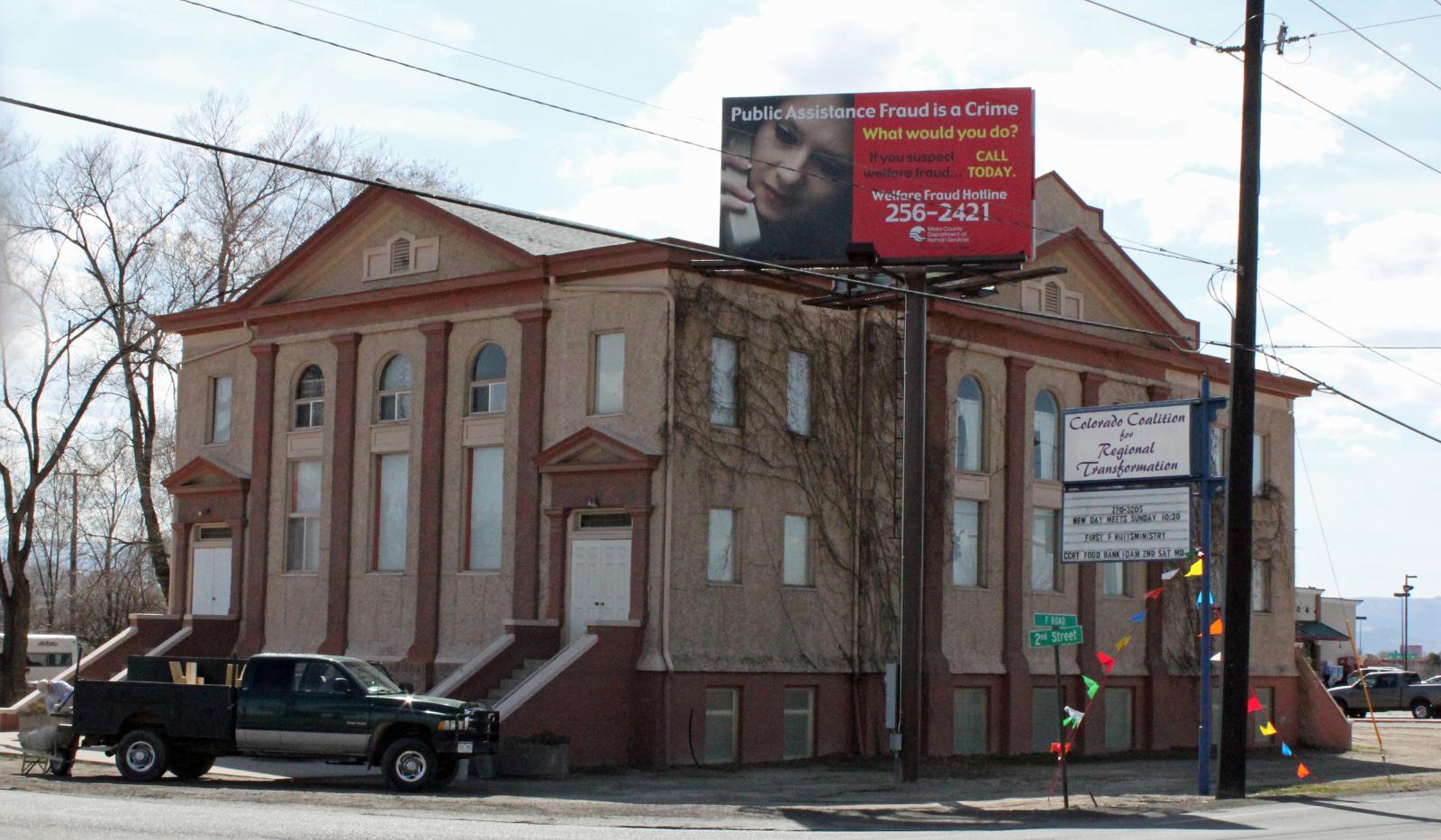
Clifton sits along Highway 6 in Mesa County as an unincorporated community where 20,000 residents live in a strip development pattern that lacks traditional downtown character or municipal services. The highway commercial corridor creates traffic noise and safety concerns, while the unincorporated status means limited public services and infrastructure maintenance. Rural residential areas spread outward from the highway corridor without comprehensive planning.
Cultural programming remains limited due to the unincorporated status and strip development pattern, while healthcare access requires drives to Grand Junction medical facilities. Public transportation provides minimal coverage, while the highway setting creates pedestrian safety concerns and noise pollution that affects residential areas.
Clifton – ORS 17.47
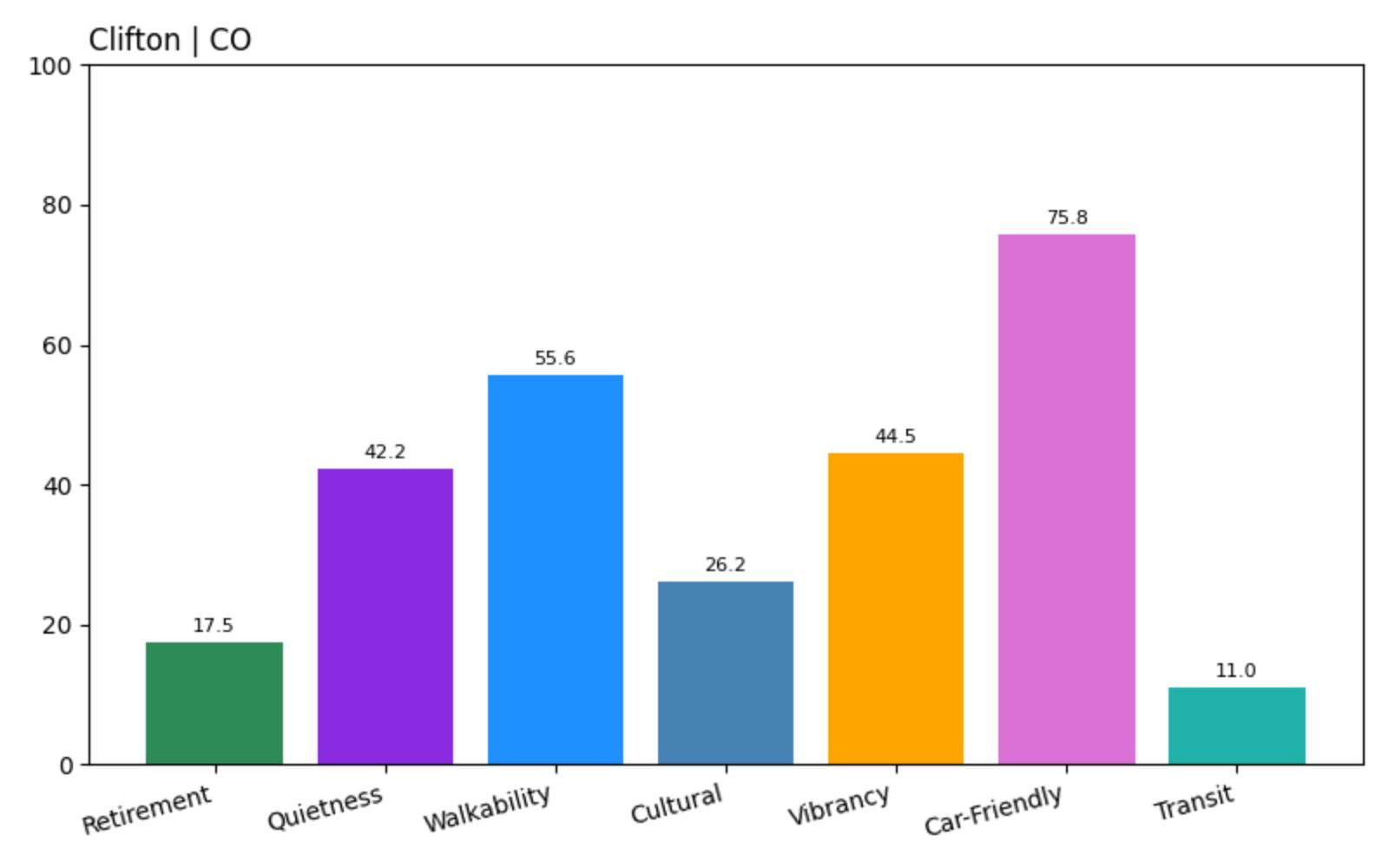
- Overall Retirement Score: 17.47
- Quietness: 42.25
- Walkability: 55.62
- Cultural: 26.20
- Vibrancy: 44.54
- Car-Friendly: 75.81
- Transit: 10.96
Clifton’s moderate walkability reflects commercial corridor development, while decent car-friendliness enables regional travel. However, limited cultural programming and minimal transit create gaps in retirement amenities, while the highway setting affects residential quality through noise and traffic concerns. The unincorporated status limits municipal services that support comfortable retirement living.
8. La Salle-Gilcrest – Agricultural Corridor Challenges
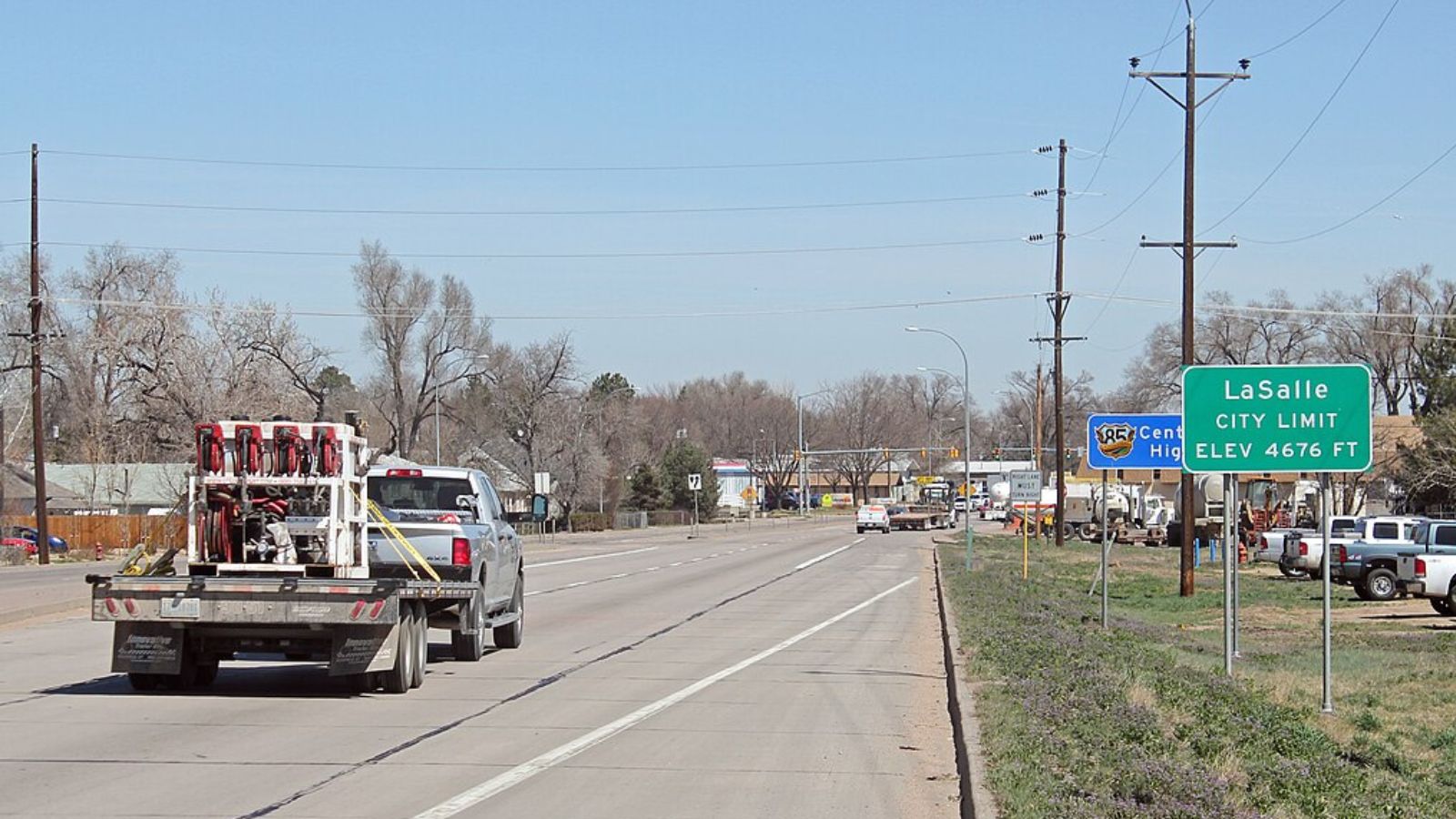
This combined area in Weld County represents rural communities along Highway 85 where 3,500 residents live amid agricultural operations and increasing suburban traffic. The highway corridor brings truck traffic serving farming operations, while recent residential development has created suburban expectations in rural settings. Air quality concerns from agricultural activities and dust affect outdoor recreation.
Cultural programming exists through community centers, but entertainment options remain extremely limited. Healthcare services require drives to Greeley or the northern Denver metro area, while shopping options are minimal within the immediate area. The agricultural setting provides quiet residential areas but limited services and infrastructure.
La Salle-Gilcrest – ORS 17.43
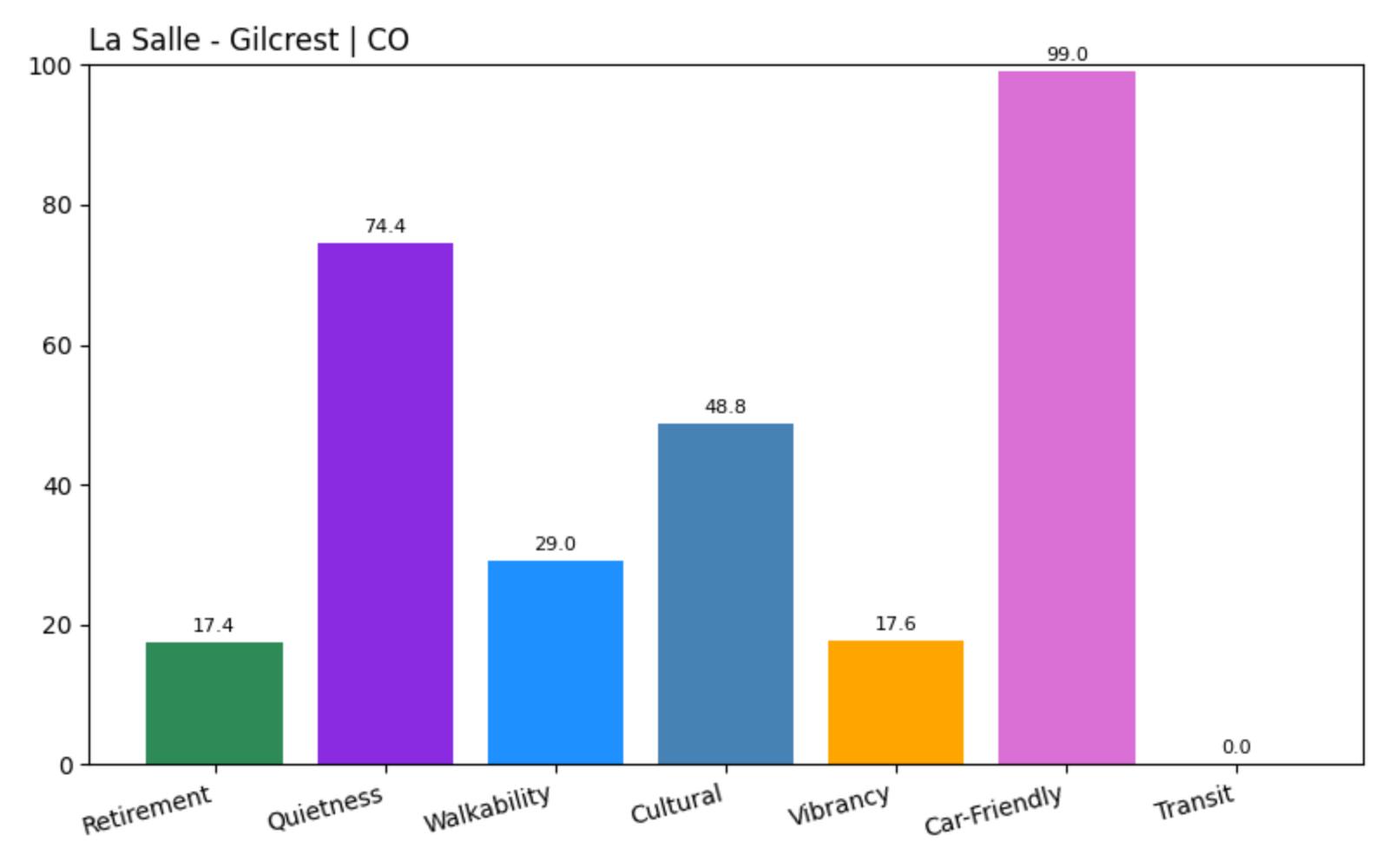
- Overall Retirement Score: 17.43
- Quietness: 74.43
- Walkability: 29.02
- Cultural: 48.75
- Vibrancy: 17.65
- Car-Friendly: 99.05
- Transit: 0.00
The area’s near-perfect car-friendliness and high quietness reflect rural driving conditions and agricultural setting, while moderate cultural programming indicates some community activities. However, zero transit and low walkability underscore complete car dependence, while minimal vibrancy shows limited daily activities. Agricultural character appeals to some residents, but retirees need more comprehensive services.
7. Northglenn – Urban Density and Traffic
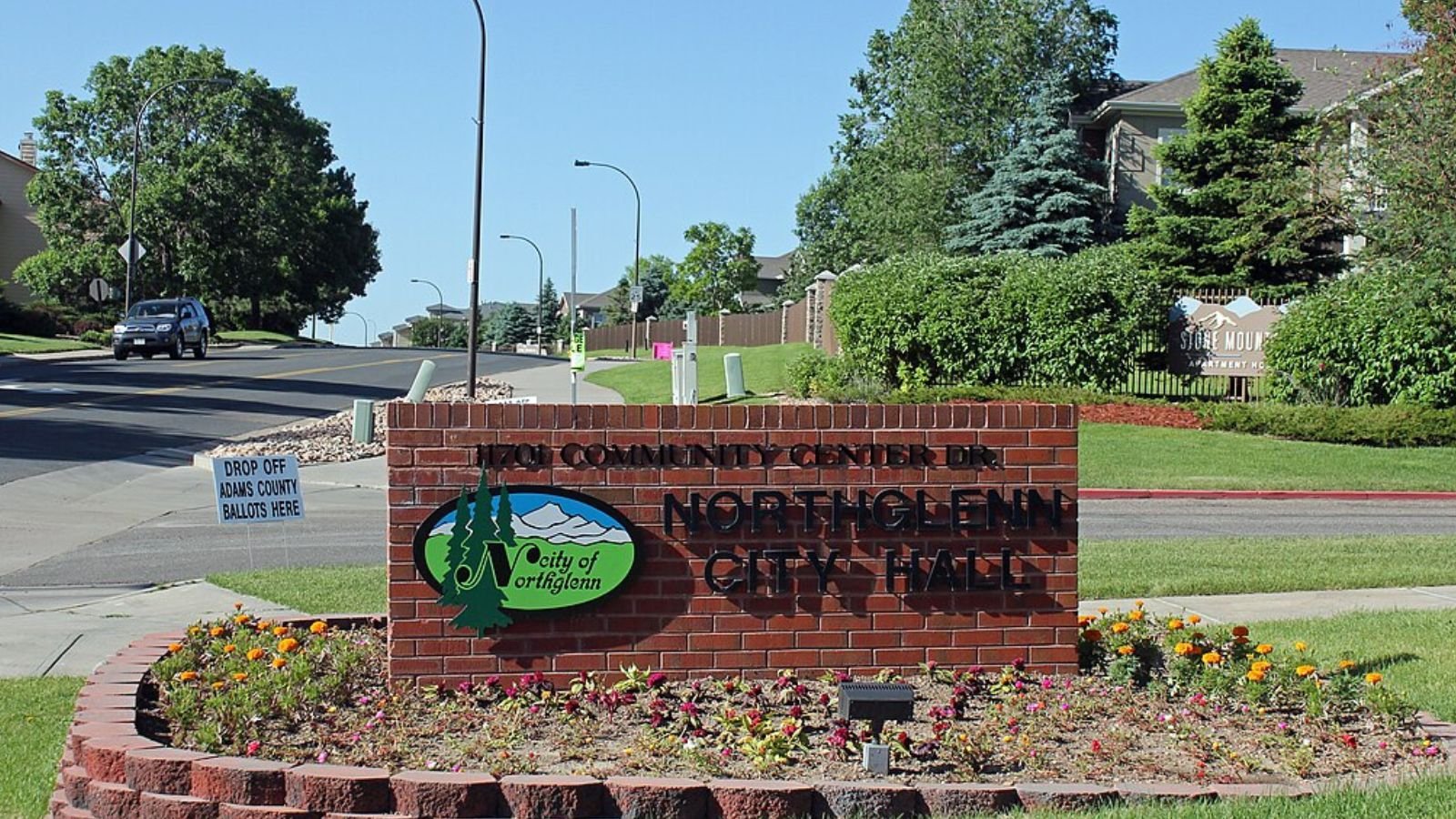
Northglenn packs 38,000 residents into a compact suburban area where traffic congestion on major corridors like Highway 36 and Washington Street creates persistent noise and air quality concerns. The suburban density provides some walkability but little escape from traffic noise, while proximity to Denver brings urban challenges without corresponding cultural amenities. Recent growth has strained municipal services and infrastructure.
Cultural programming includes community centers and the D.L. Parsons Theatre, but entertainment options remain limited compared to nearby Denver. Healthcare access requires navigating traffic to reach medical facilities, while public transportation provides moderate regional connectivity through RTD bus services.
Northglenn – ORS 14.62
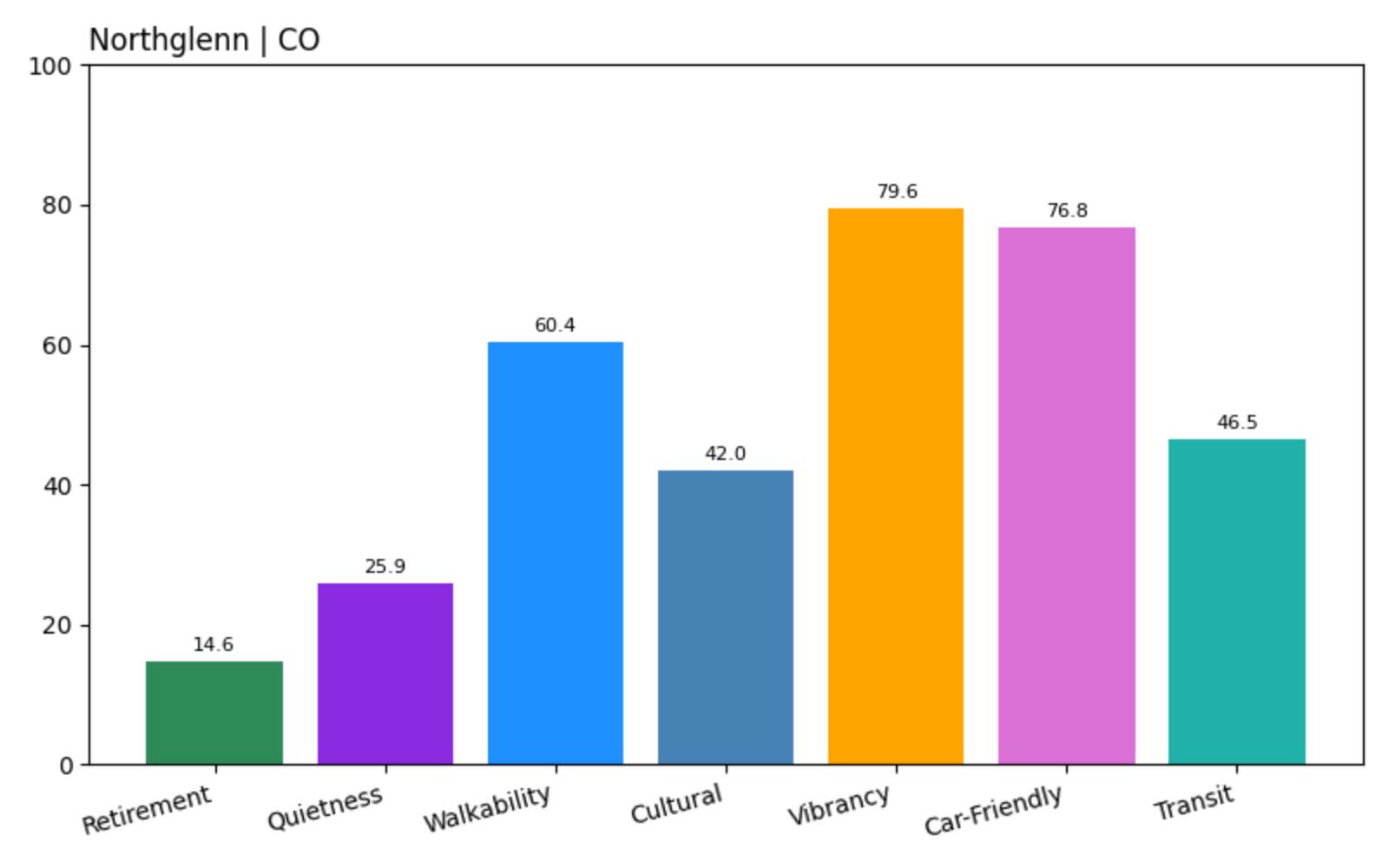
- Overall Retirement Score: 14.62
- Quietness: 25.87
- Walkability: 60.35
- Cultural: 42.05
- Vibrancy: 79.60
- Car-Friendly: 76.82
- Transit: 46.48
Northglenn’s high vibrancy and decent walkability reflect suburban density and business activity, while moderate transit provides regional access. However, the extremely low quietness score indicates persistent traffic noise that dominates residential areas. The suburban location provides some amenities, but traffic concerns and limited cultural programming create challenges for retirees seeking peaceful community living.
6. Commerce City – Industrial Character and Pollution
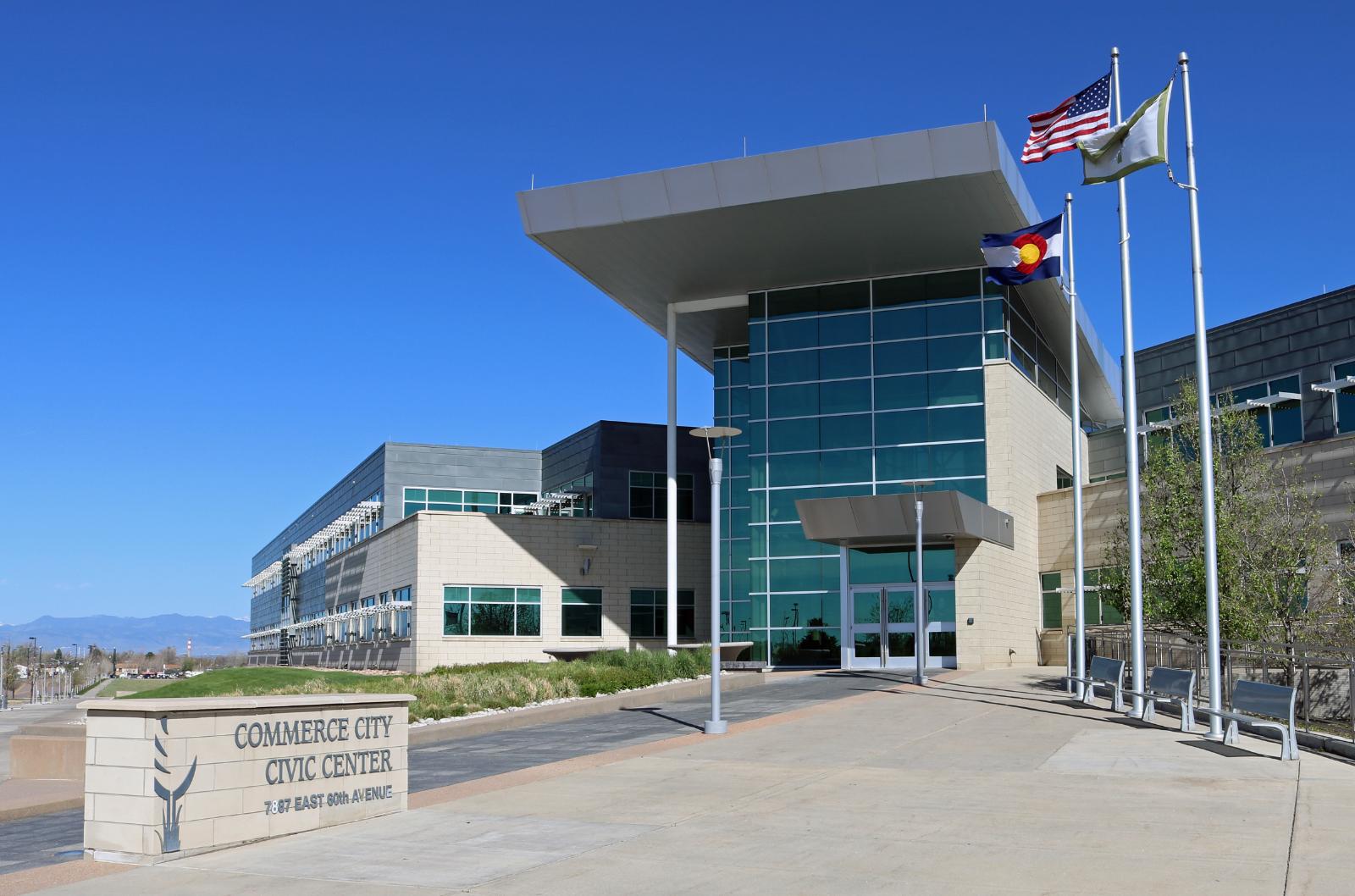
Commerce City combines suburban residential areas with major industrial facilities including oil refineries that create air quality concerns and environmental health risks for residents. The 62,000-person community regularly deals with odors and emissions from petroleum processing, while heavy truck traffic serving industrial operations generates noise and road damage. Air quality concerns from industrial sources affect outdoor activities and health considerations for older adults.
Cultural amenities include the Dick’s Sporting Goods Park soccer stadium, but the industrial character limits residential desirability and affects property values. Healthcare access requires drives to nearby suburban medical facilities, while public transportation provides limited coverage. The industrial presence creates economic benefits but environmental concerns that affect retirement desirability.
Commerce City – ORS 13.62
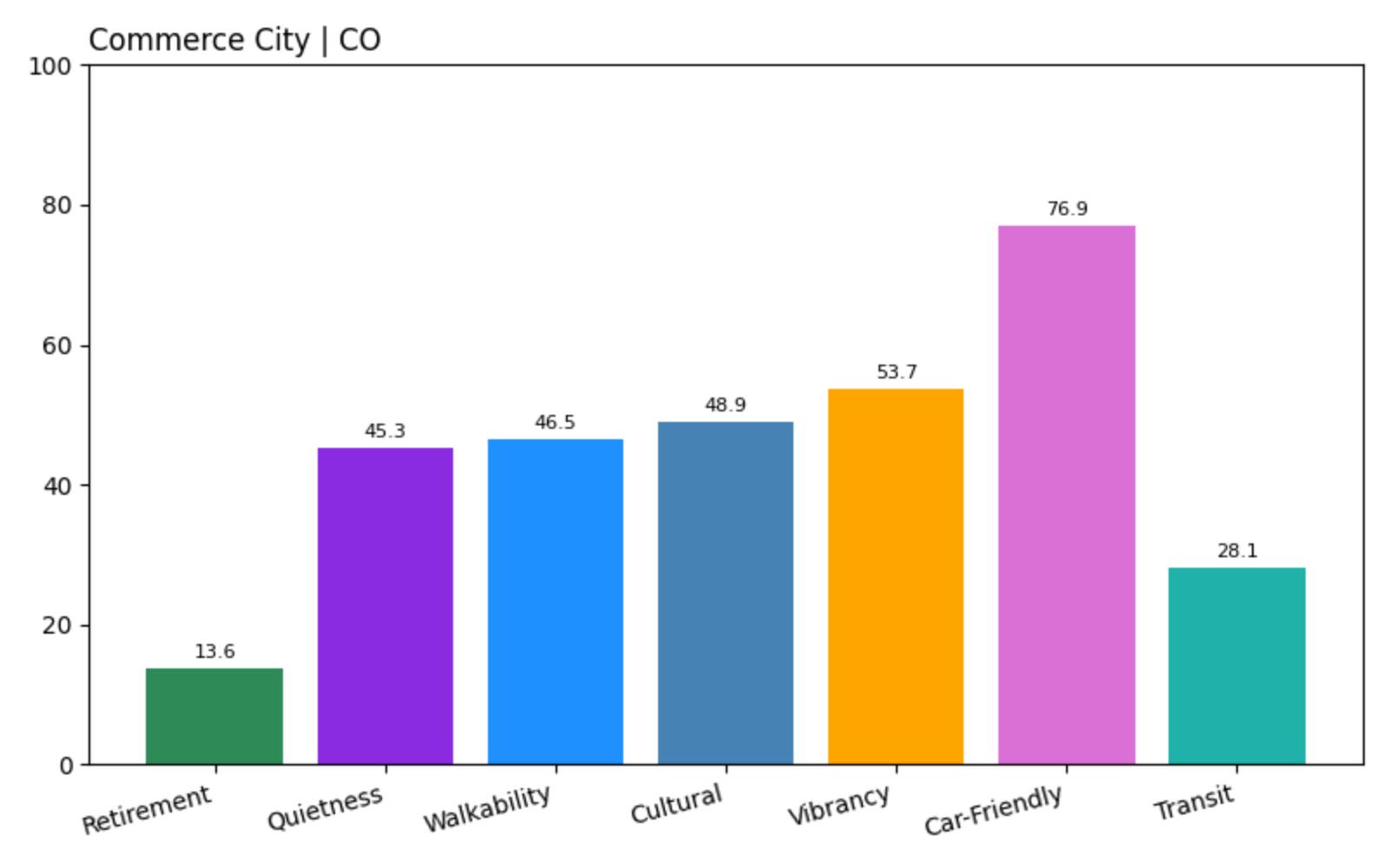
- Overall Retirement Score: 13.62
- Quietness: 45.27
- Walkability: 46.47
- Cultural: 48.85
- Vibrancy: 53.73
- Car-Friendly: 76.90
- Transit: 28.07
Commerce City’s moderate scores across categories reflect mixed suburban and industrial conditions. The industrial presence provides some economic vibrancy but creates environmental concerns that affect residential desirability. Workers in industrial sectors might adapt to the conditions, but retirees sensitive to air quality and industrial activity will find the environmental challenges concerning for long-term health and comfort.
5. Lochbuie – Rural Isolation and Limited Services
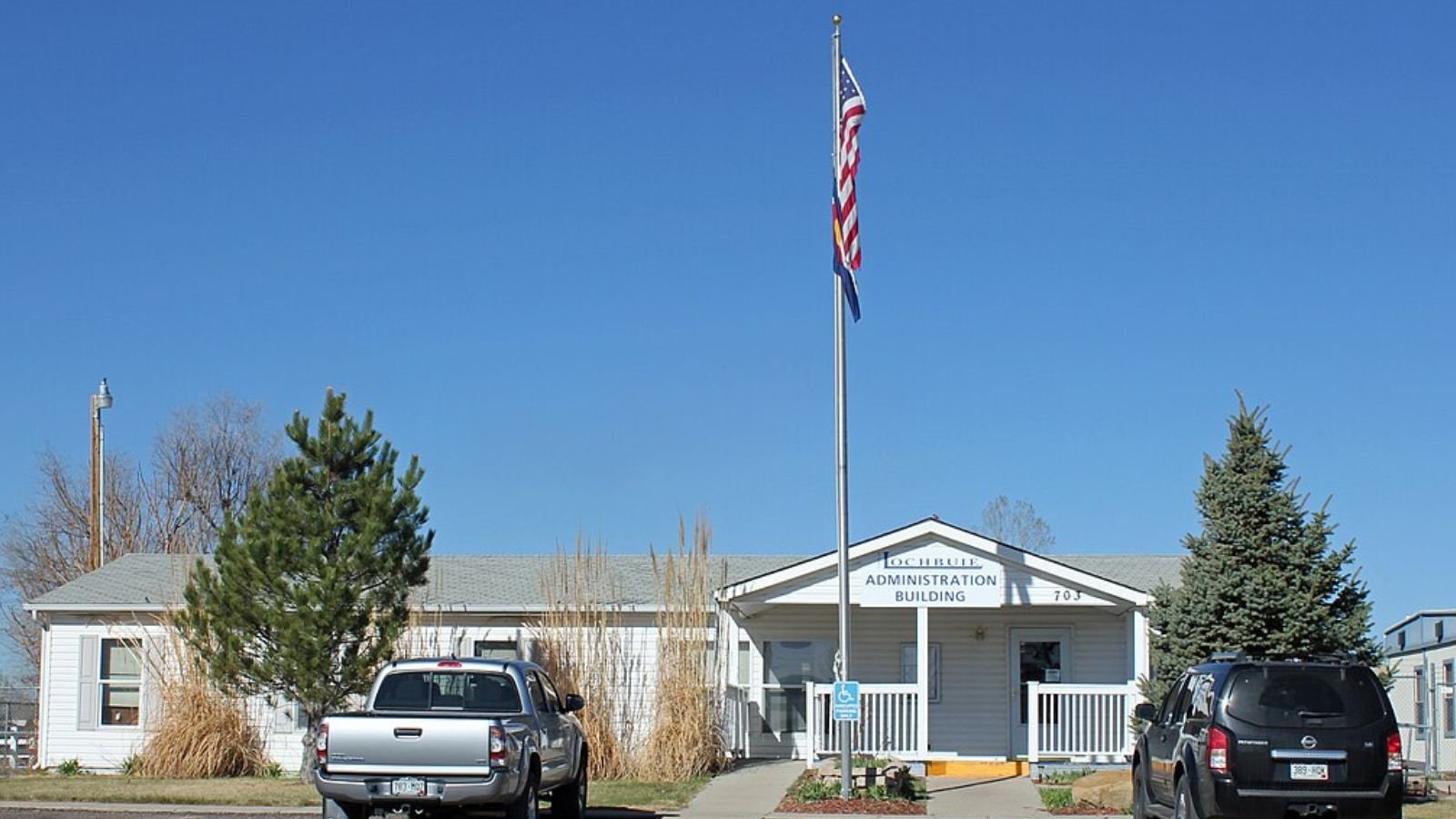
Lochbuie represents rural residential development in Weld County, where 5,400 residents live in newer housing developments that lack established community services and infrastructure. The rural setting provides quiet neighborhoods, but essential services require significant drives to Brighton or other urban areas. Limited public utilities and municipal services create challenges for seniors requiring reliable infrastructure and emergency services.
Cultural programming exists through community centers, but entertainment options remain extremely limited. Healthcare services require long drives to urban medical facilities, while shopping and dining options are minimal within the community. The newer development lacks mature community character and established social networks.
Lochbuie – ORS 13.07
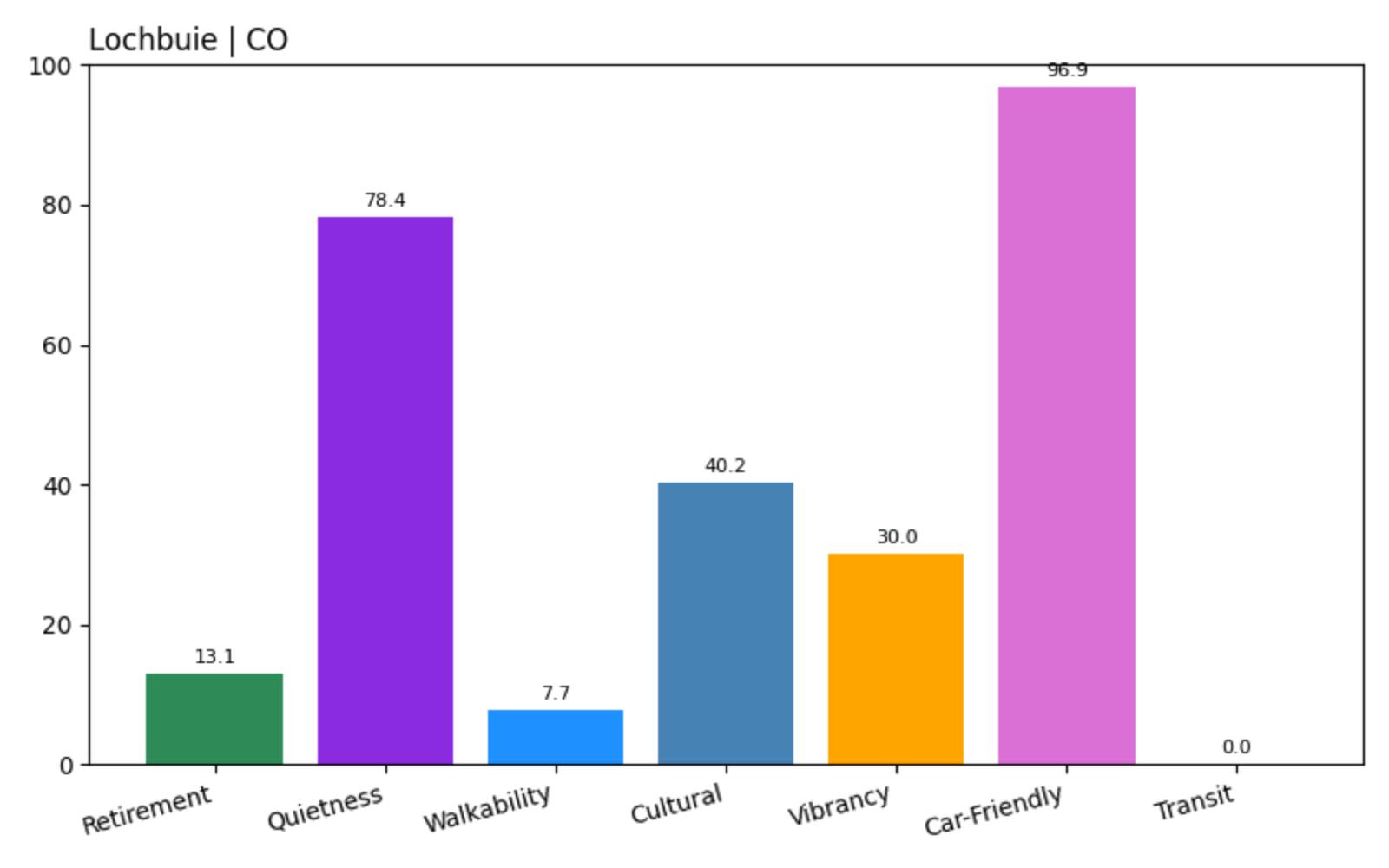
- Overall Retirement Score: 13.07
- Quietness: 78.36
- Walkability: 7.70
- Cultural: 40.16
- Vibrancy: 29.98
- Car-Friendly: 96.89
- Transit: 0.00
Lochbuie’s excellent car-friendliness and high quietness reflect rural residential conditions, while moderate cultural programming indicates some community activities. However, zero transit and extremely low walkability create complete car dependence, while limited vibrancy shows minimal daily activities. The rural suburban setting appeals to some residents, but retirees needing walkable communities will find significant limitations.
4. Air Force Academy – Military Restrictions and Limited Access

The Air Force Academy area serves military personnel and their families, where 6,700 residents live within or adjacent to restricted military installations that limit community access and civilian services. The military focus means limited services oriented toward civilian retirees, while security restrictions affect mobility and access to facilities. The community character revolves around military operations rather than retirement needs.
Cultural programming exists primarily for military personnel and their families, while civilian access remains limited. Healthcare services focus on military personnel, requiring civilian retirees to travel to Colorado Springs for comprehensive medical care. The military installation provides some amenities but creates access restrictions and service limitations for civilian residents.
Air Force Academy – ORS 10.82
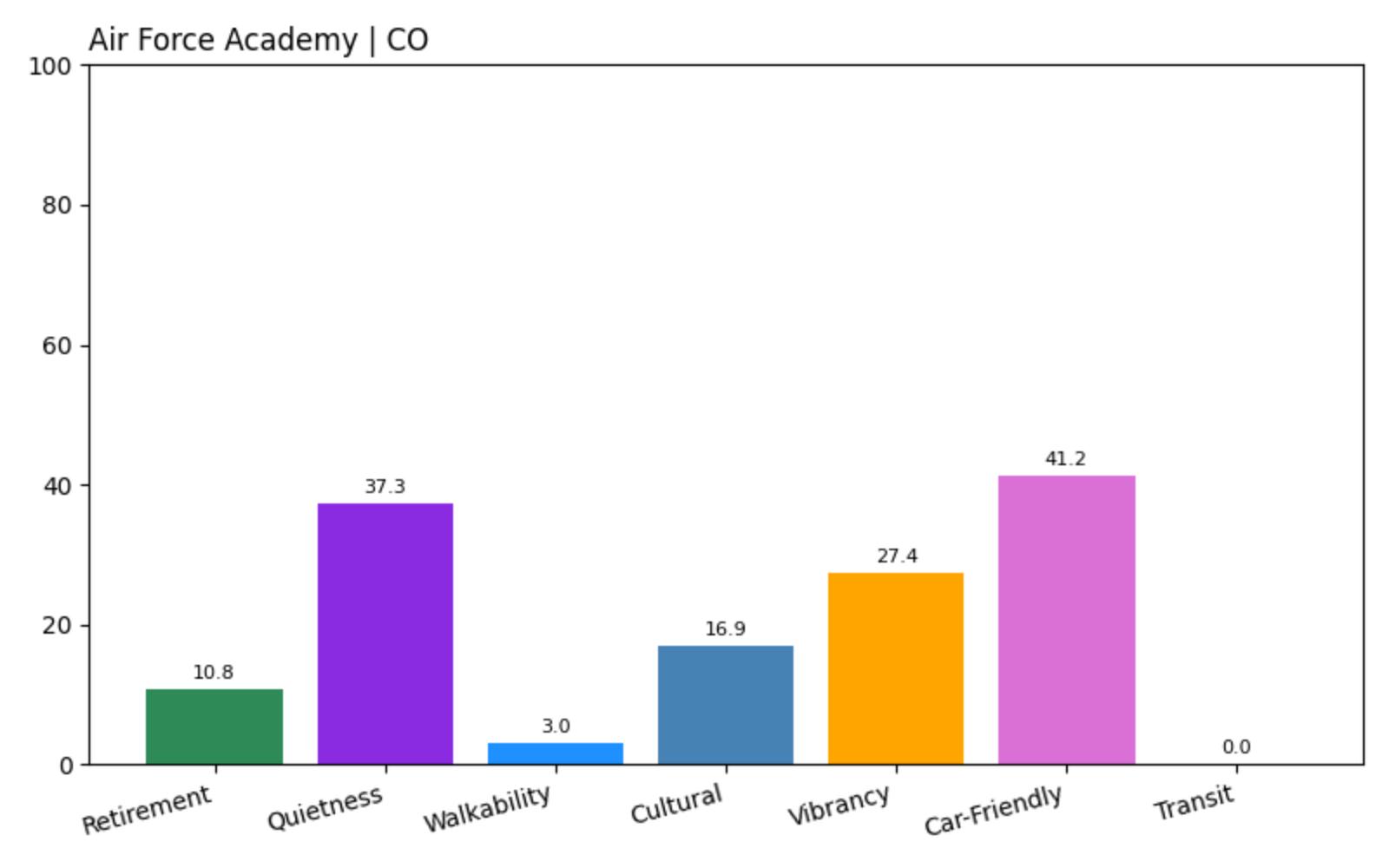
- Overall Retirement Score: 10.82
- Quietness: 37.33
- Walkability: 3.01
- Cultural: 16.90
- Vibrancy: 27.43
- Car-Friendly: 41.19
- Transit: 0.00
The Air Force Academy area’s extremely low walkability and zero transit reflect military installation limitations, while minimal cultural programming serves military rather than civilian needs. The restricted access and security requirements create obstacles for civilian retirees seeking community engagement and services. Military retirees might have some access, but civilian retirees will find significant limitations and restrictions.
3. Evans – Urban Problems in Small City
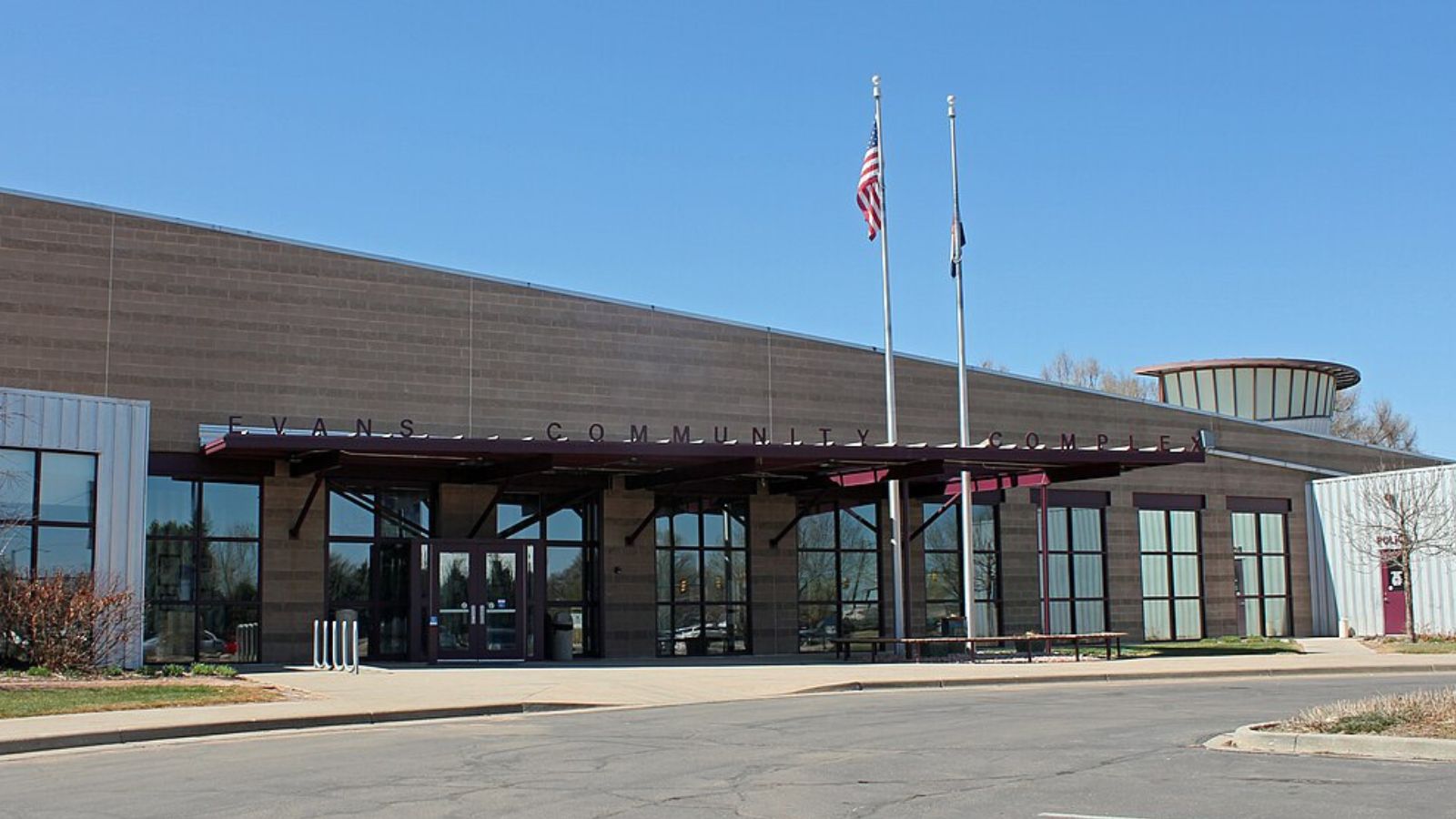
Evans struggles with crime issues including drug activity and property crimes that affect neighborhood safety and walkability for the community’s 22,000 residents. The small city lacks resources to address urban problems effectively, while proximity to Greeley brings additional challenges including odors from agricultural operations. Limited municipal resources constrain services and infrastructure maintenance.
Cultural programming remains limited due to budget constraints, while healthcare access requires travel to Greeley medical facilities. Public transportation provides minimal coverage, while crime concerns affect public safety for seniors walking to services or using limited transit options.
Evans – ORS 9.80
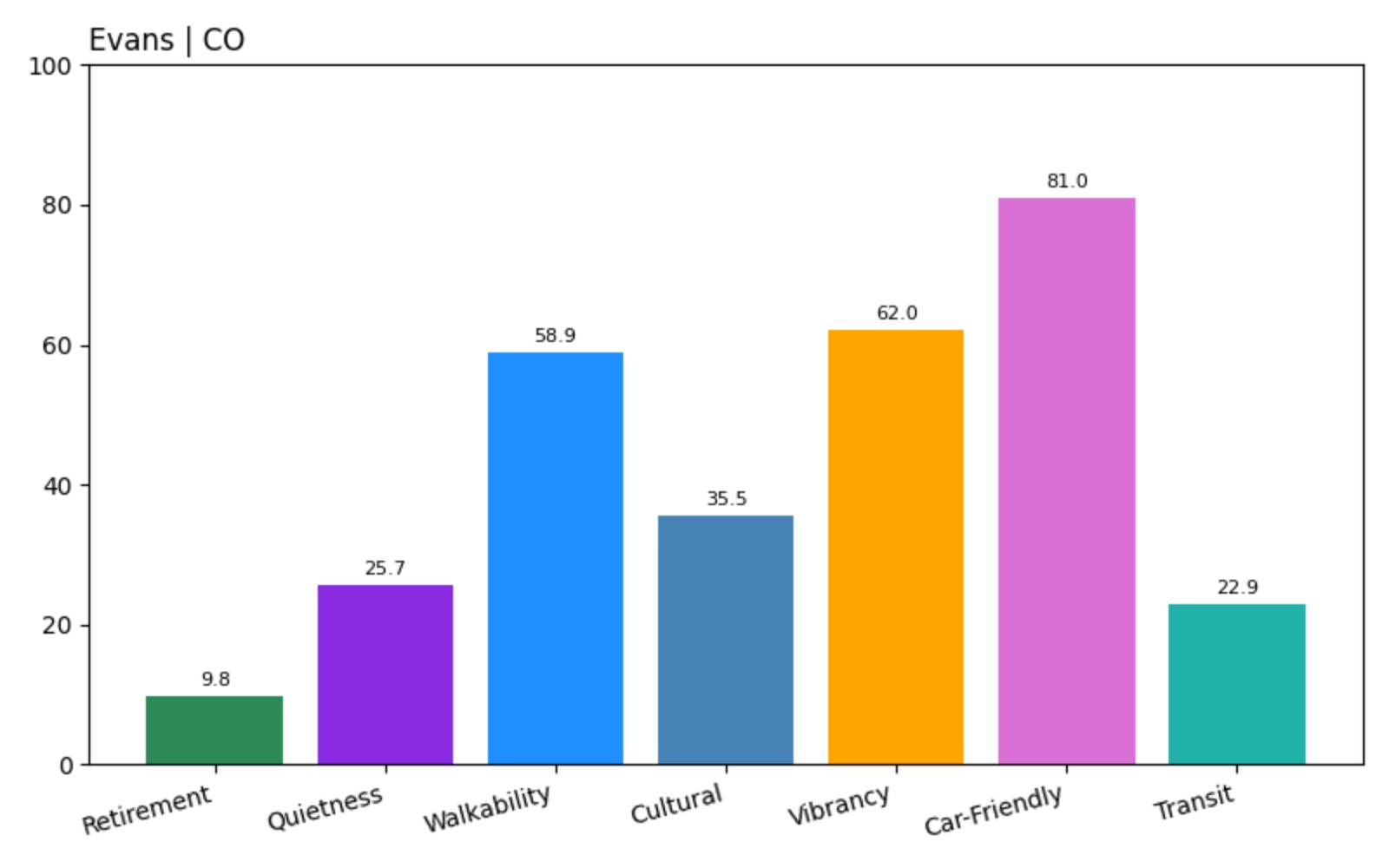
- Overall Retirement Score: 9.80
- Quietness: 25.71
- Walkability: 58.88
- Cultural: 35.54
- Vibrancy: 62.05
- Car-Friendly: 81.00
- Transit: 22.93
Evans’ moderate walkability and vibrancy reflect its urban character, while decent car-friendliness enables regional travel. However, the extremely low quietness score indicates persistent noise concerns, while limited cultural programming creates gaps in retirement amenities. Crime concerns and urban problems without corresponding resources make this location challenging for retirees seeking safe, peaceful community living.
2. Federal Heights – Crime and Urban Decay
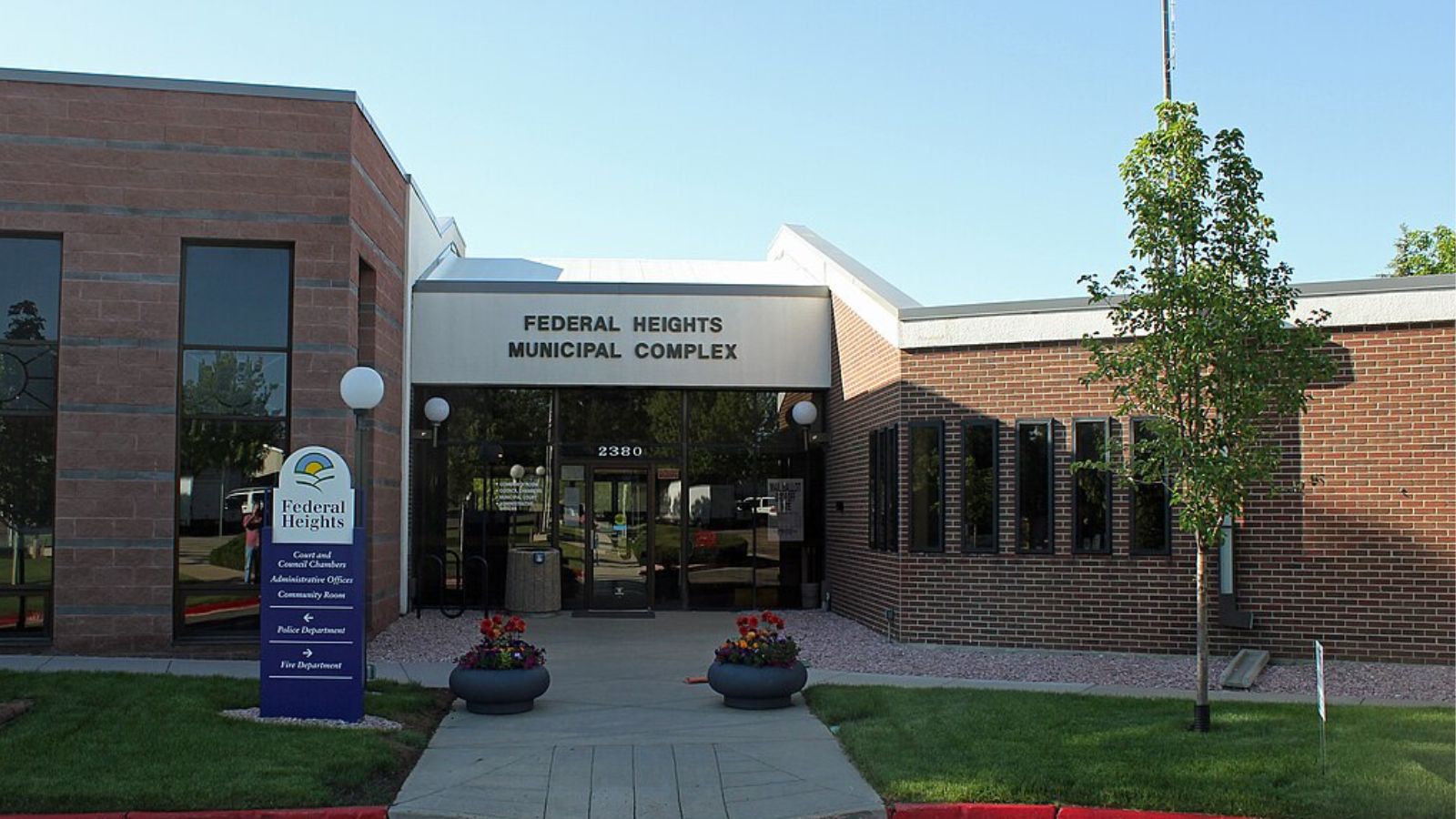
Federal Heights packs 12,500 residents into a small area with significant crime problems including drug activity, property crimes, and gang issues that affect neighborhood safety throughout the community. The city struggles with limited resources to address urban problems effectively, while aging infrastructure and deferred maintenance create additional challenges. Crime statistics consistently rank among the highest in the Denver metropolitan area.
Cultural programming remains minimal due to budget constraints and safety concerns, while healthcare access requires travel to nearby suburban facilities through areas with crime concerns. Public transportation provides regional connectivity but also brings additional safety concerns for older adults using transit services.
Federal Heights – ORS 8.26
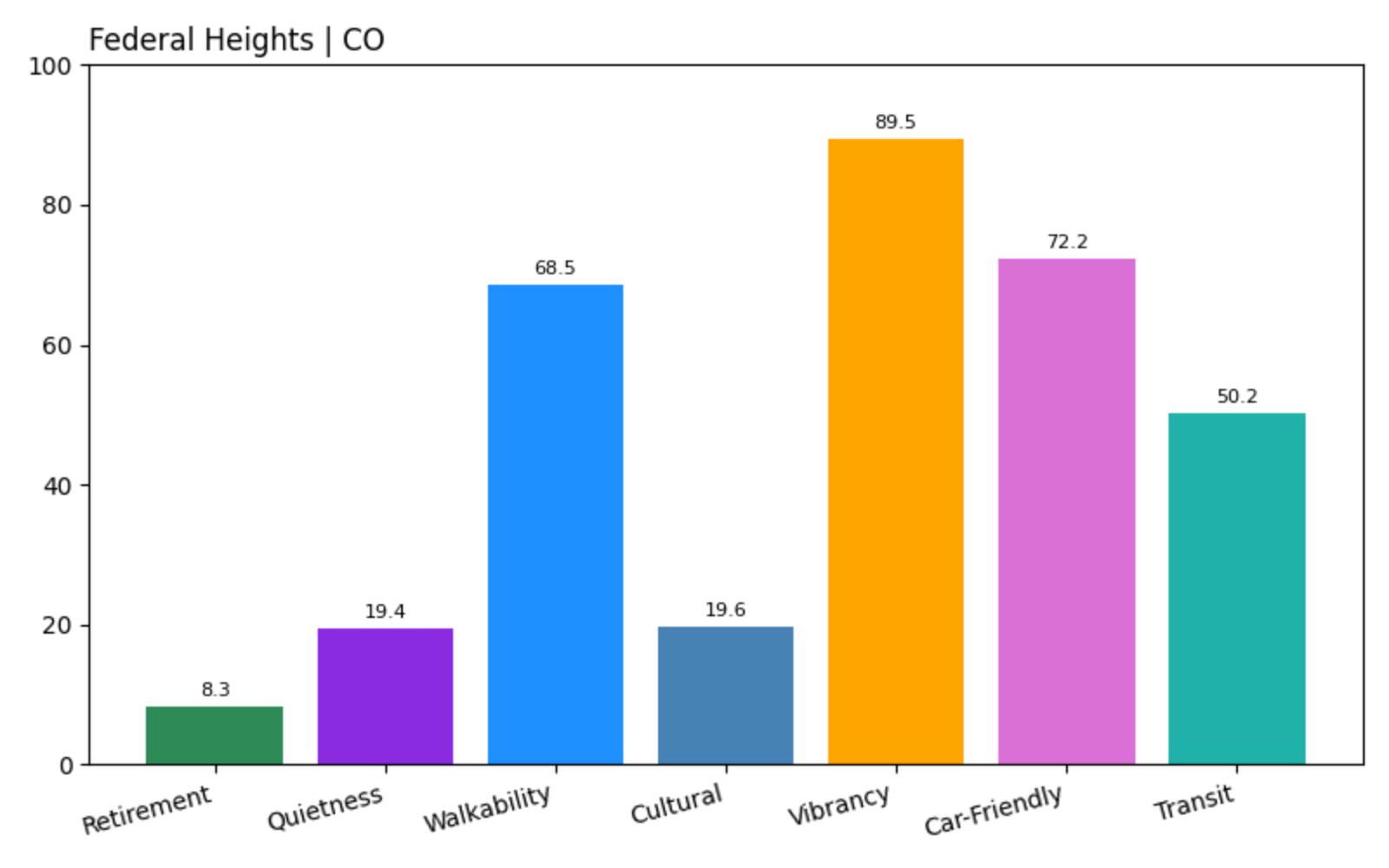
- Overall Retirement Score: 8.26
- Quietness: 19.38
- Walkability: 68.52
- Cultural: 19.65
- Vibrancy: 89.48
- Car-Friendly: 72.23
- Transit: 50.16
Federal Heights’ high vibrancy and decent walkability reflect urban density and business activity, while moderate transit provides regional access. However, extremely low quietness and cultural scores indicate persistent noise and minimal programming, while crime concerns affect walkability safety despite good pedestrian infrastructure. The urban problems without corresponding resources make this location unsuitable for retirees seeking safe community living.
1. Glendale – Urban Intensity and Cherry Creek Challenges
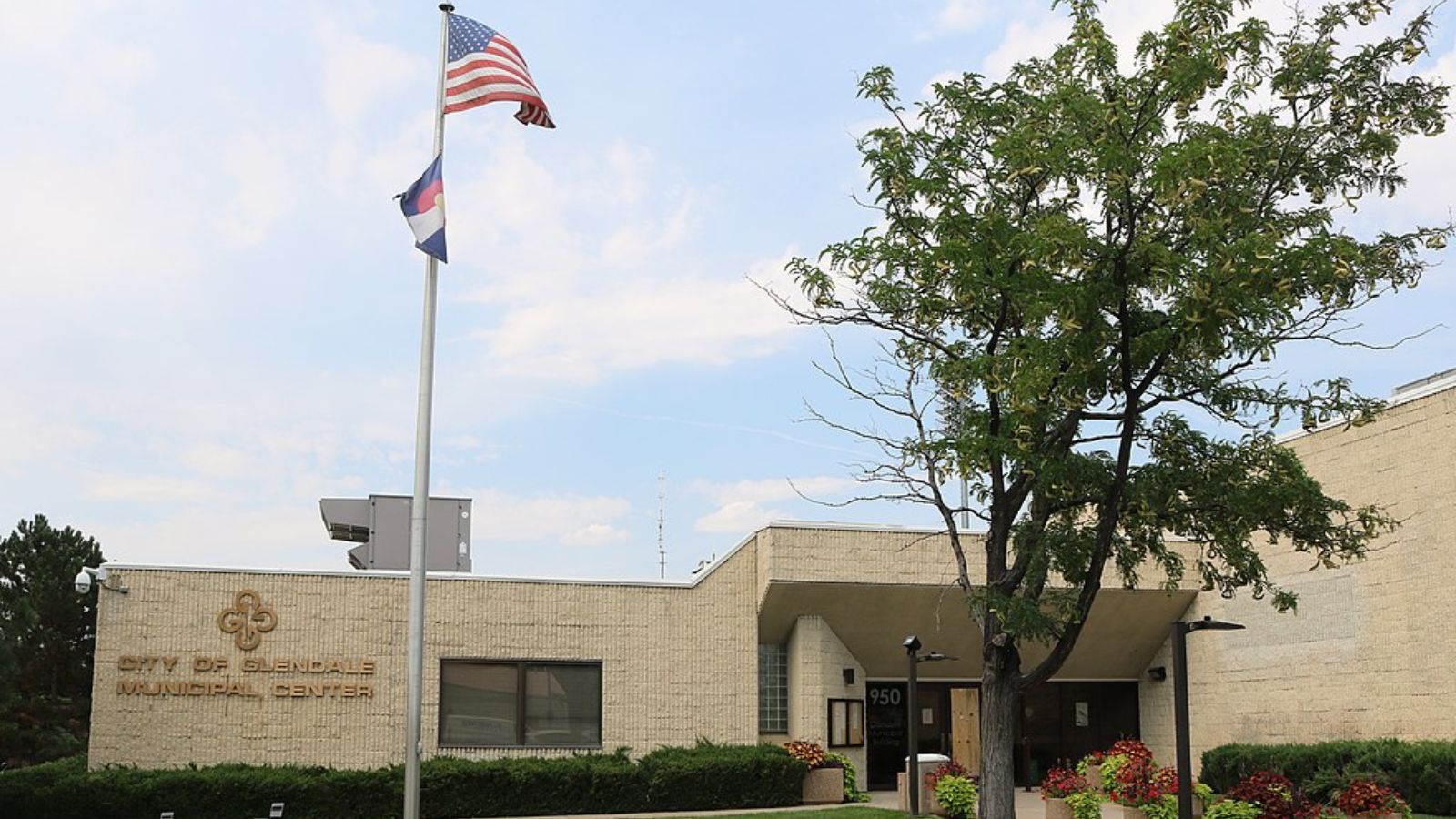
Glendale crams 4,600 residents into just 0.55 square miles, creating extreme urban density surrounded by busy Denver streets and the high-end Cherry Creek shopping district. The tiny city experiences constant traffic from shoppers and commuters, while its location at the intersection of major thoroughfares creates persistent noise pollution that affects all residential areas. The urban intensity provides no escape from metropolitan stress and activity.
While proximity to Cherry Creek provides cultural access and upscale amenities, the extreme density and constant activity create living conditions that can overwhelm retirees seeking peaceful residential environments. Healthcare access benefits from proximity to Denver medical facilities, but navigation and parking challenges make appointments stressful and expensive.
Glendale – ORS 3.07
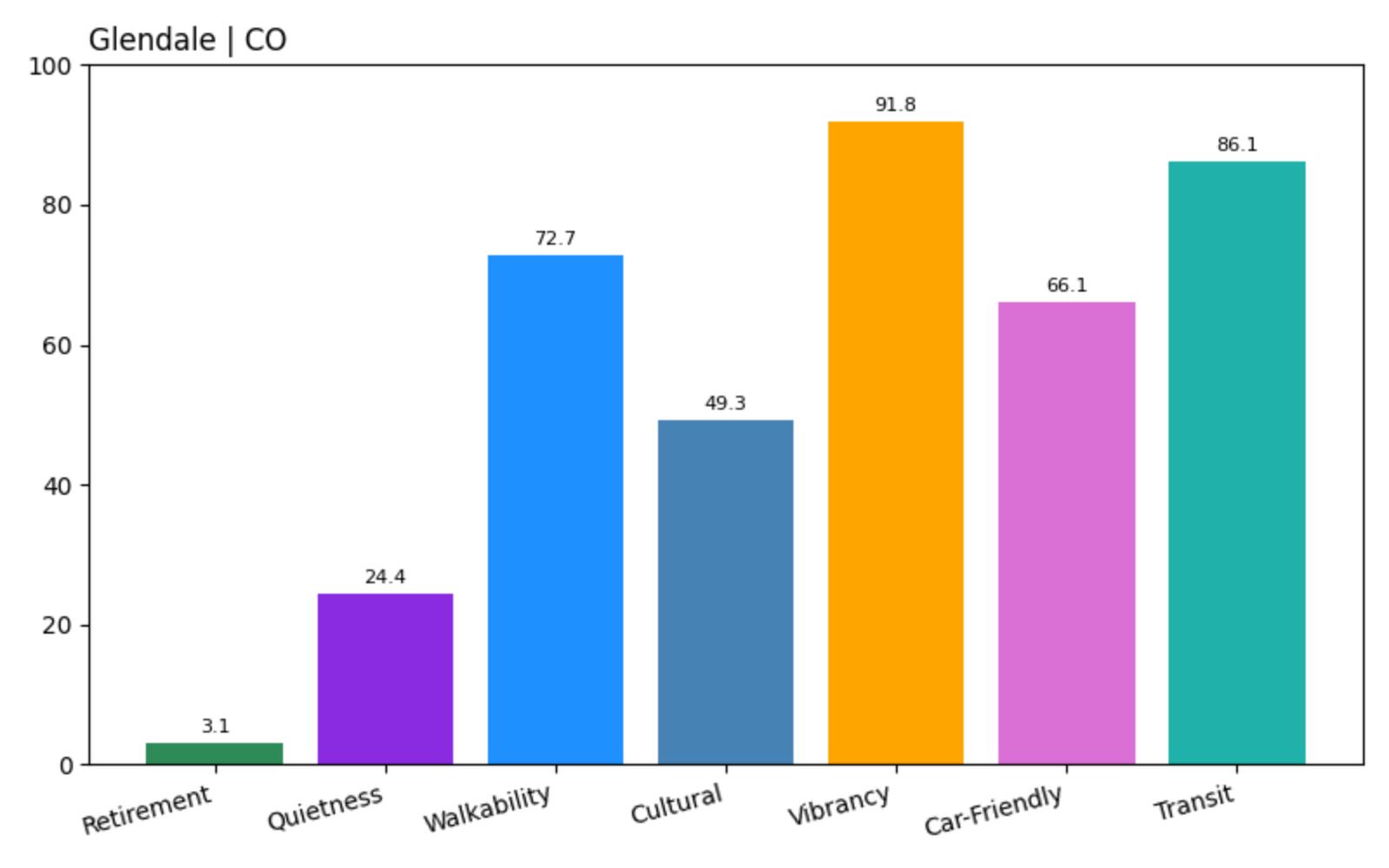
- Overall Retirement Score: 3.07
- Quietness: 24.37
- Walkability: 72.67
- Cultural: 49.27
- Vibrancy: 91.83
- Car-Friendly: 66.09
- Transit: 86.07
Glendale’s exceptional vibrancy, transit, and walkability scores reflect prime urban location with comprehensive city access and constant activity. However, the extremely low quietness score indicates persistent urban noise that dominates all residential areas. While urban enthusiasts might appreciate the energy and access, retirees seeking any level of residential peace will find the constant intensity and noise levels completely intolerable for comfortable daily living.

